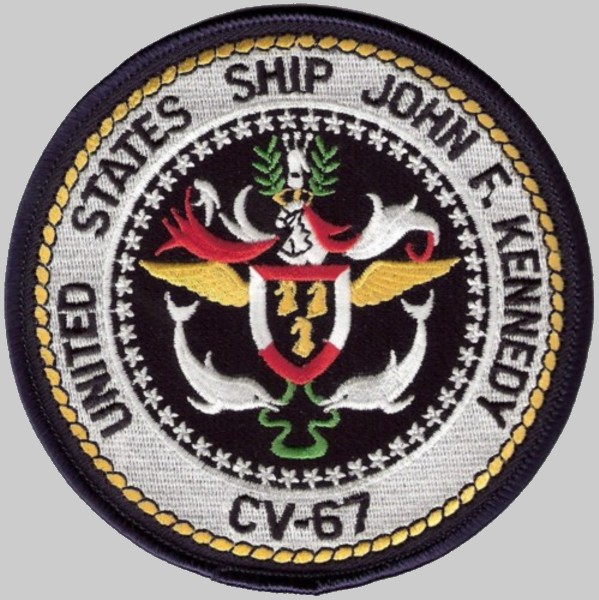 |
||
|
HOME
|
US Navy -
ships
|
US Navy - air
units
|
USMC - air
units
|
International
Navies
|
Weapon Systems
|
Special Reports |
||
|
US Navy - Aircraft Carrier CV 67 - USS John F. Kennedy |
||
|
||
| 12/23 | ||
|
||
|
|
||
|
Deployments / Carrier Air Wings embarked: November 1968 - December 1968 with Carrier Air Wing 1 (CVW-1) - shakedown cruise - Caribbean Sea April 1969 - December 1969 with Carrier Air Wing 1 (CVW-1) - Mediterranean Sea September 1970 - March 1971 with Carrier Air Wing 1 (CVW-1) - Mediterranean Sea November 1971 - September 1972 with Carrier Air Wing 1 (CVW-1) - Mediterranean Sea / Atlantic Ocean September 1972 - October 1972 with Carrier Air Wing 1 (CVW-1) - NATO exercise STRONG EXPRESS, Northern Atlantic April 1973 - December 1973 with Carrier Air Wing 1 (CVW-1) - Mediterranean Sea March 1974 - November 1974: Drydocking Selected Restricted Availability (DSRA) at Norfolk Naval Shipyard June 1975 - January 1976 with Carrier Air Wing 1 (CVW-1) - Mediterranean Sea September 1976 - November 1976 with Carrier Air Wing 1 (CVW-1) - Northern Atlantic Ocean January 1977 - August 1977 with Carrier Air Wing 1 (CVW-1) - Mediterranean Sea June 1978 - February 1979 with Carrier Air Wing 1 (CVW-1) - Mediterranean Sea March 1979 - December 1979: Drydocking Selected Restricted Availability (DSRA) at Norfolk Naval Shipyard August 1980 - March 1981 with Carrier Air Wing 1 (CVW-1) - Mediterranean Sea October 1981 - December 1981 with Carrier Air Wing 3 (CVW-3) - Caribbean Sea January 1982 - July 1982 with Carrier Air Wing 3 (CVW-3) - Mediterranean Sea, Indian Ocean April 1983 - July 1983 with Carrier Air Wing 3 (CVW-3) - Northern Atlantic Ocean September 1983 - May 1984 with Carrier Air Wing 3 (CVW-3) - Mediterranean Sea September 1984 - September 1985: Drydocking Selected Restricted Availability (DSRA) at Norfolk Naval Shipyard August 1986 - March 1987 with Carrier Air Wing 3 (CVW-3) - Mediterranean Sea August 1988 - February 1989 with Carrier Air Wing 3 (CVW-3) - Mediterranean Sea August 1990 - March 1991 with Carrier Air Wing 3 (CVW-3) - Operation DESERT SHIELD & DESERT STORM October 1992 - April 1993 with Carrier Air Wing 3 (CVW-3) - Mediterranean Sea September 1993 - September 1995: Complex Overhaul at Philadelphia Naval Shipyard May 1996 - Jule 1996 with Carrier Air Wing 8 (CVW-8) - Northern Atlantic Ocean April 1997 - October 1997 with Carrier Air Wing 8 (CVW-8) - Mediterranean Sea, Persian Gulf September 1999 - March 2000 with Carrier Air Wing 1 (CVW-1) - Mediterranean Sea, Persian Gulf February 2002 - August 2002 with Carrier Air Wing 7 (CVW-7) - Mediterranean Sea, Arabian Sea January 2003 - October 2003: Extended Service Repair Availability at Naval Station Mayport, Florida June 2004 - December 2004 with Carrier Air Wing 17 (CVW-17) - Mediterranean Sea, Persian Gulf >> full USS John F. Kennedy (CV 67) history 1968-2007 << |
||
| images | ||
|
On 16 January 2025, John F. Kennedy started her final voyage to Brownville, Texas where it will be scrapped 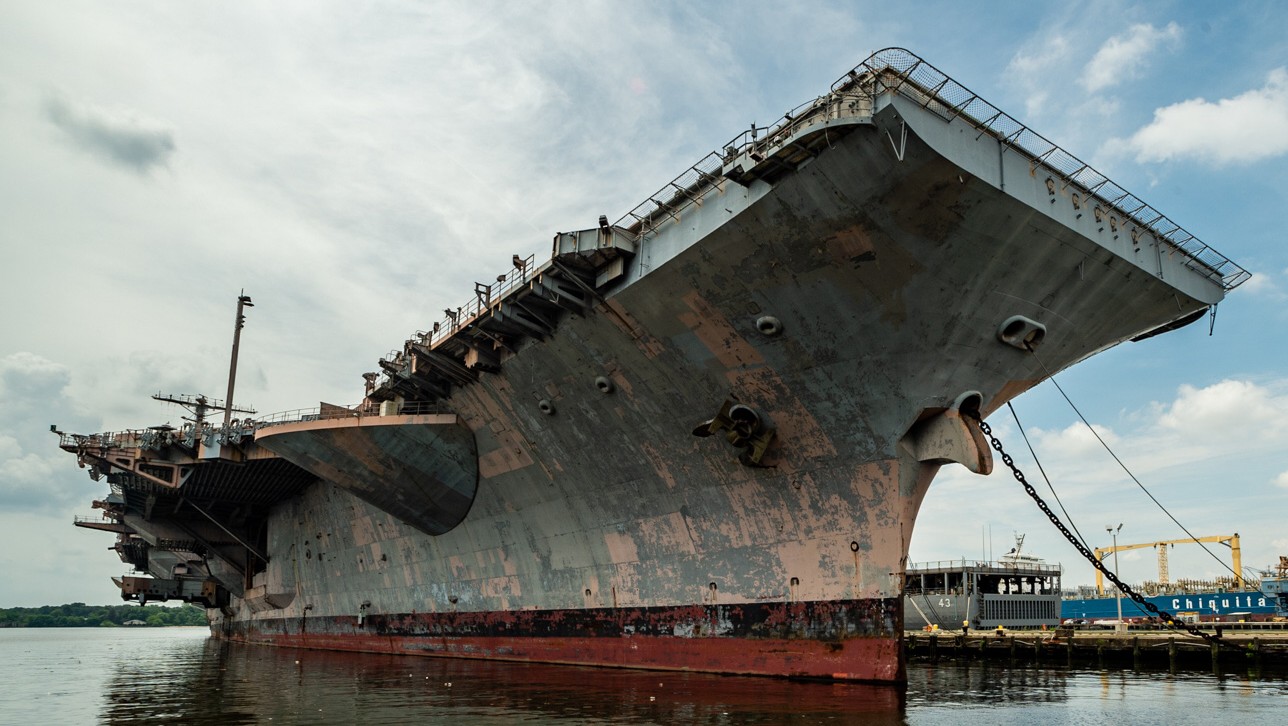 laid up at the Navy Inactive Ships Maintenance Facility (NISMF) Philadelphia, Pennsylvania - June 2021 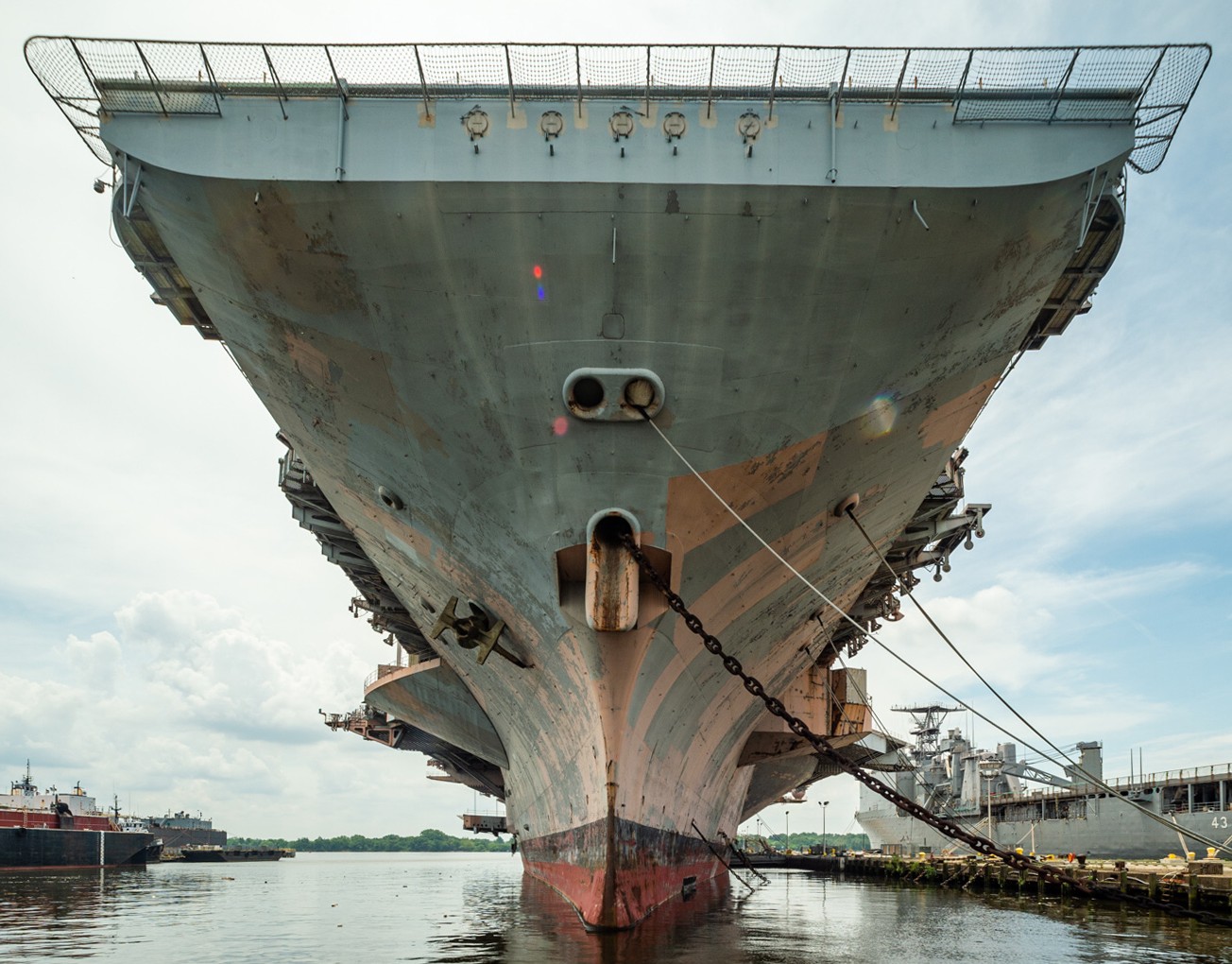 laid up at the Navy Inactive Ships Maintenance Facility (NISMF) Philadelphia, Pennsylvania - June 2021 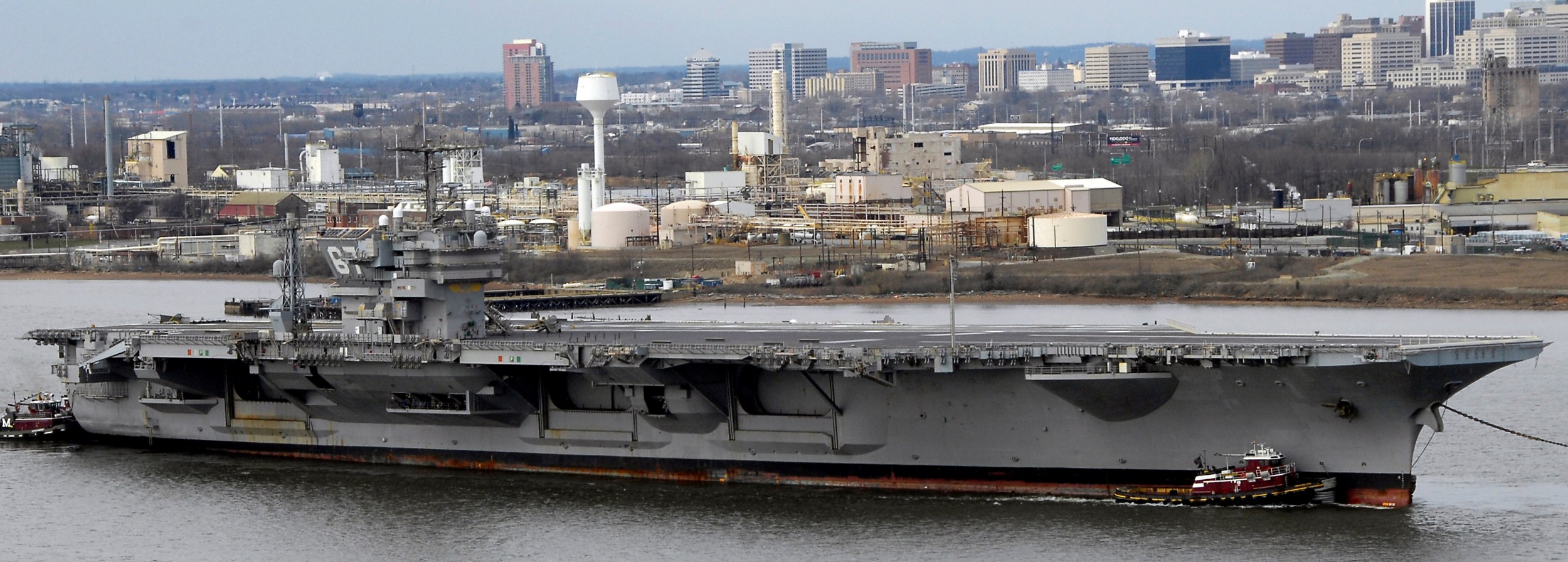 The decommissioned aircraft carrier ex USS John F. Kennedy (CV 67) is towed Saturday, March 22, 2008 into the Port of Philadelphia, Pennsylvania to join other decommissioned ships at the Navy Inactive Ships Maintenance Facility (NISMF)  The decommissioned aircraft carrier ex USS John F. Kennedy (CV 67) is towed Saturday, March 22, 2008 into the Port of Philadelphia, Pennsylvania to join other decommissioned ships at the Navy Inactive Ships Maintenance Facility (NISMF) 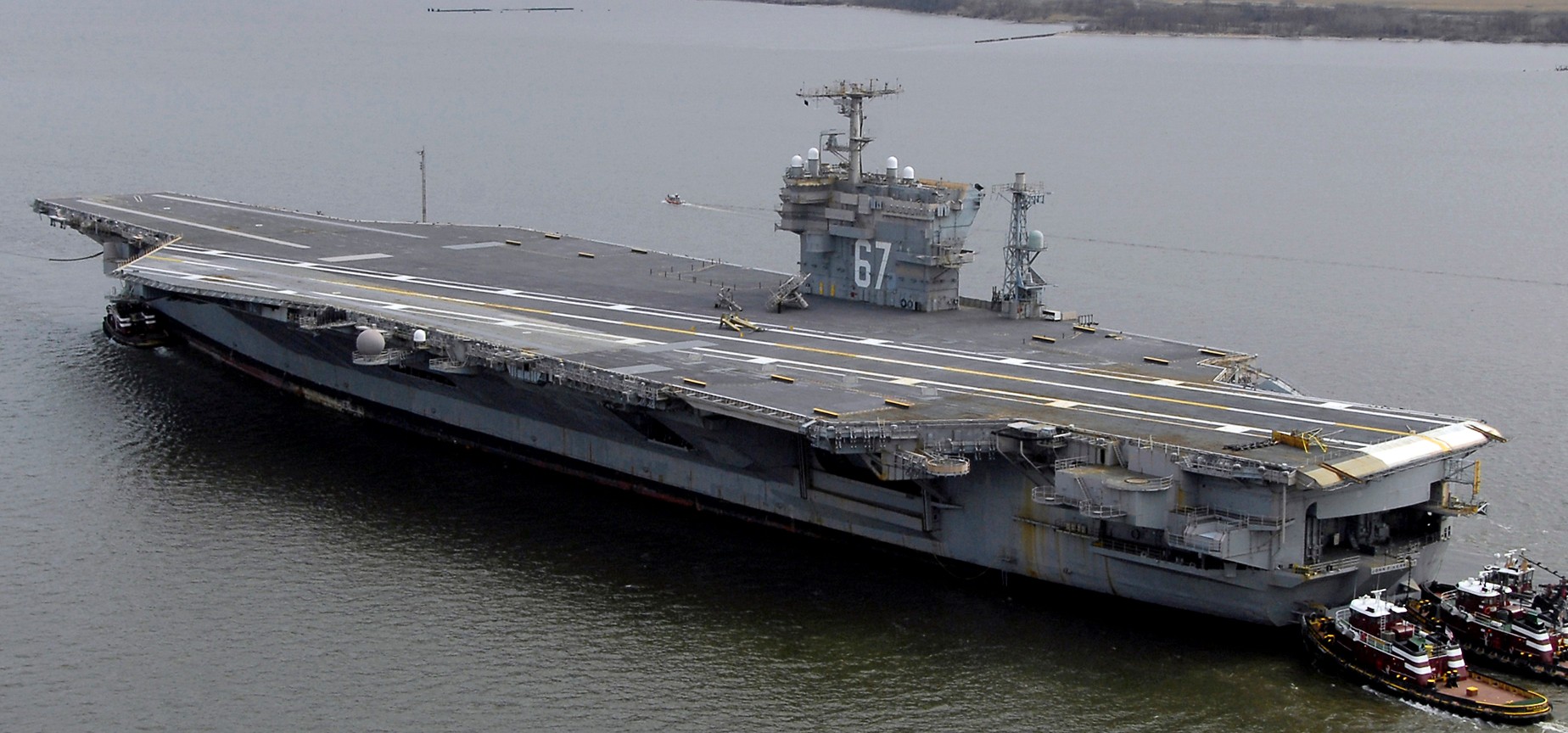 The decommissioned aircraft carrier ex USS John F. Kennedy (CV 67) is towed Saturday, March 22, 2008 into the Port of Philadelphia, Pennsylvania to join other decommissioned ships at the Navy Inactive Ships Maintenance Facility (NISMF)  The decommissioned aircraft carrier ex USS John F. Kennedy (CV 67) is towed Saturday, March 22, 2008 into the Port of Philadelphia, Pennsylvania to join other decommissioned ships at the Navy Inactive Ships Maintenance Facility (NISMF) 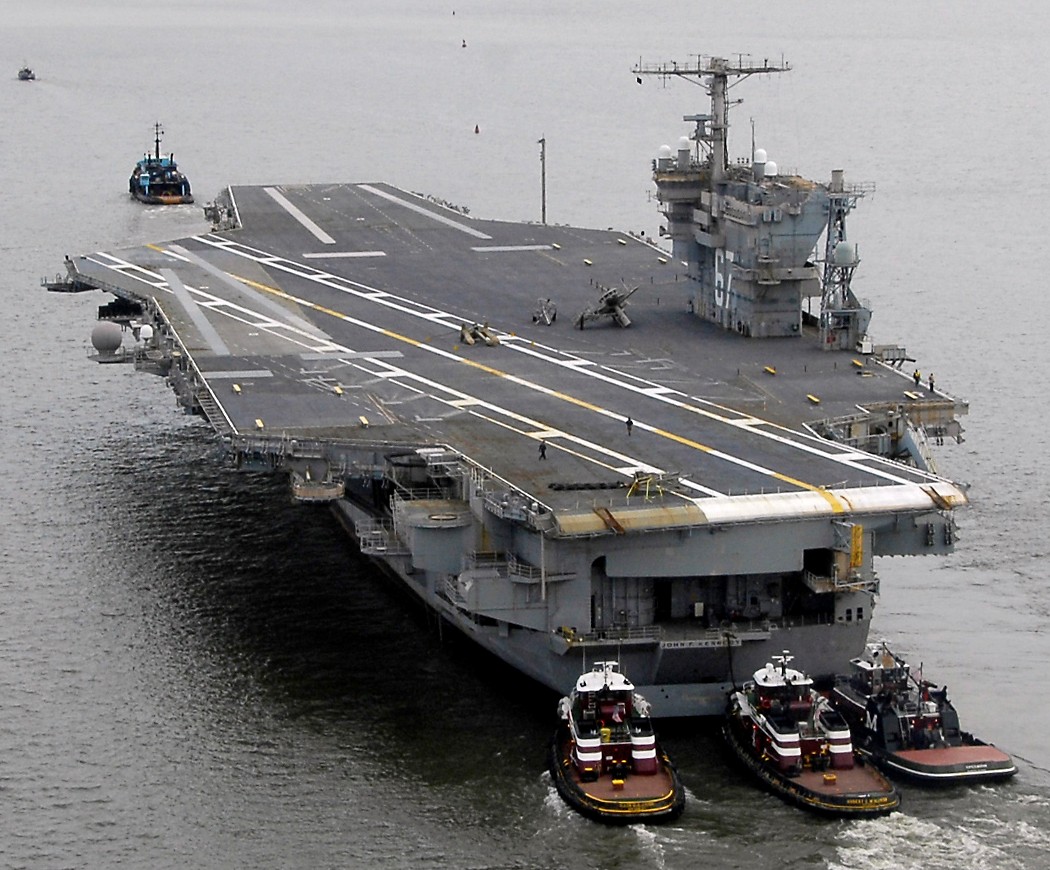 The decommissioned aircraft carrier ex USS John F. Kennedy (CV 67) is towed Saturday, March 22, 2008 into the Port of Philadelphia, Pennsylvania to join other decommissioned ships at the Navy Inactive Ships Maintenance Facility (NISMF) 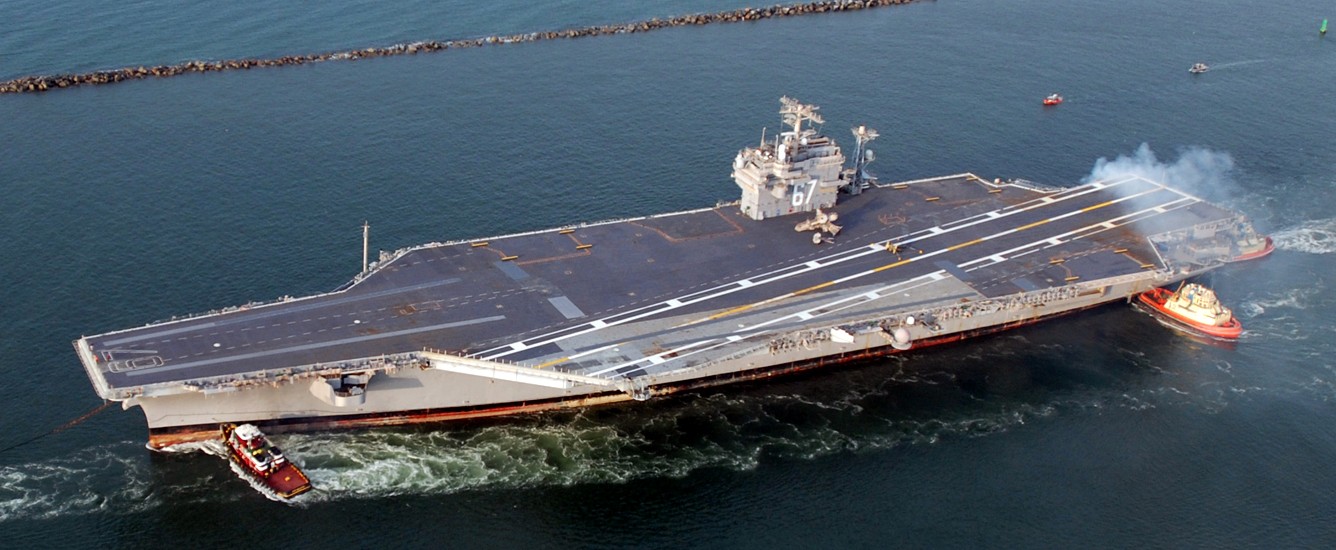 Decommissioned aircraft carrier John F. Kennedy (CV 67) departs Naval Station Mayport en route to Norfolk, Virginia. Homeported at Naval Station Mayport since 1995, the ship will be towed to Hampton Roads until the ship can be transferred to the Navy Inactive Ship Maintenance Facility in Philadelphia - July 26, 2007  Decommissioned aircraft carrier John F. Kennedy (CV 67) departs Naval Station Mayport en route to Norfolk, Virginia. Homeported at Naval Station Mayport since 1995, the ship will be towed to Hampton Roads until the ship can be transferred to the Navy Inactive Ship Maintenance Facility in Philadelphia - July 26, 2007 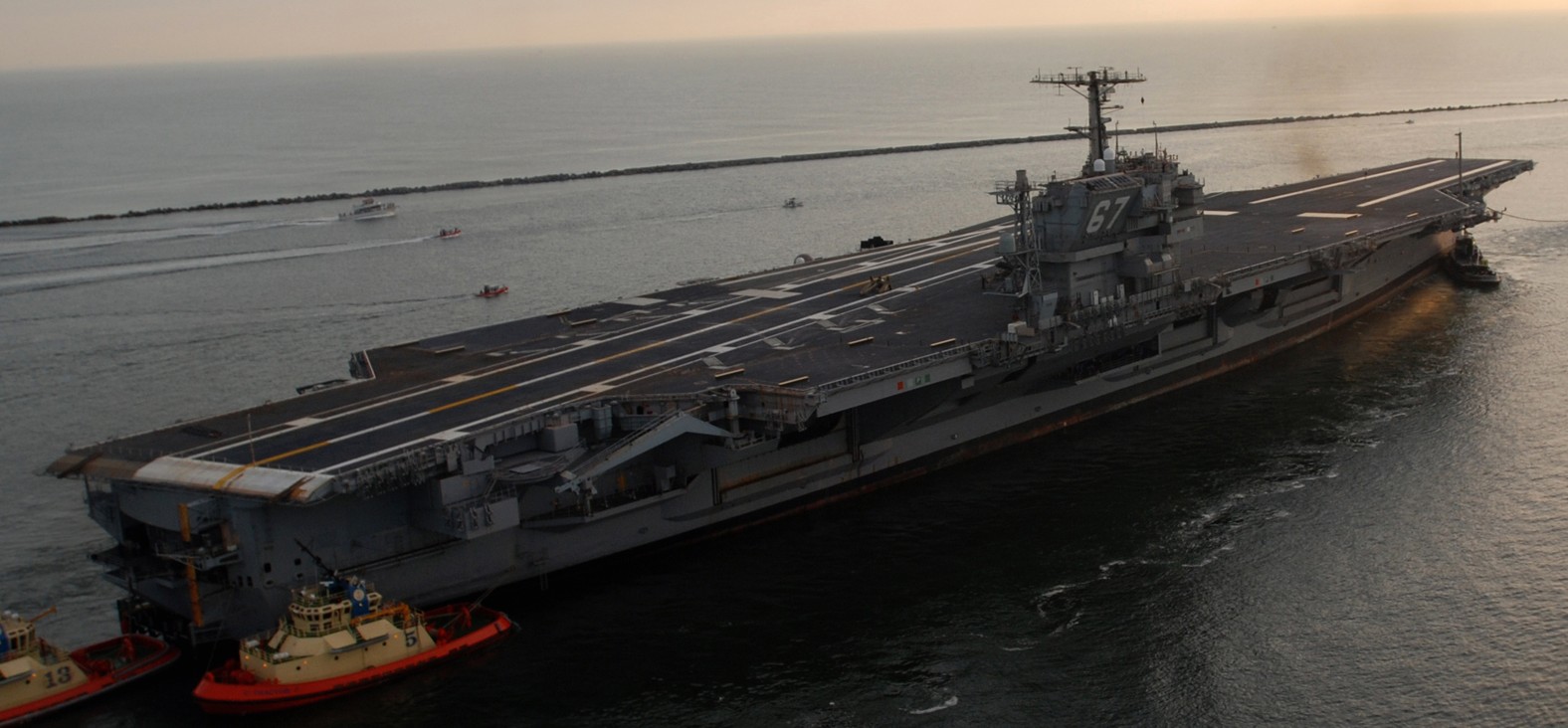 Decommissioned aircraft carrier John F. Kennedy (CV 67) departs Naval Station Mayport en route to Norfolk, Virginia. Homeported at Naval Station Mayport since 1995, the ship will be towed to Hampton Roads until the ship can be transferred to the Navy Inactive Ship Maintenance Facility in Philadelphia - July 26, 2007 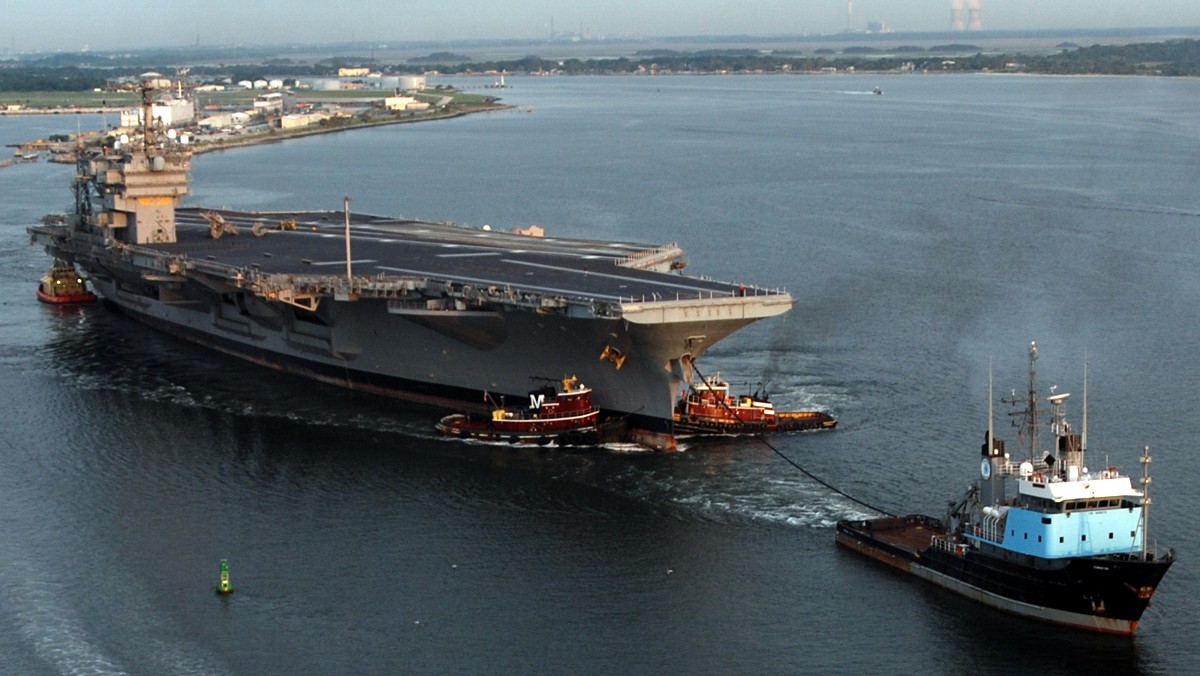 Decommissioned aircraft carrier John F. Kennedy (CV 67) departs Naval Station Mayport en route to Norfolk, Virginia. Homeported at Naval Station Mayport since 1995, the ship will be towed to Hampton Roads until the ship can be transferred to the Navy Inactive Ship Maintenance Facility in Philadelphia - July 26, 2007 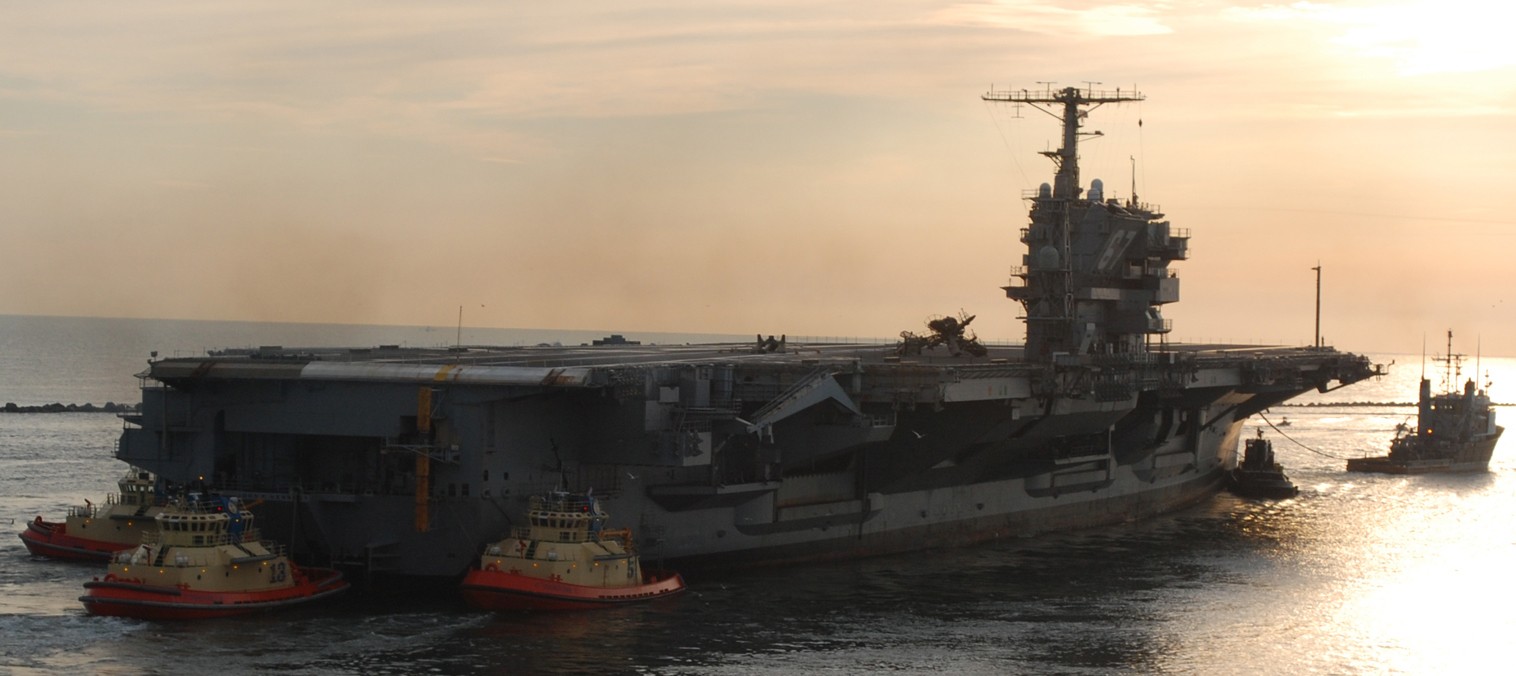 Decommissioned aircraft carrier John F. Kennedy (CV 67) departs Naval Station Mayport en route to Norfolk, Virginia. Homeported at Naval Station Mayport since 1995, the ship will be towed to Hampton Roads until the ship can be transferred to the Navy Inactive Ship Maintenance Facility in Philadelphia - July 26, 2007 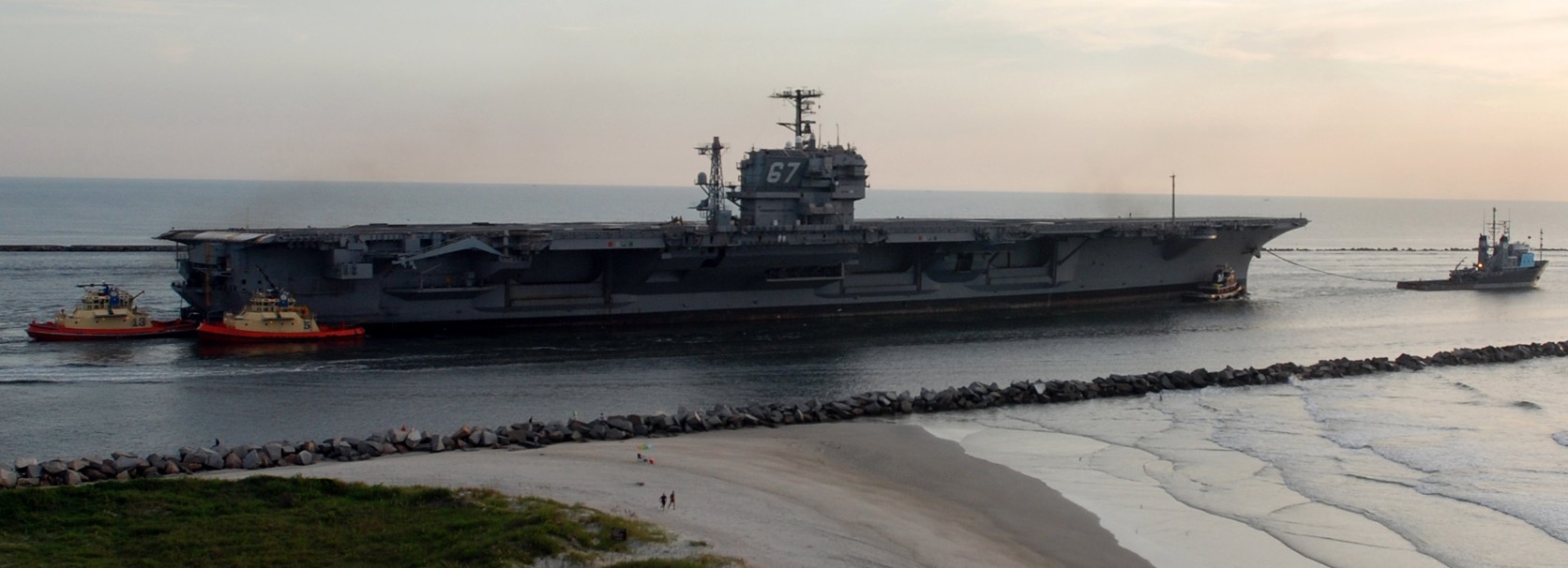 Decommissioned aircraft carrier John F. Kennedy (CV 67) departs Naval Station Mayport en route to Norfolk, Virginia. Homeported at Naval Station Mayport since 1995, the ship will be towed to Hampton Roads until the ship can be transferred to the Navy Inactive Ship Maintenance Facility in Philadelphia - July 26, 2007 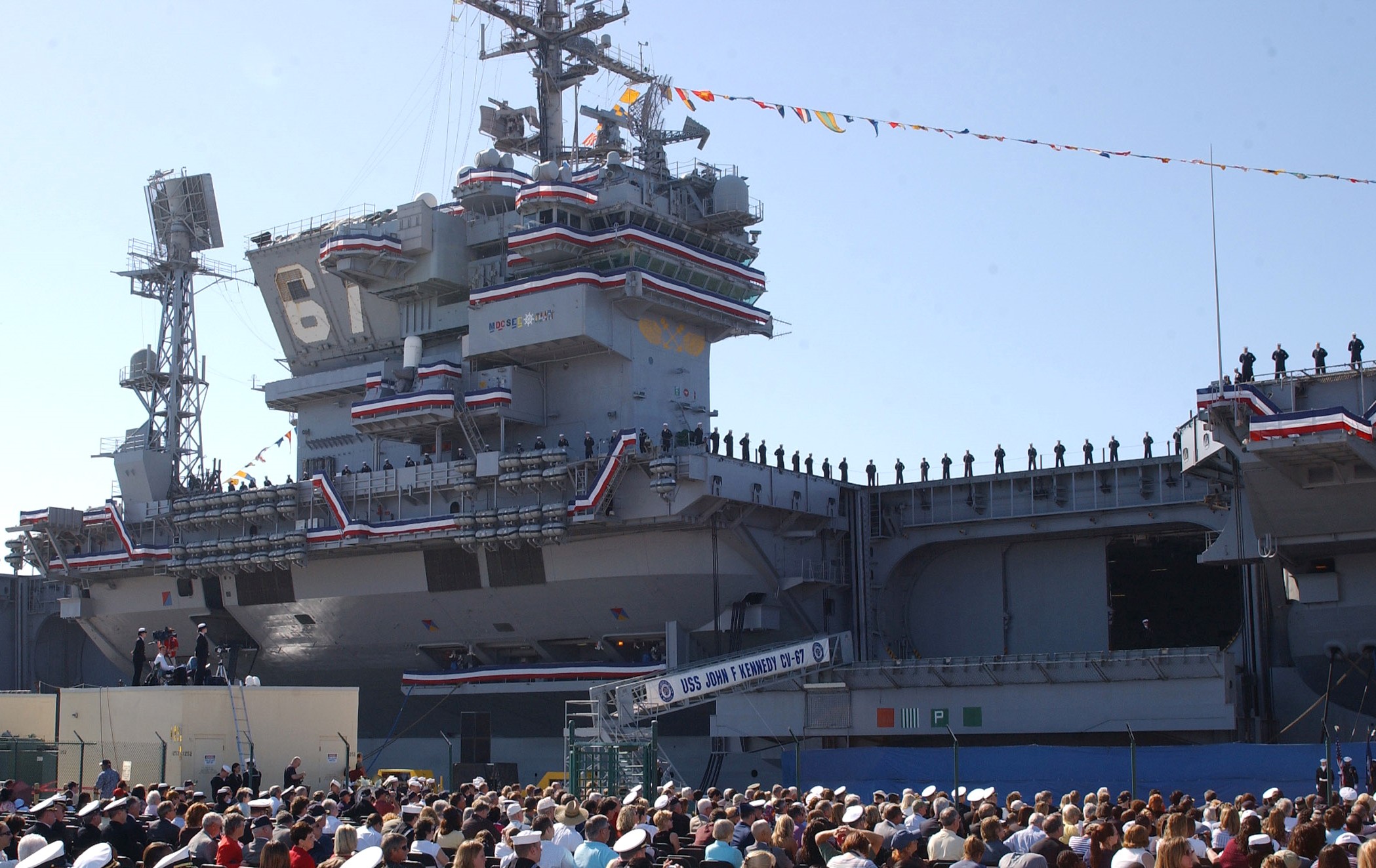 decommissioning ceremony at Naval Station Mayport, Florida - March 23, 2007 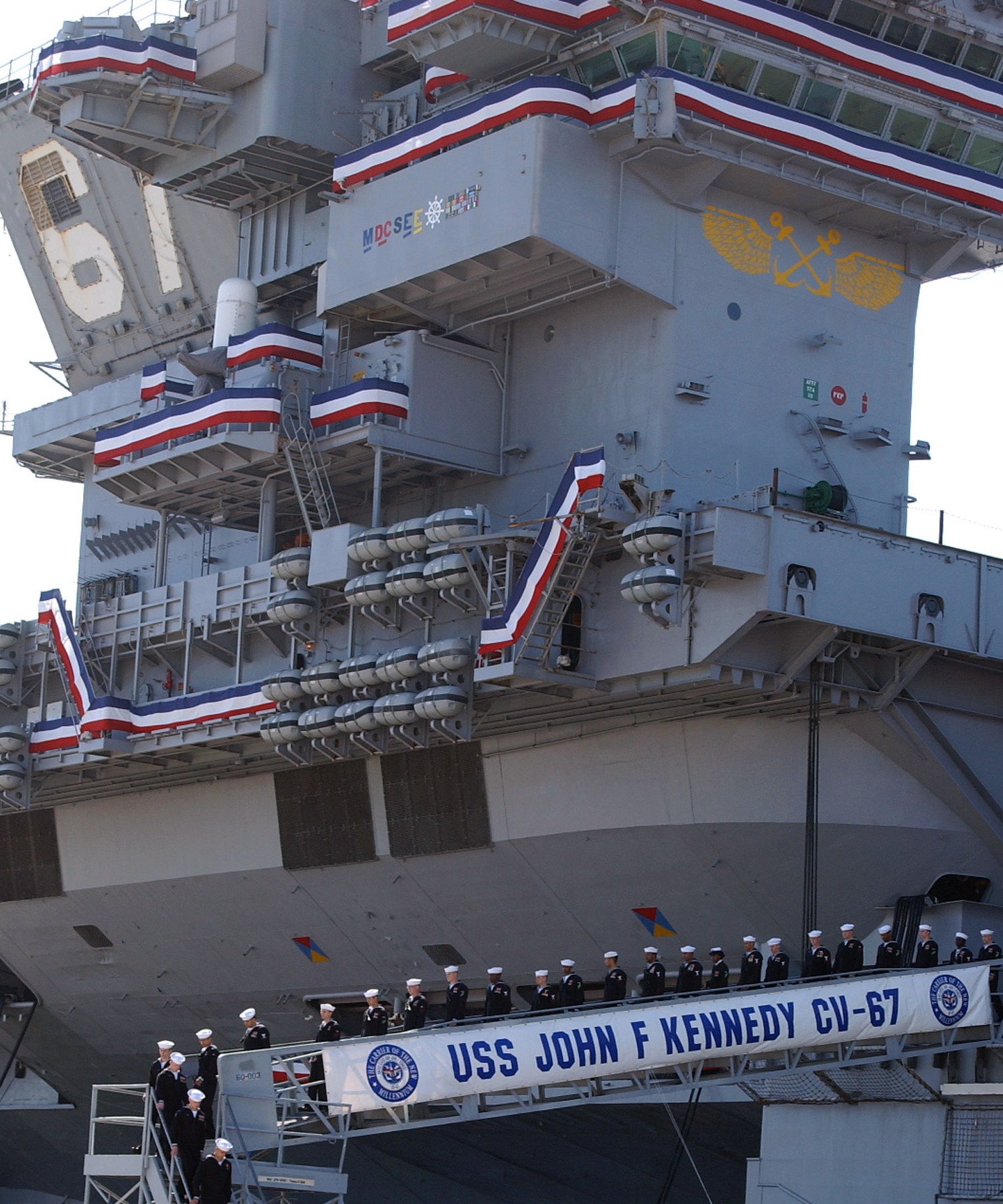 decommissioning ceremony at Naval Station Mayport, Florida - March 23, 2007 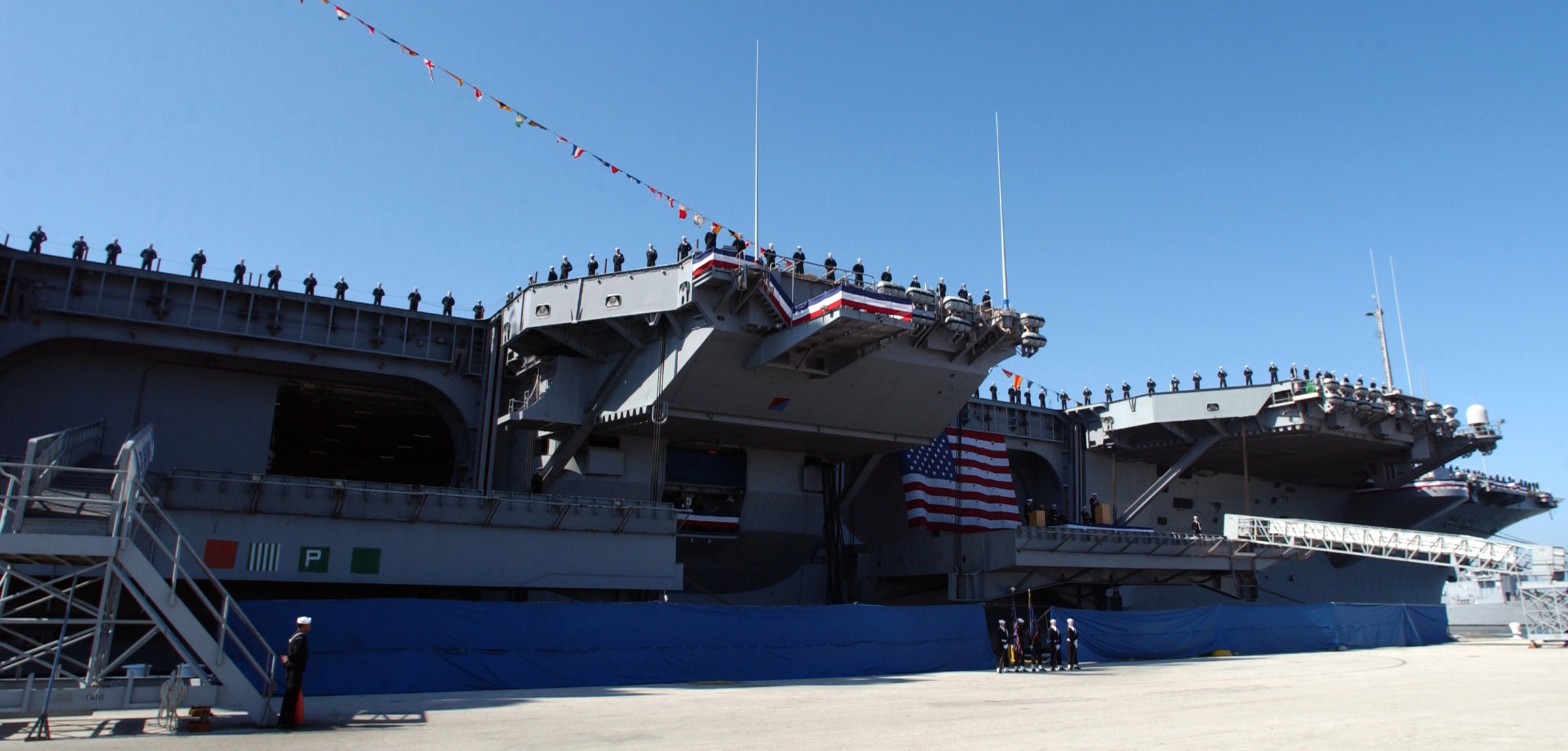 decommissioning ceremony at Naval Station Mayport, Florida - March 23, 2007 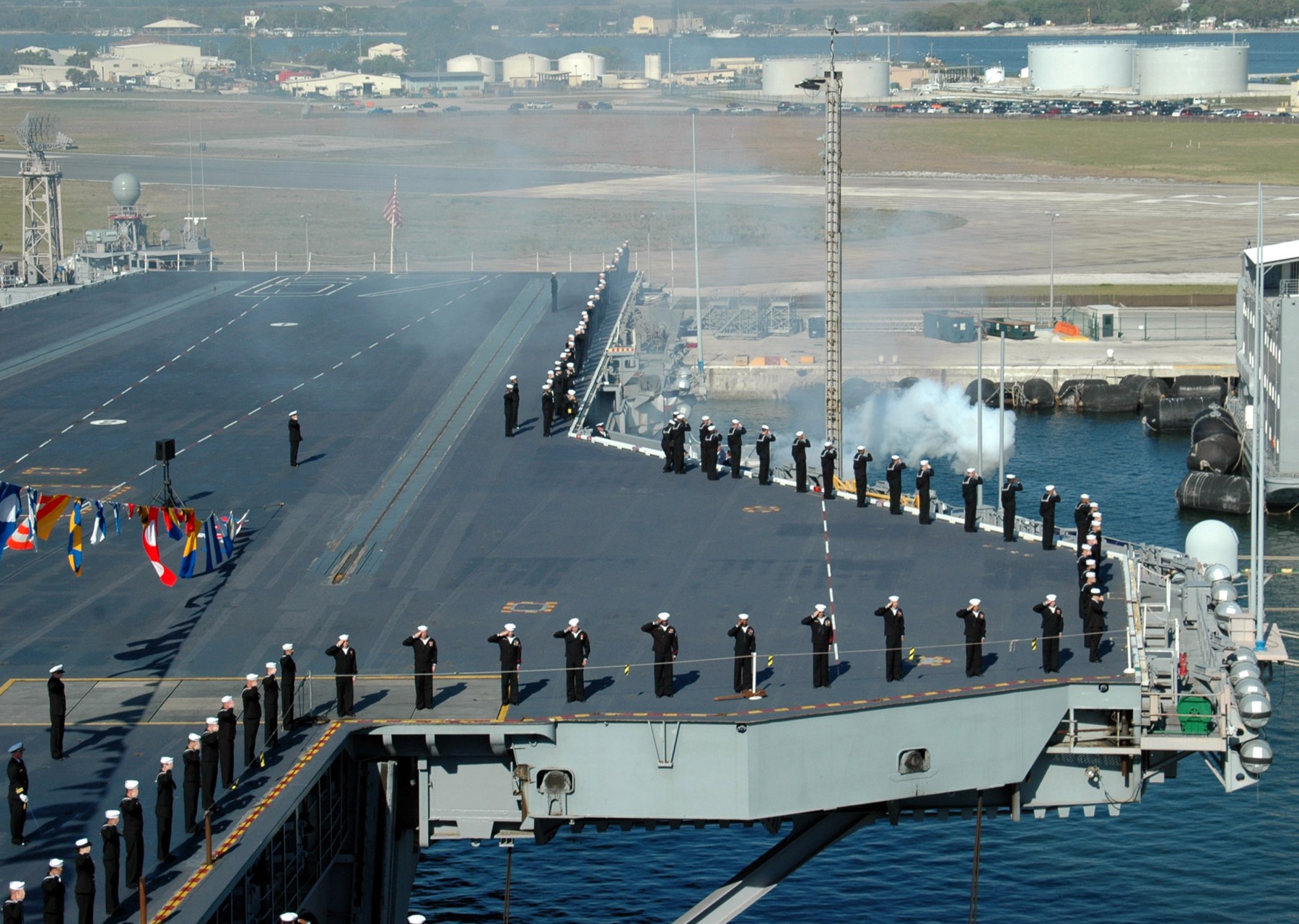 decommissioning ceremony at Naval Station Mayport, Florida - March 23, 2007 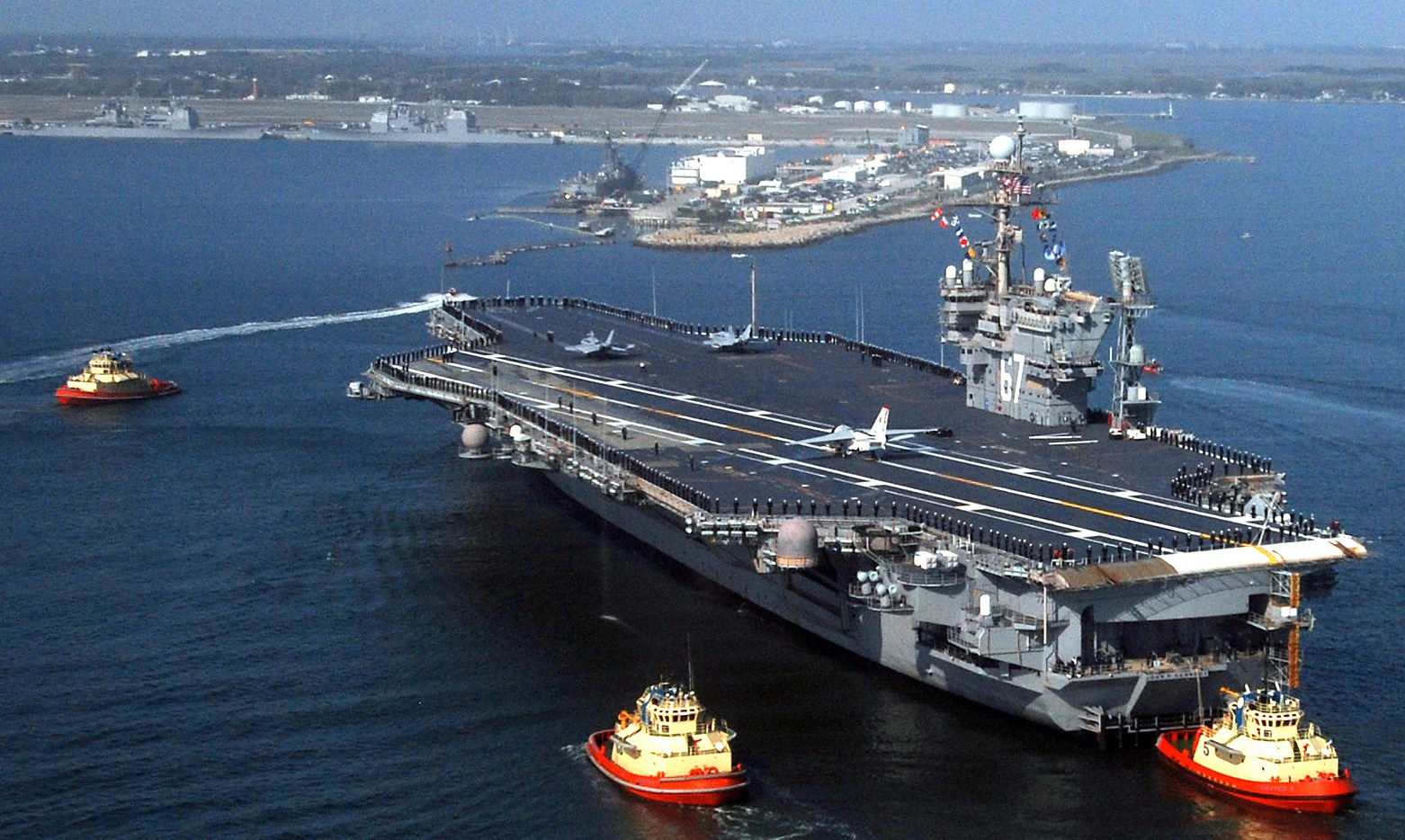 arriving at Naval Station Mayport, Florida for the last time - March 2007 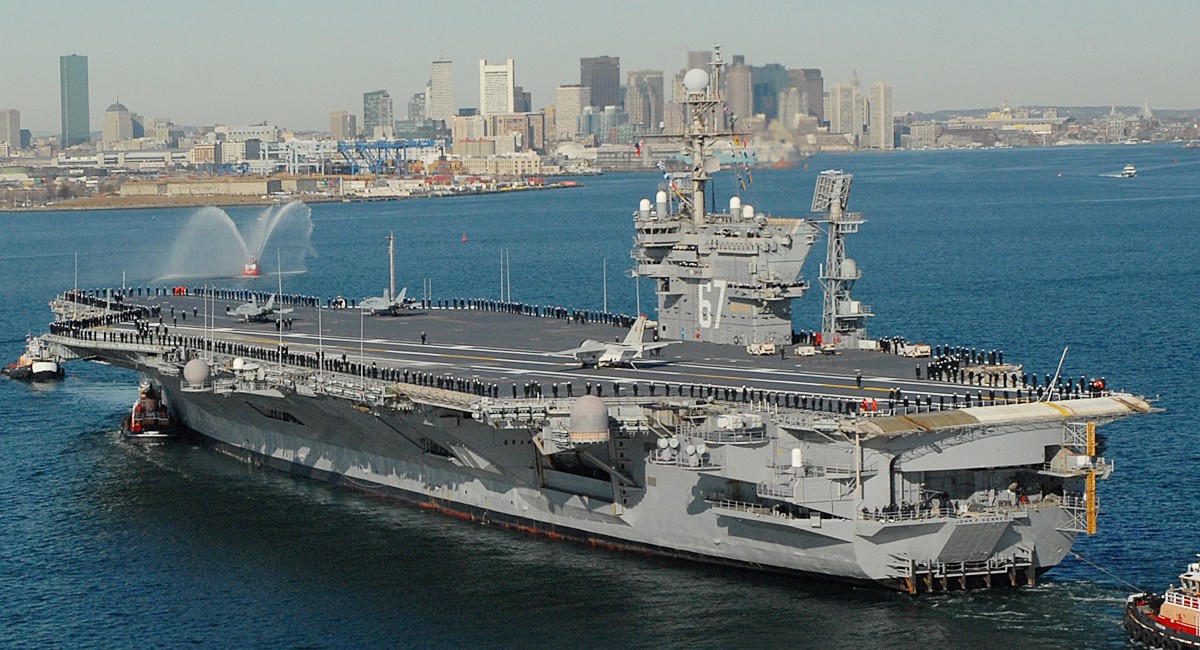 arriving in Boston, Massachusetts for her final port visit - March 2007 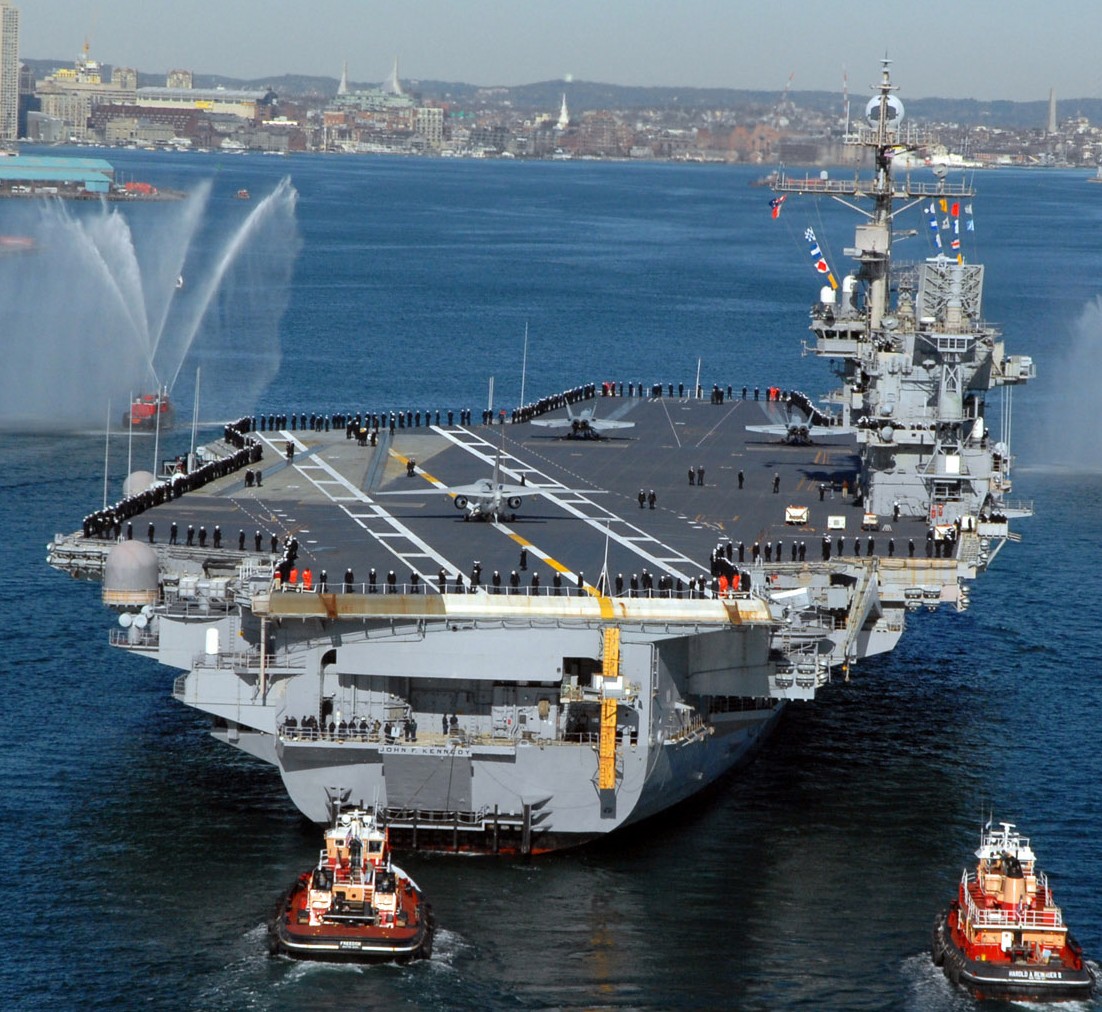 arriving in Boston, Massachusetts for her final port visit - March 2007 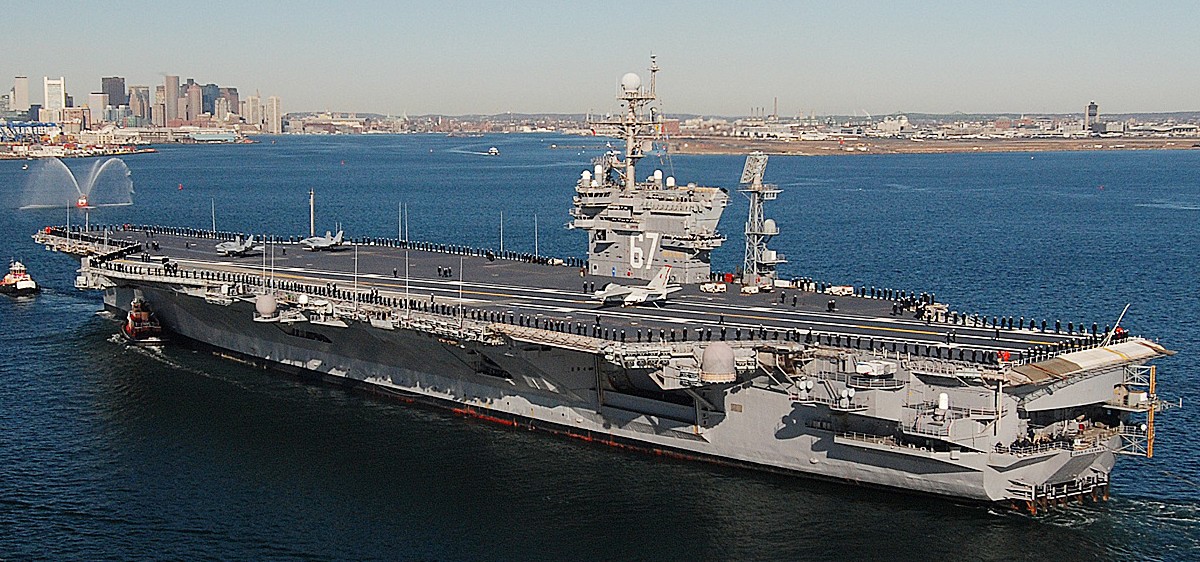 arriving in Boston, Massachusetts for her final port visit - March 2007 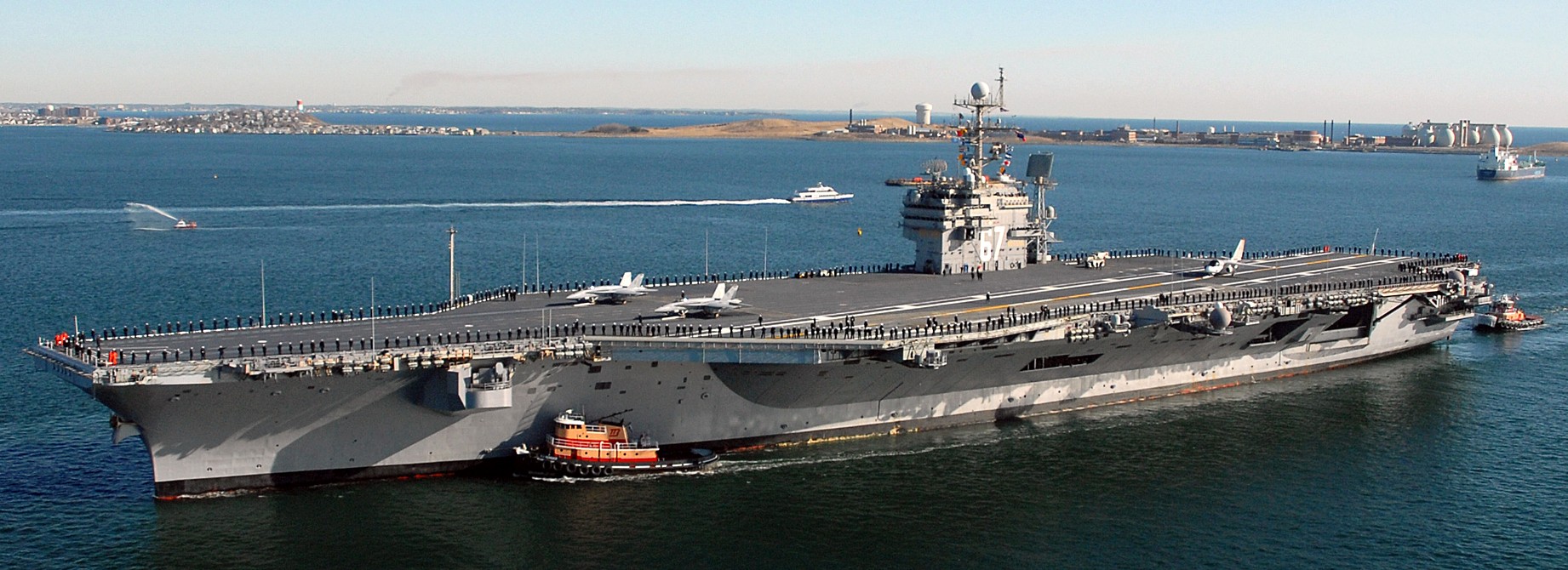 arriving in Boston, Massachusetts for her final port visit - March 2007 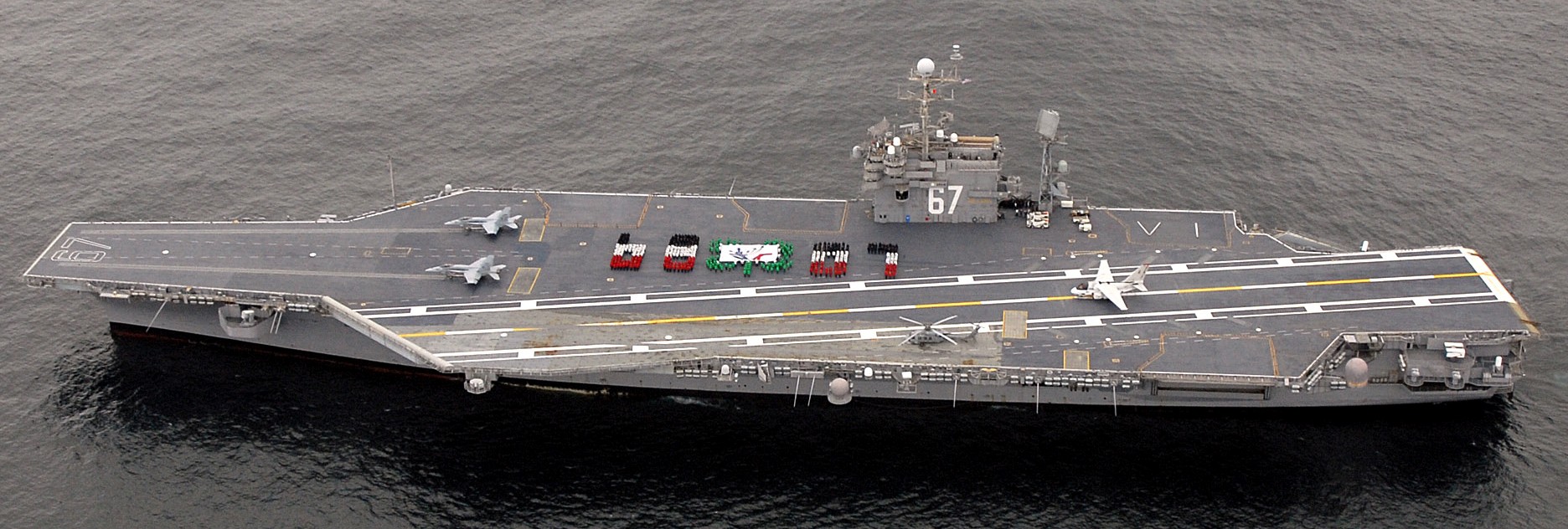 Atlantic Ocean - February 2007 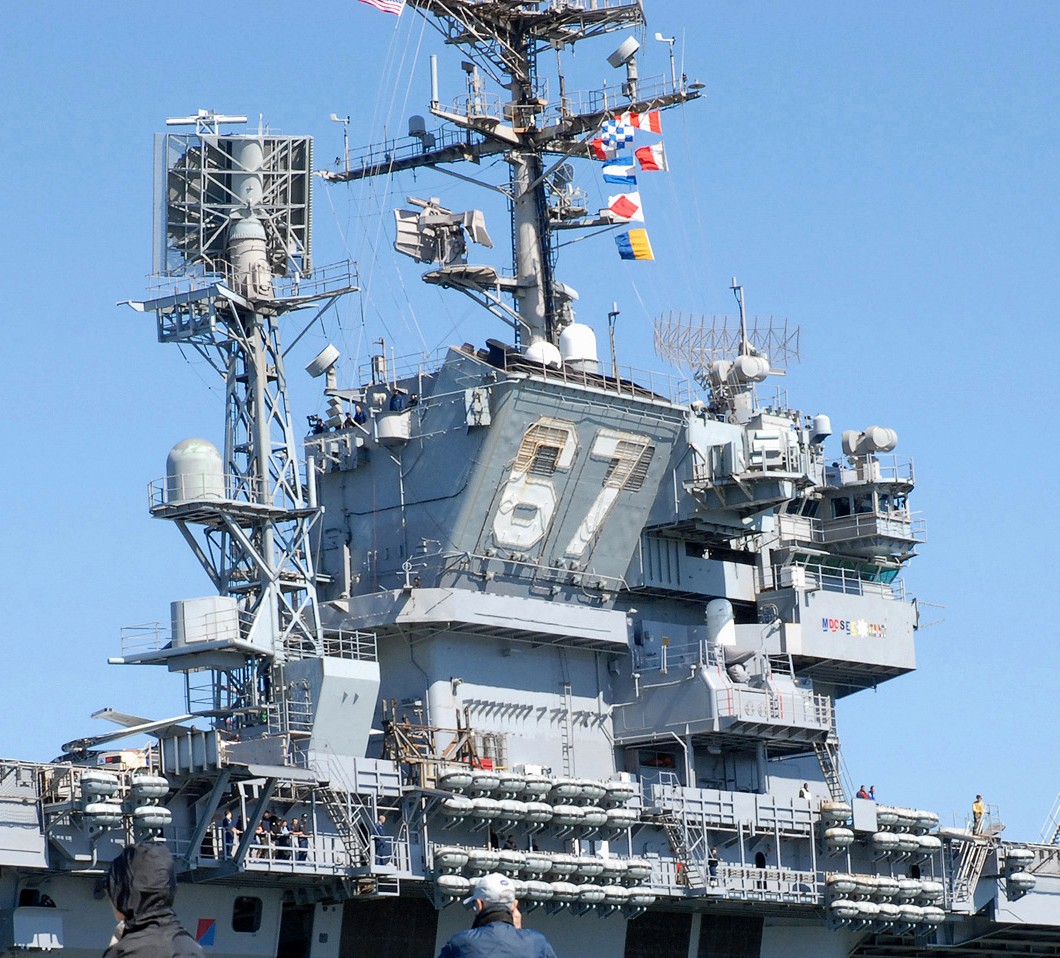 Mayport, Florida - February 2007 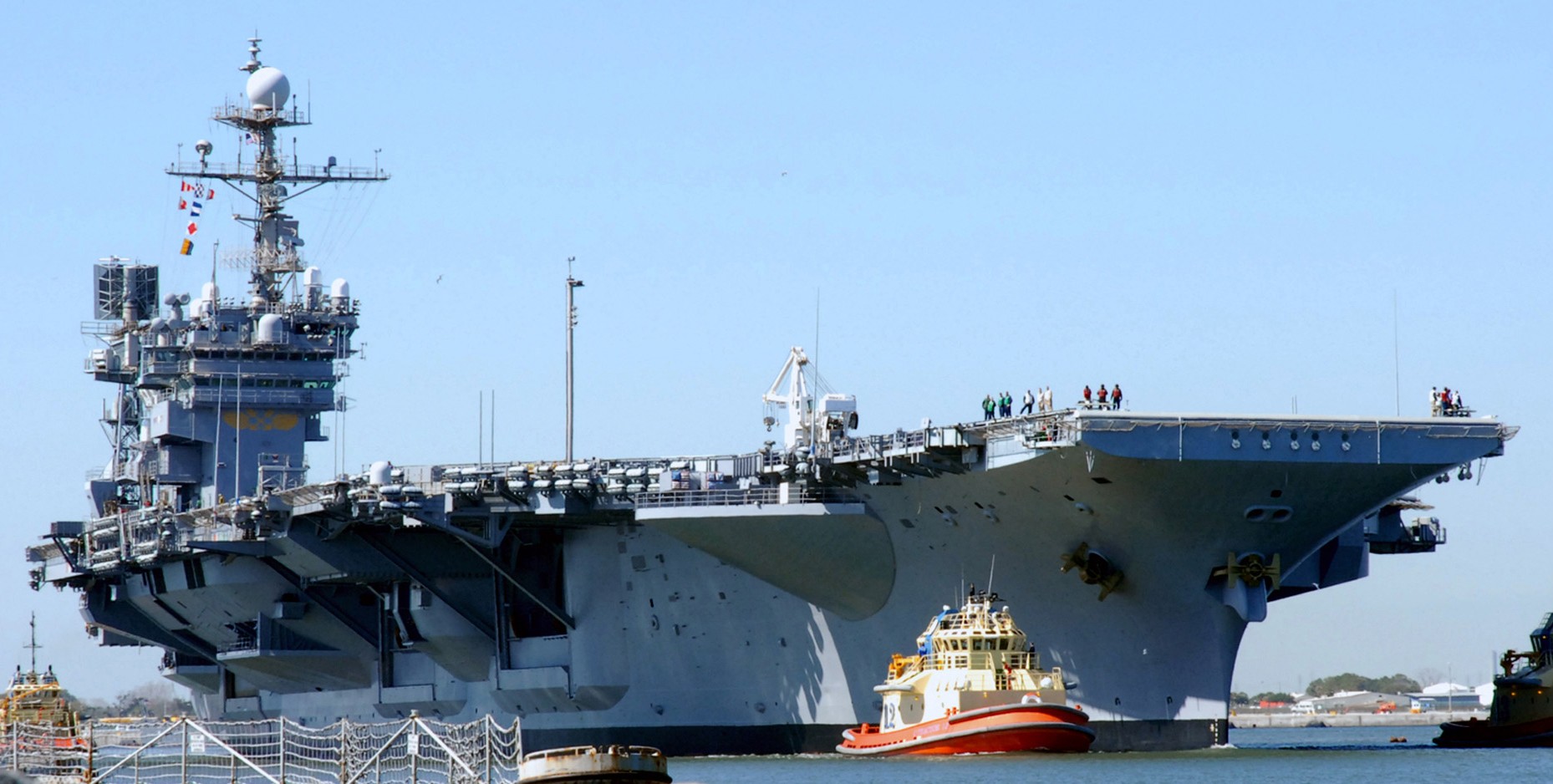 Mayport, Florida - February 2007 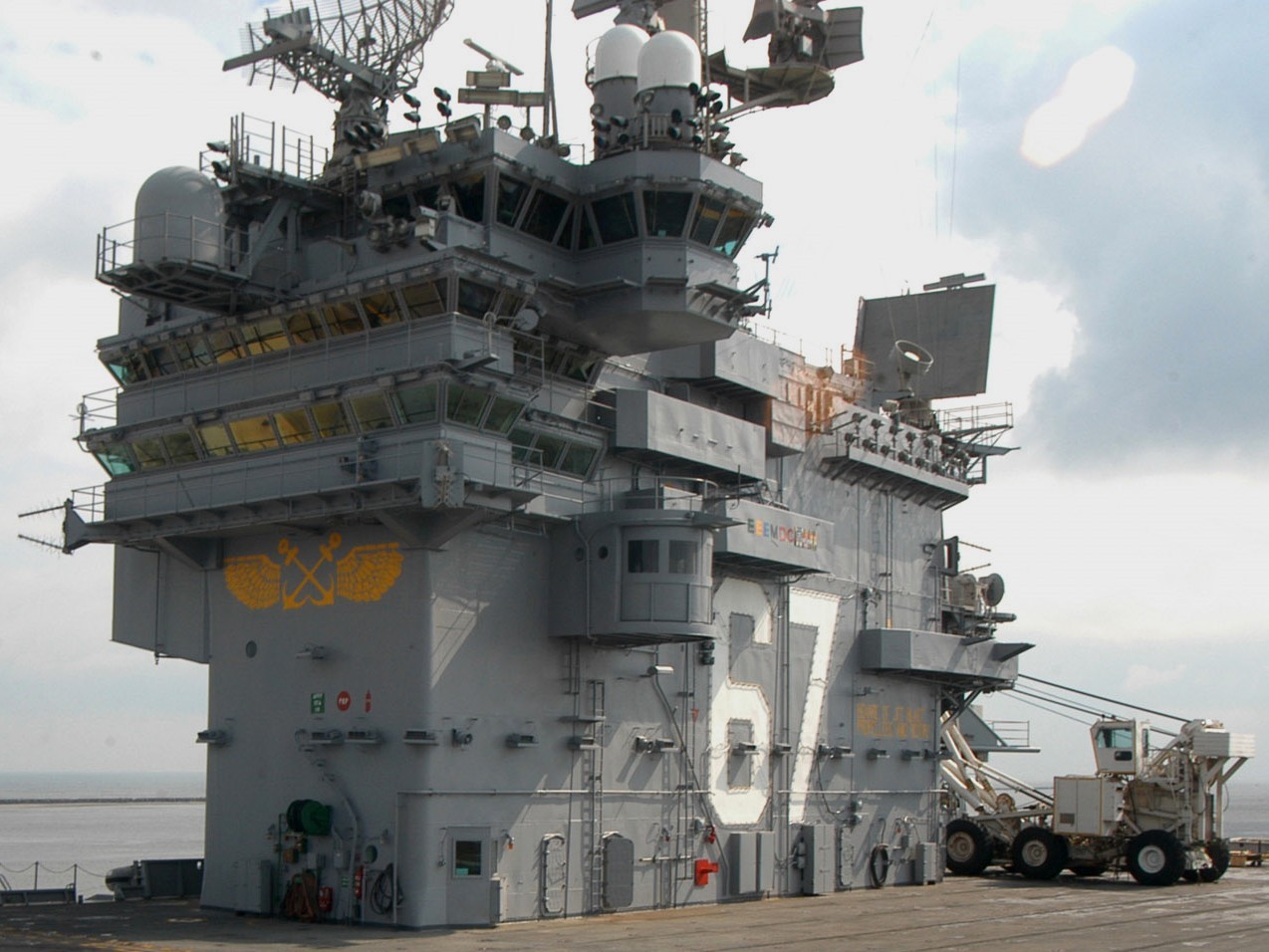 island details - March 2006 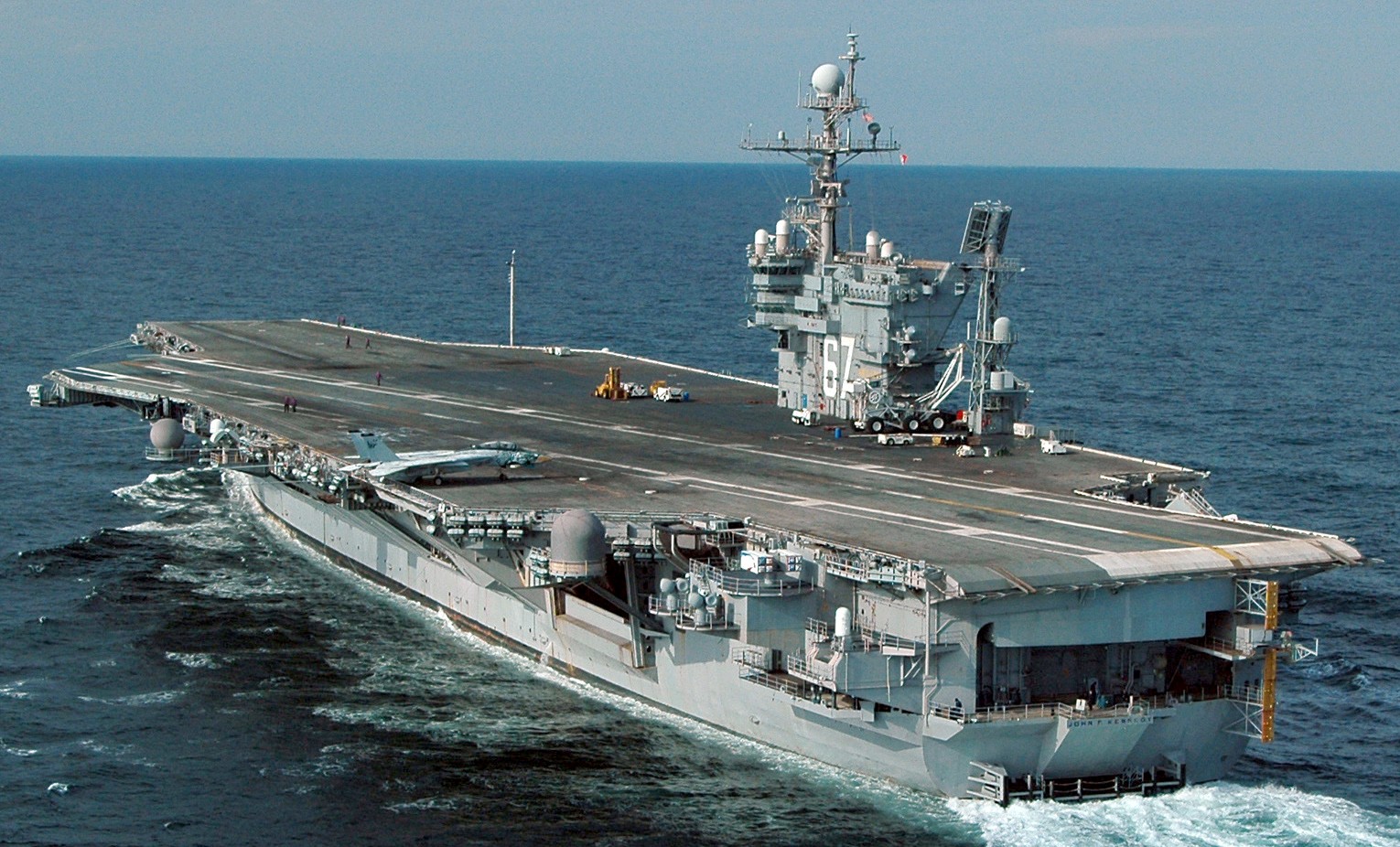 Atlantic Ocean - December 2005 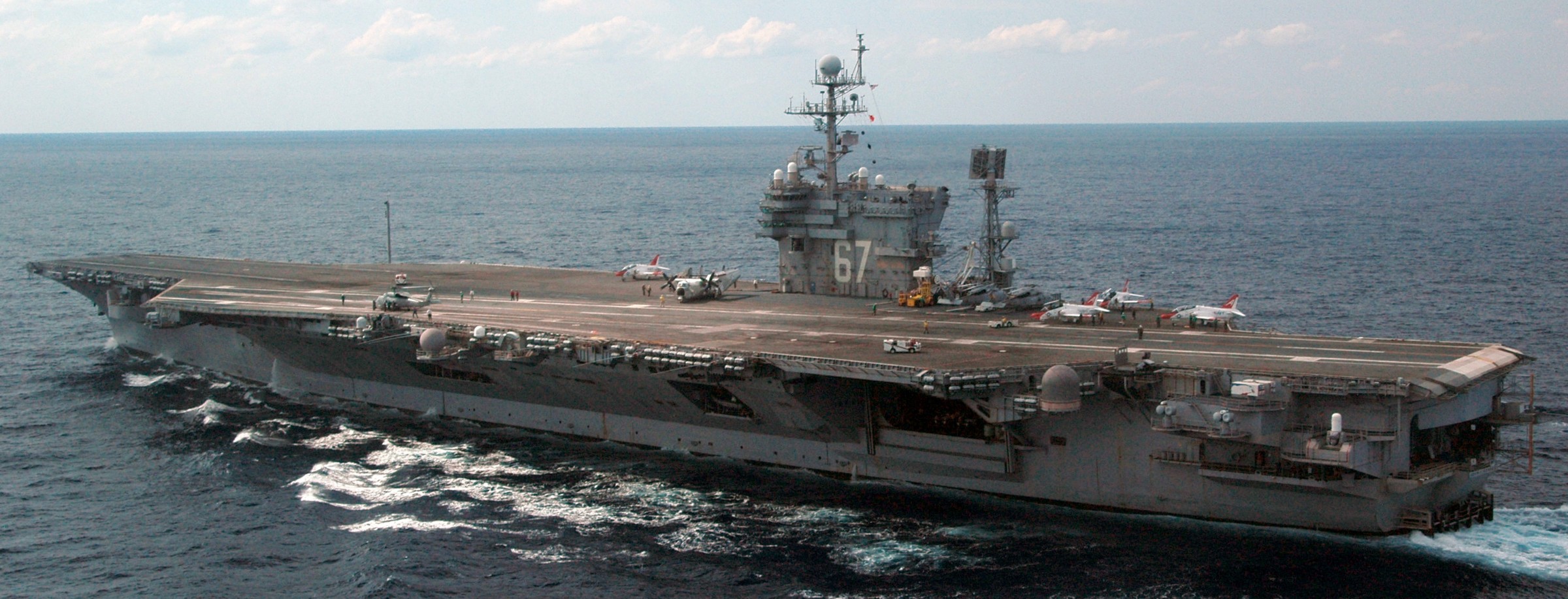 Atlantic Ocean - October 2005 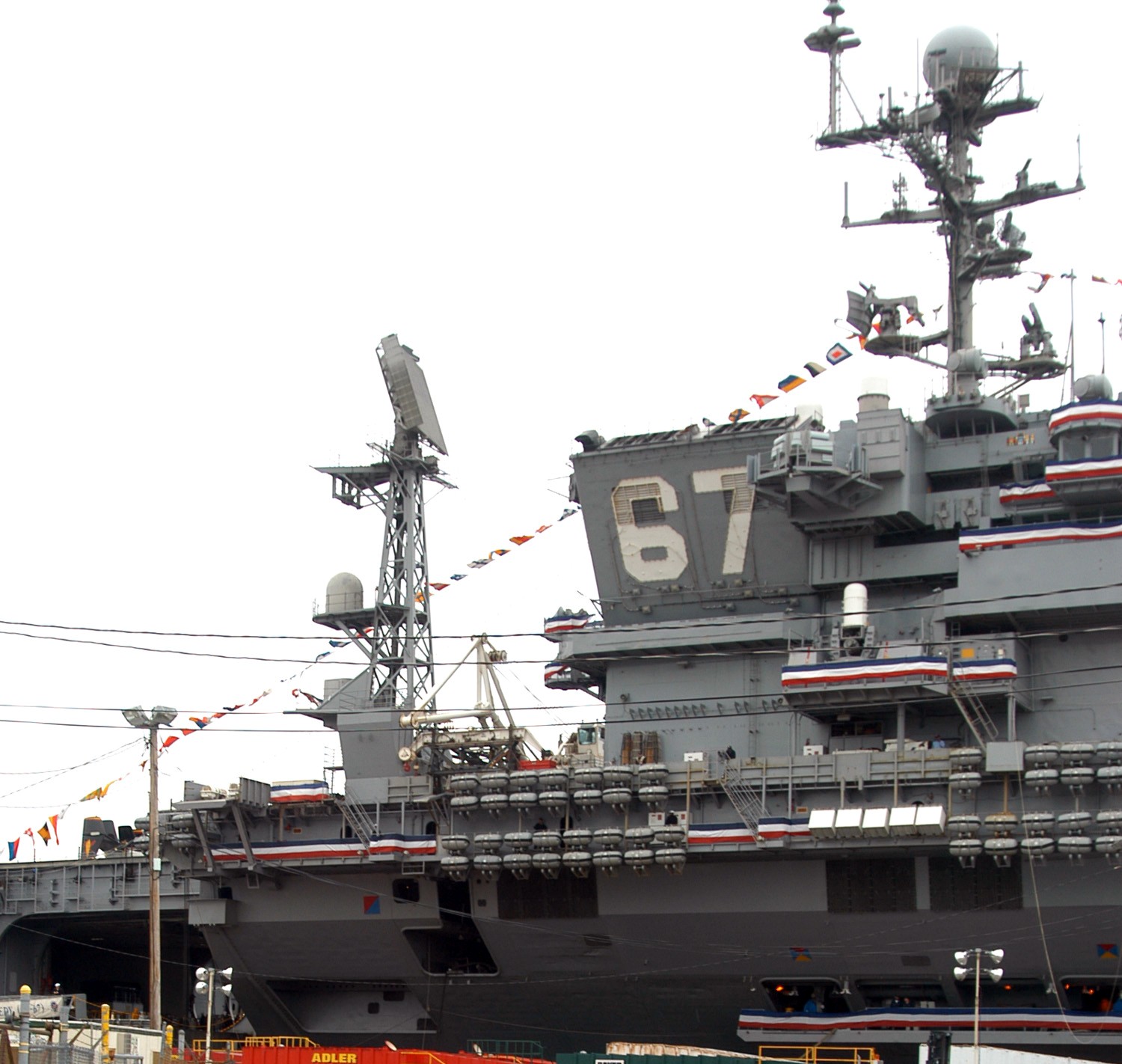 Boston, Massachusetts - May 2005 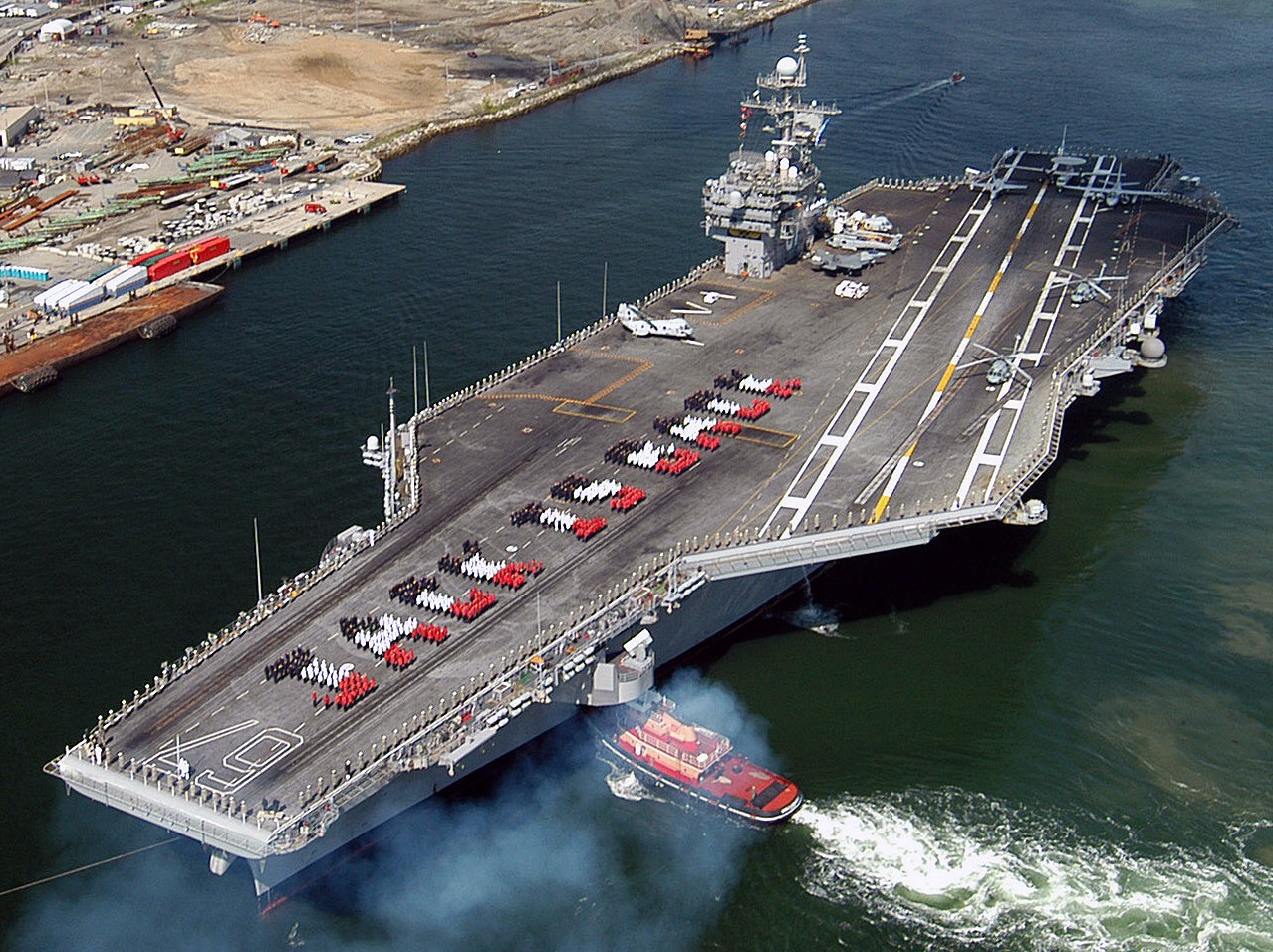 Boston, Massachusetts - May 2005 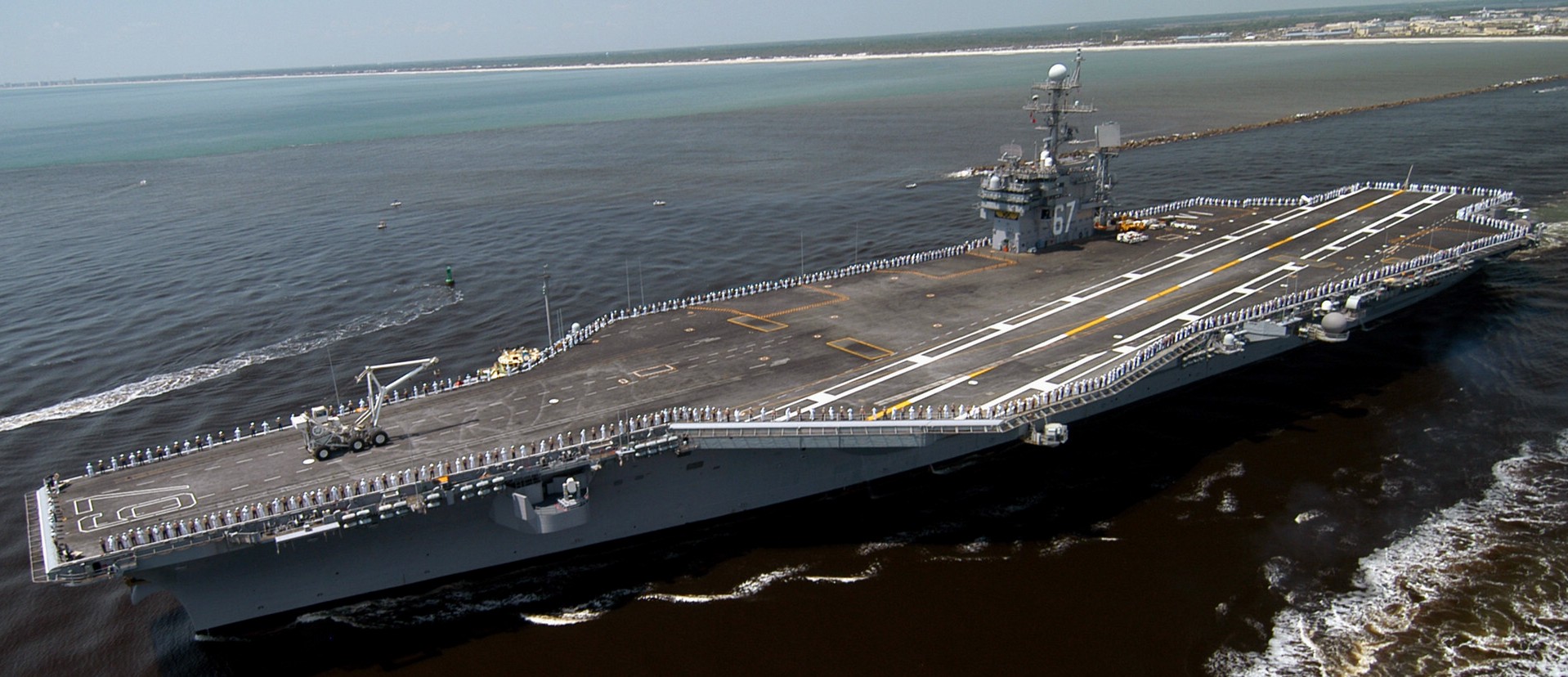 departing Naval Station Mayport, Florida - May 2005 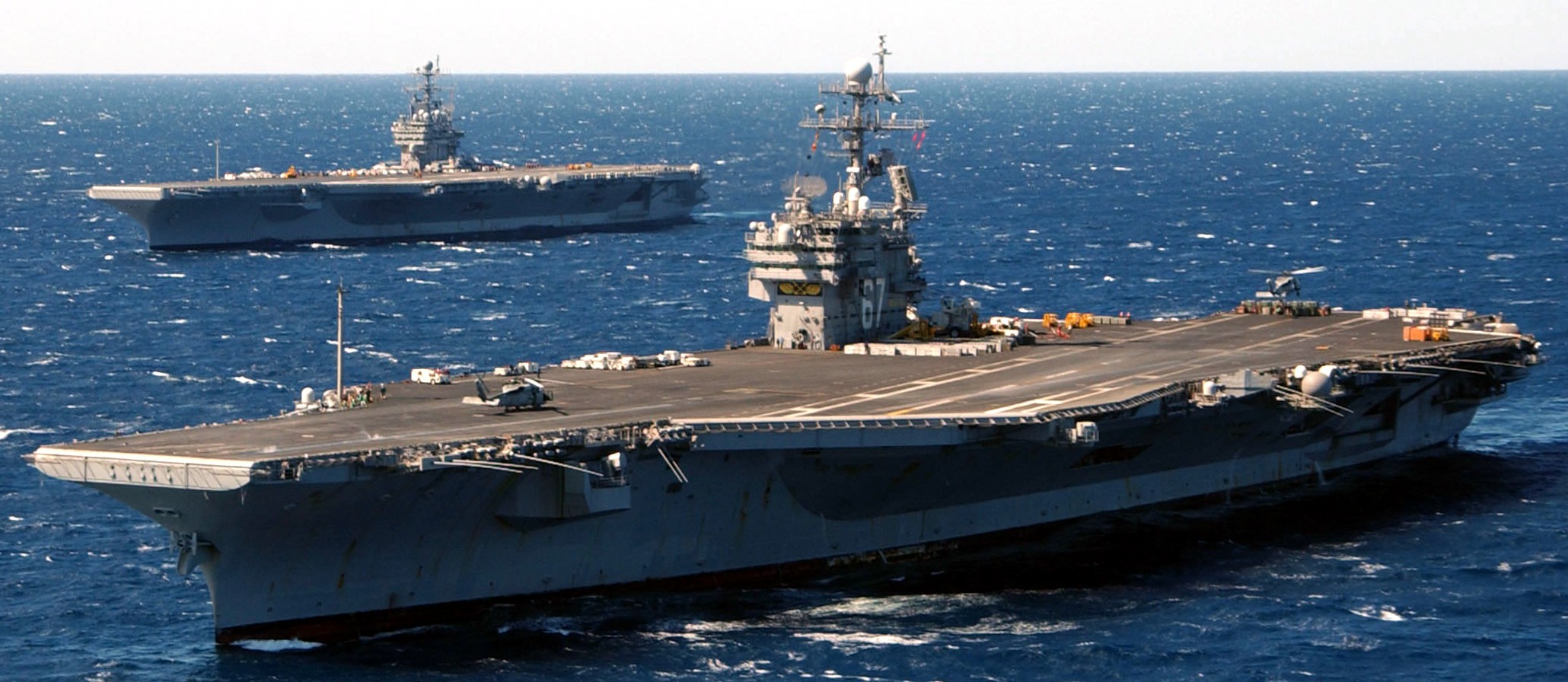 Atlantic Ocean - March 2005  Atlantic Ocean - March 2005 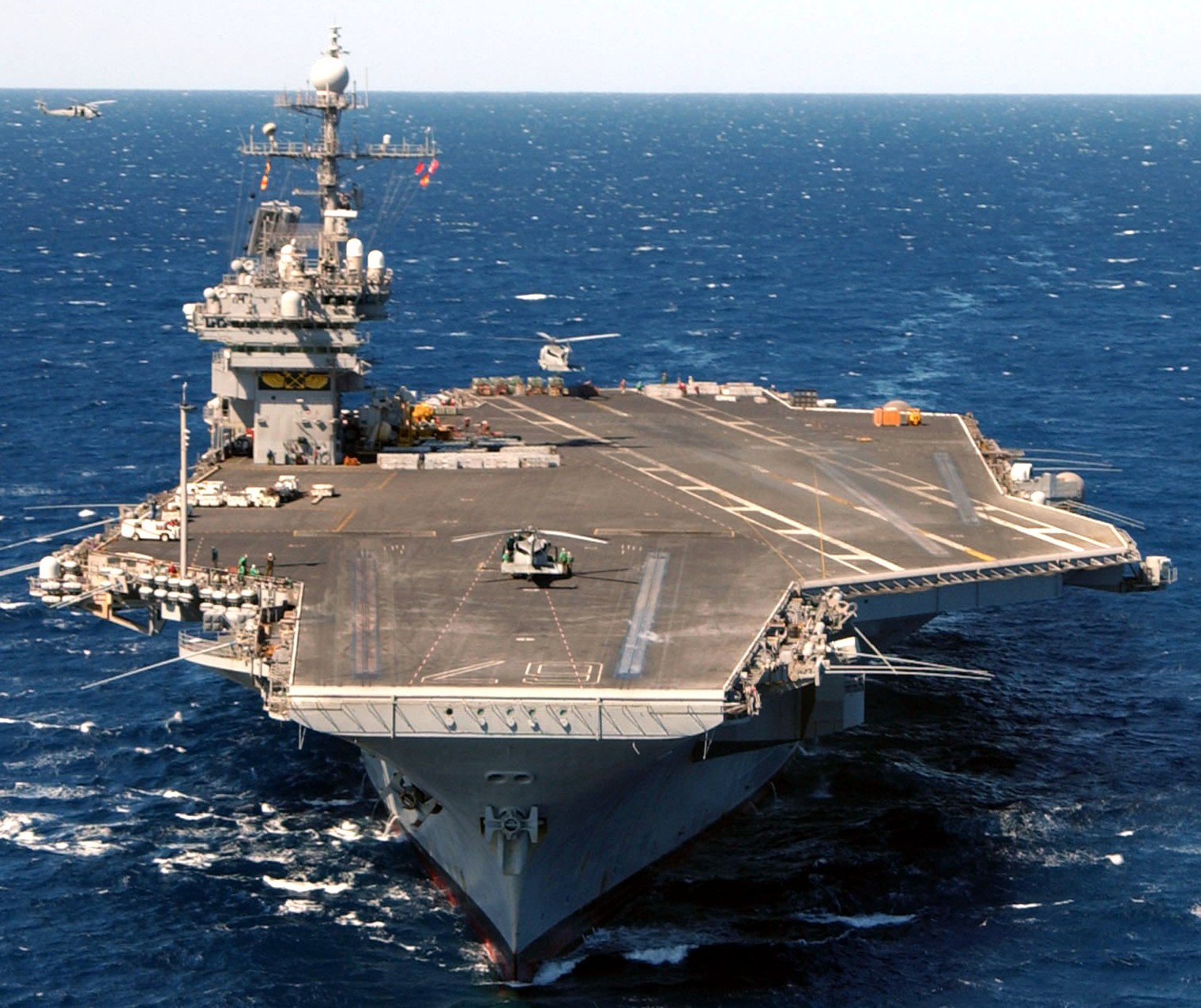 Atlantic Ocean - March 2005 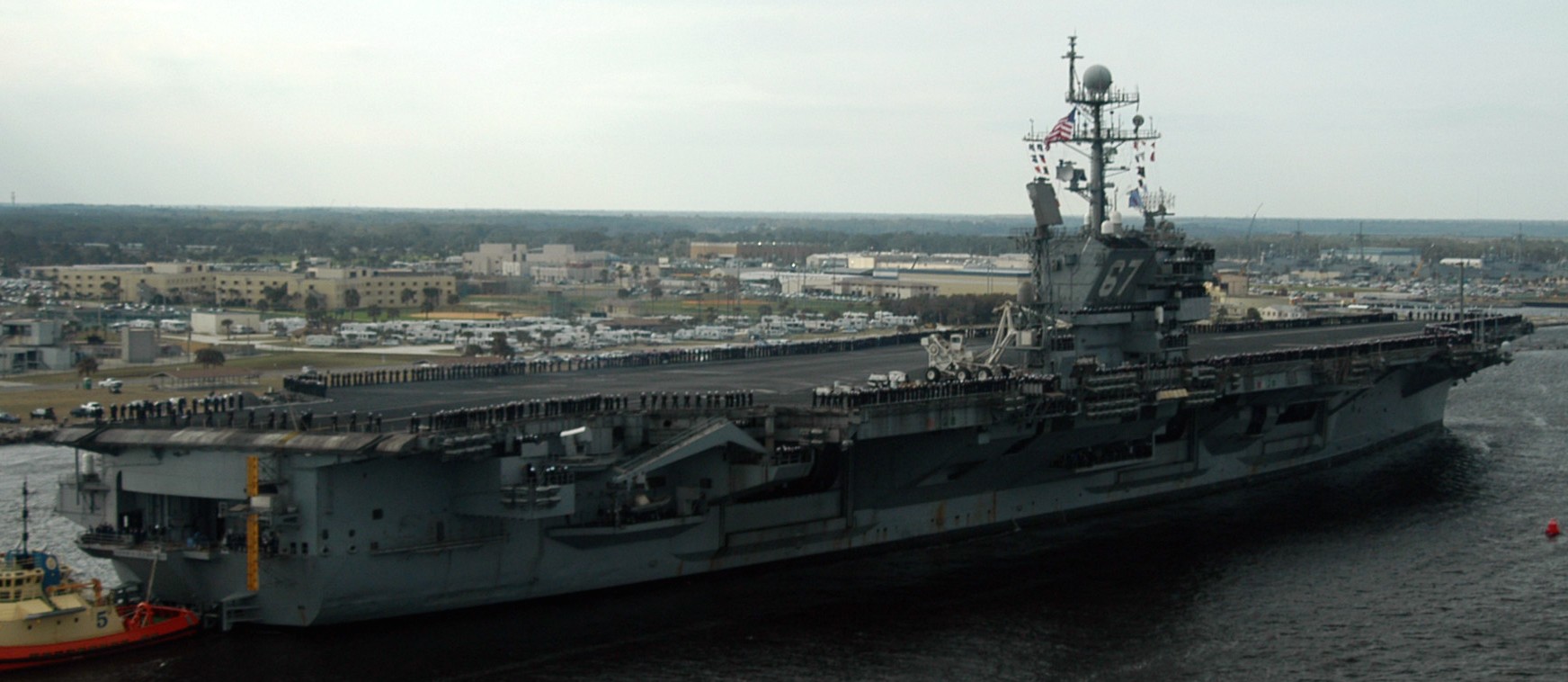 Mayport, Florida - December 2004 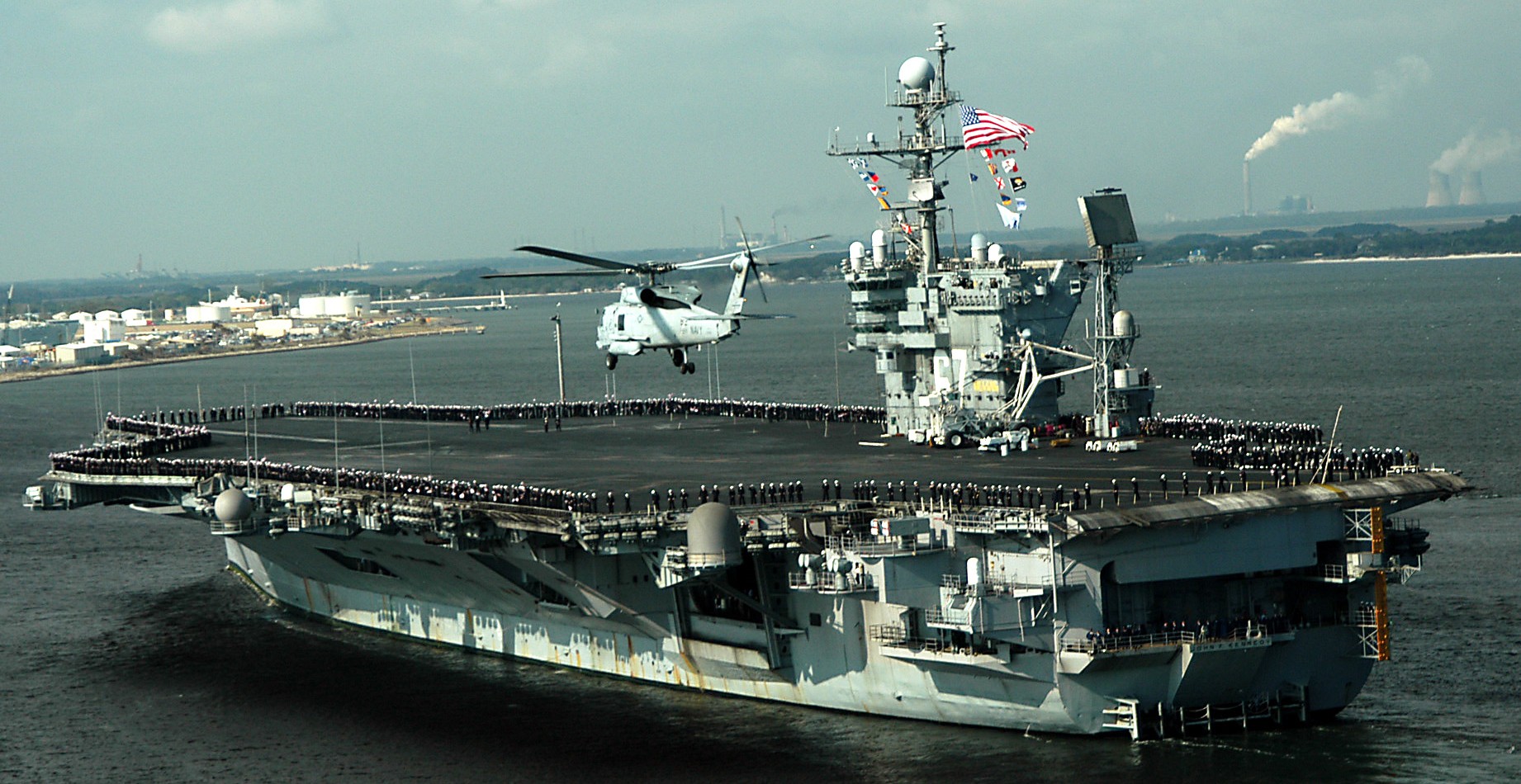 returning to Naval Station Mayport, Florida - December 2004 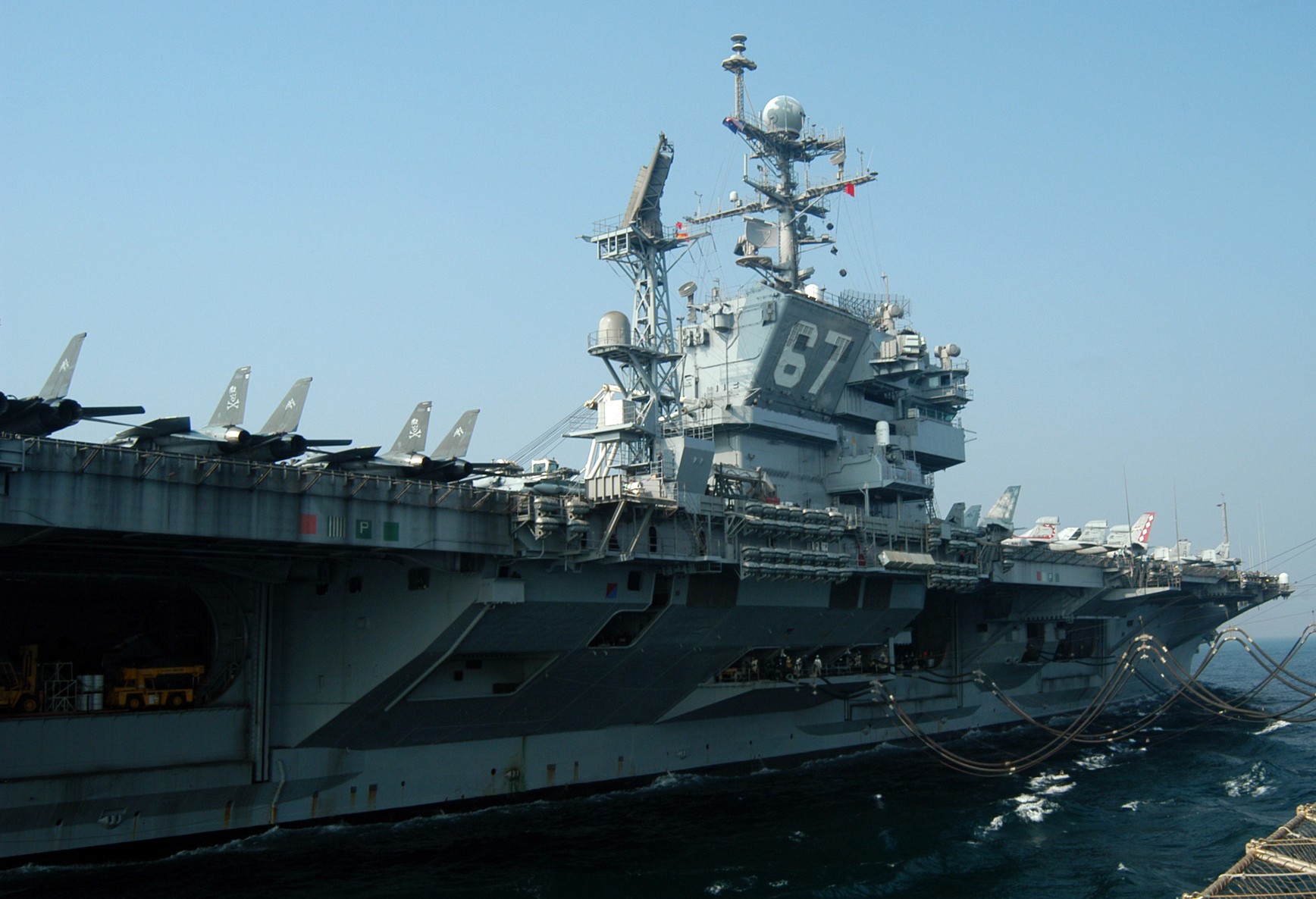 with CVW-17 embarked - operation Iraqi Freedom - November 2004 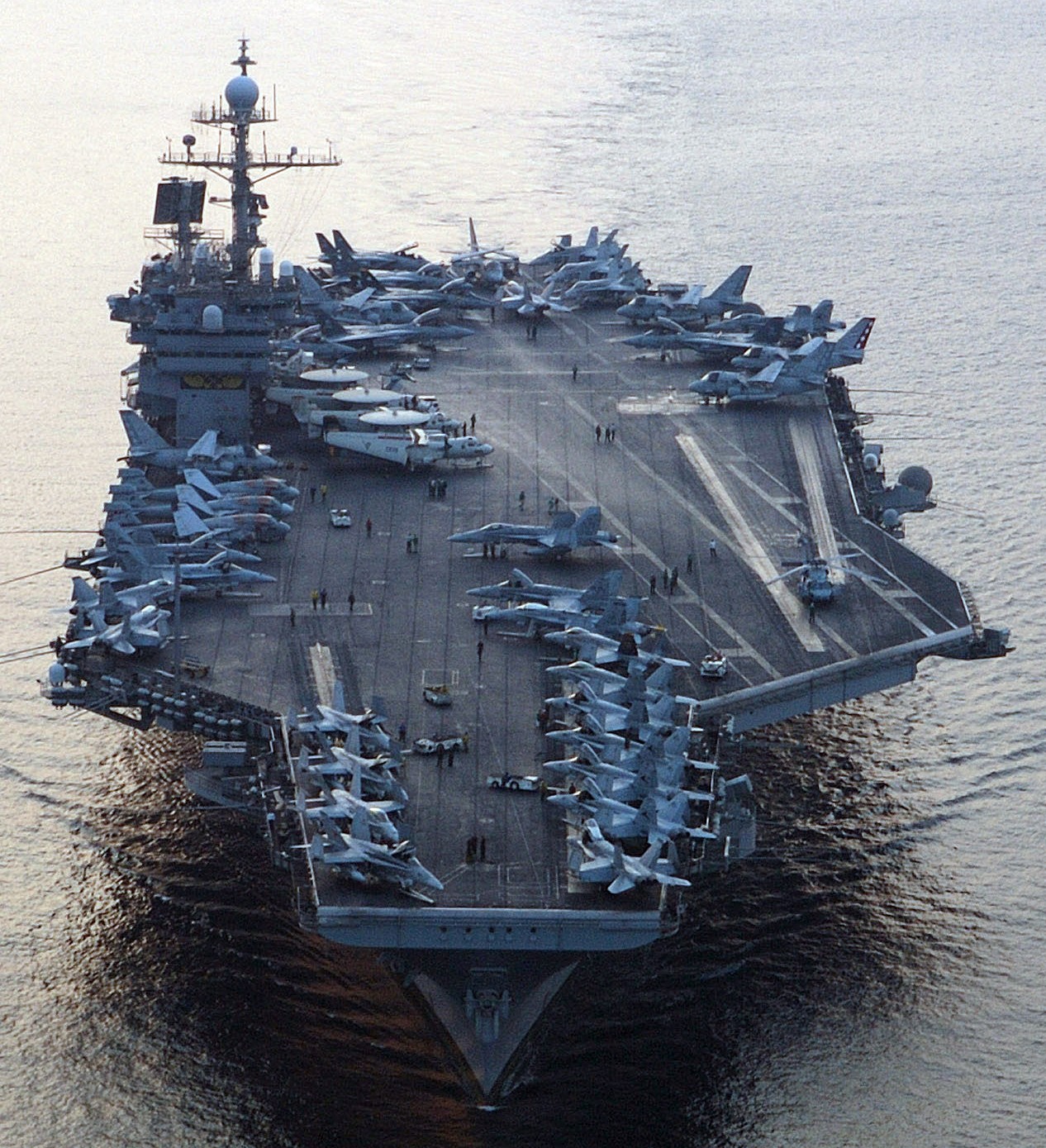 with CVW-17 embarked - Arabian Gulf - November 2004 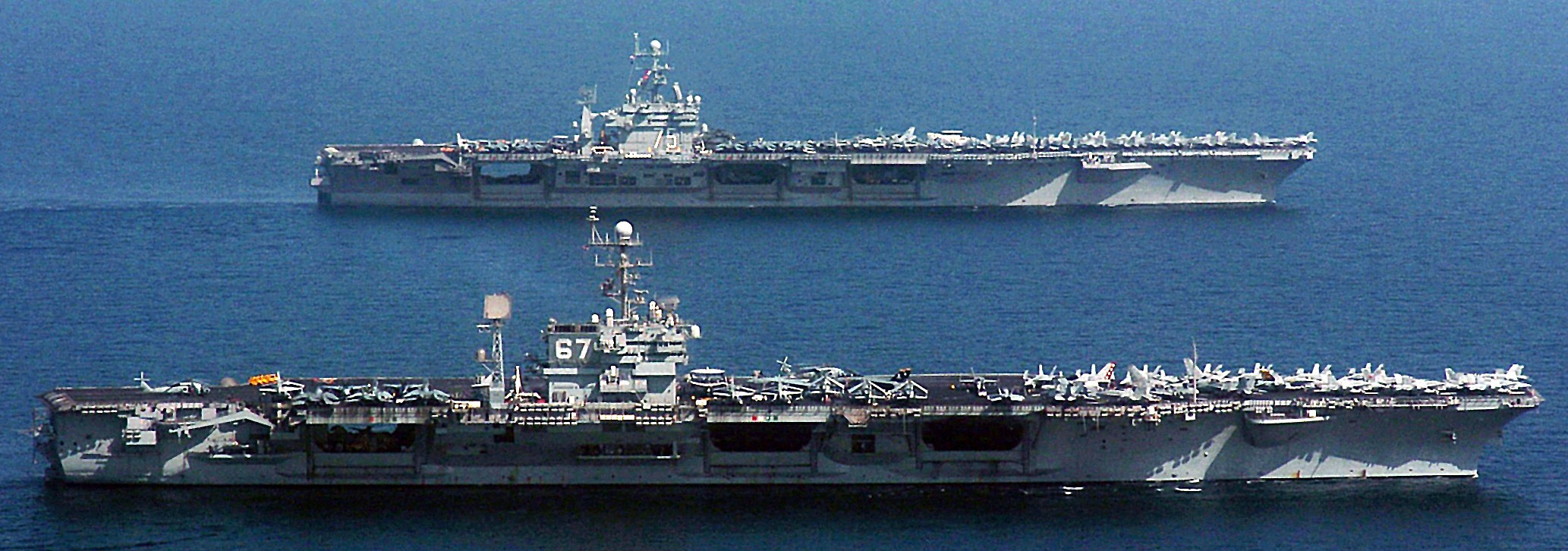 with CVW-17 embarked - Arabian Gulf - November 2004 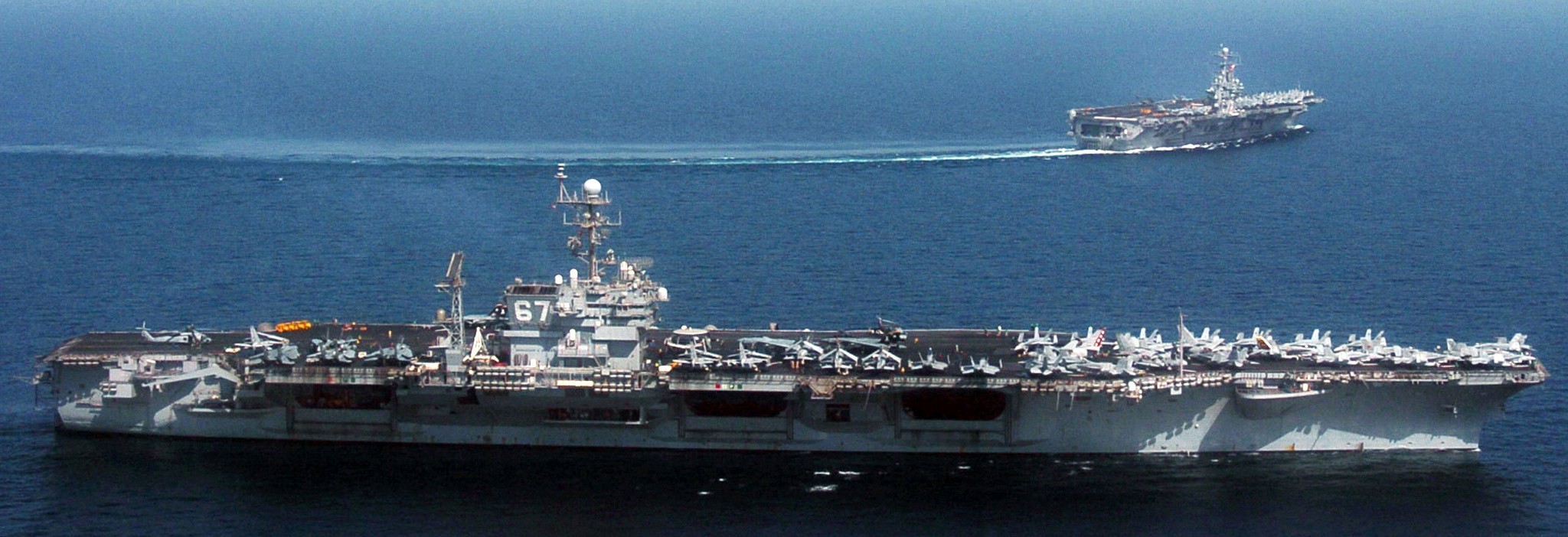 with CVW-17 embarked - Arabian Gulf - November 2004 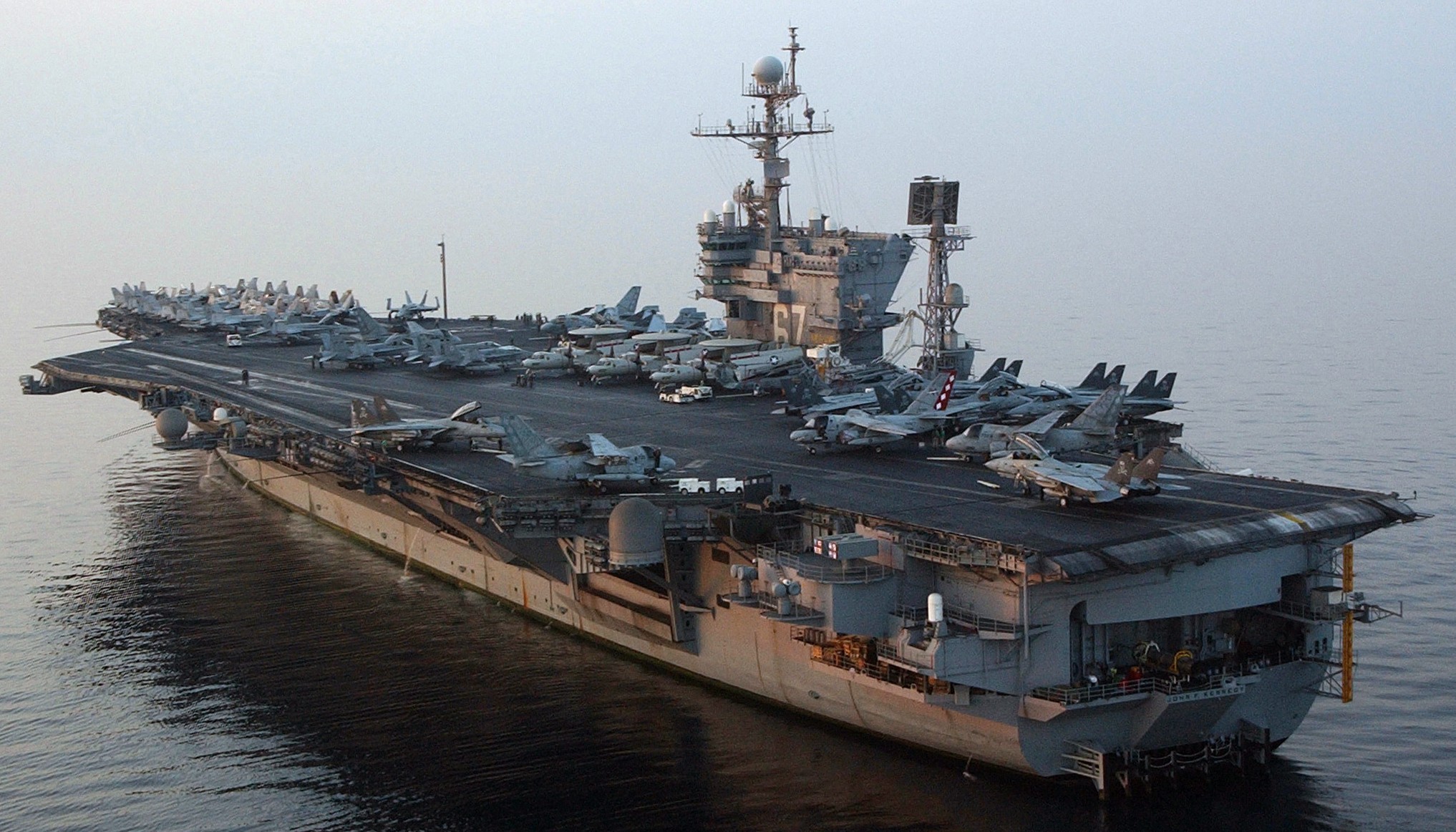 with CVW-17 embarked - Arabian Gulf - October 2004  with CVW-17 embarked - Arabian Gulf - October 2004 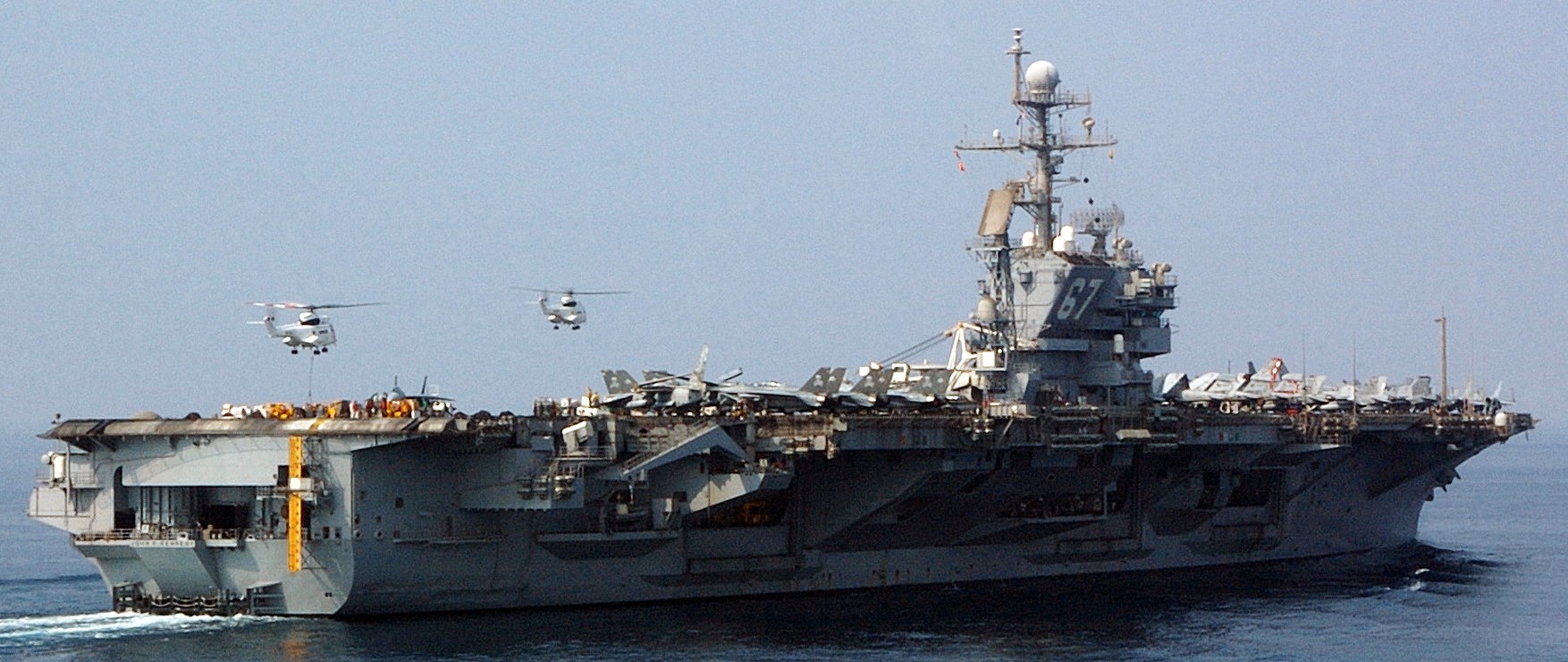 with CVW-17 embarked - Arabian Gulf - October 2004 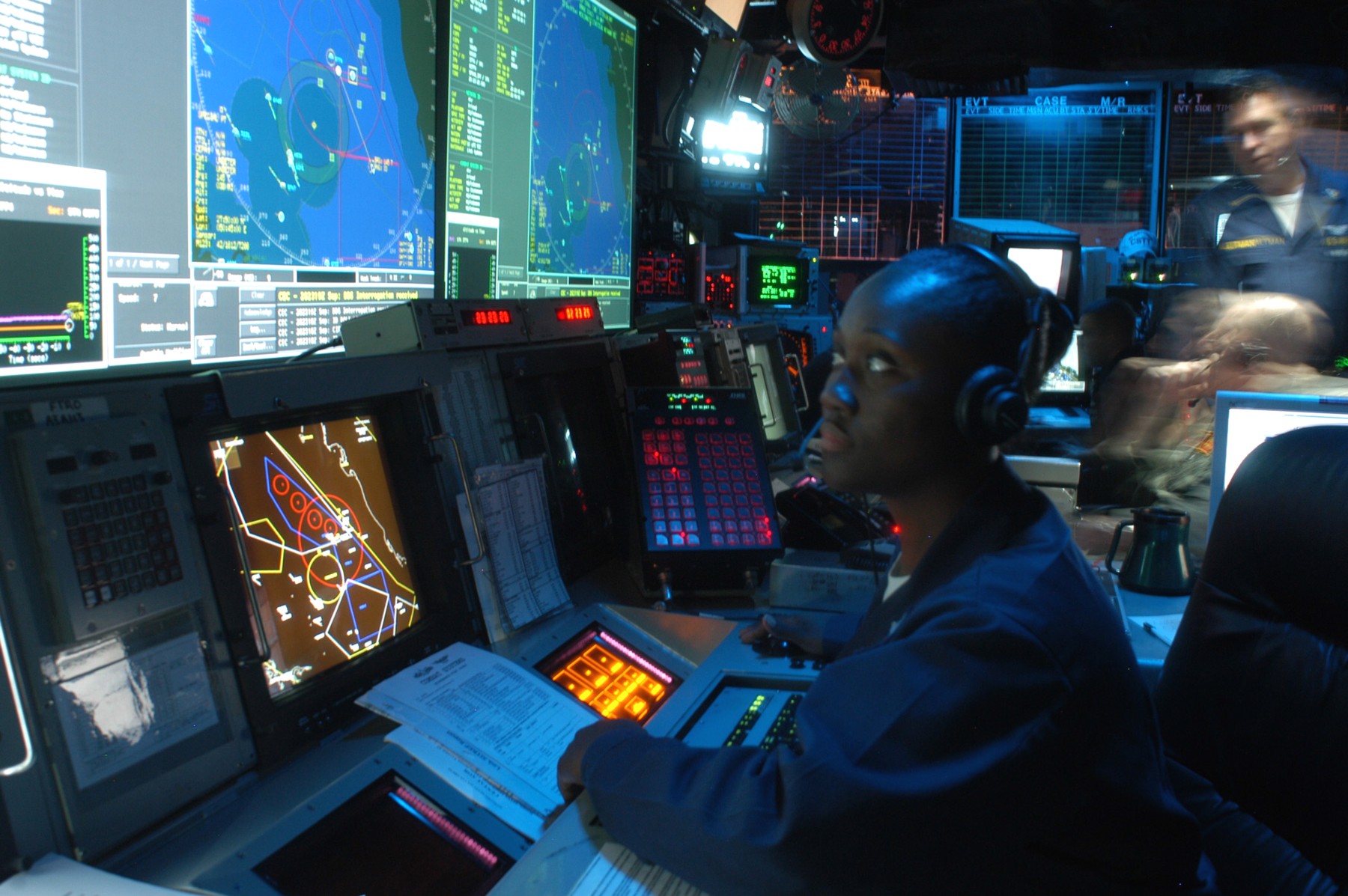 Combat Direction Center (CDC) - Arabian Sea - September 2004 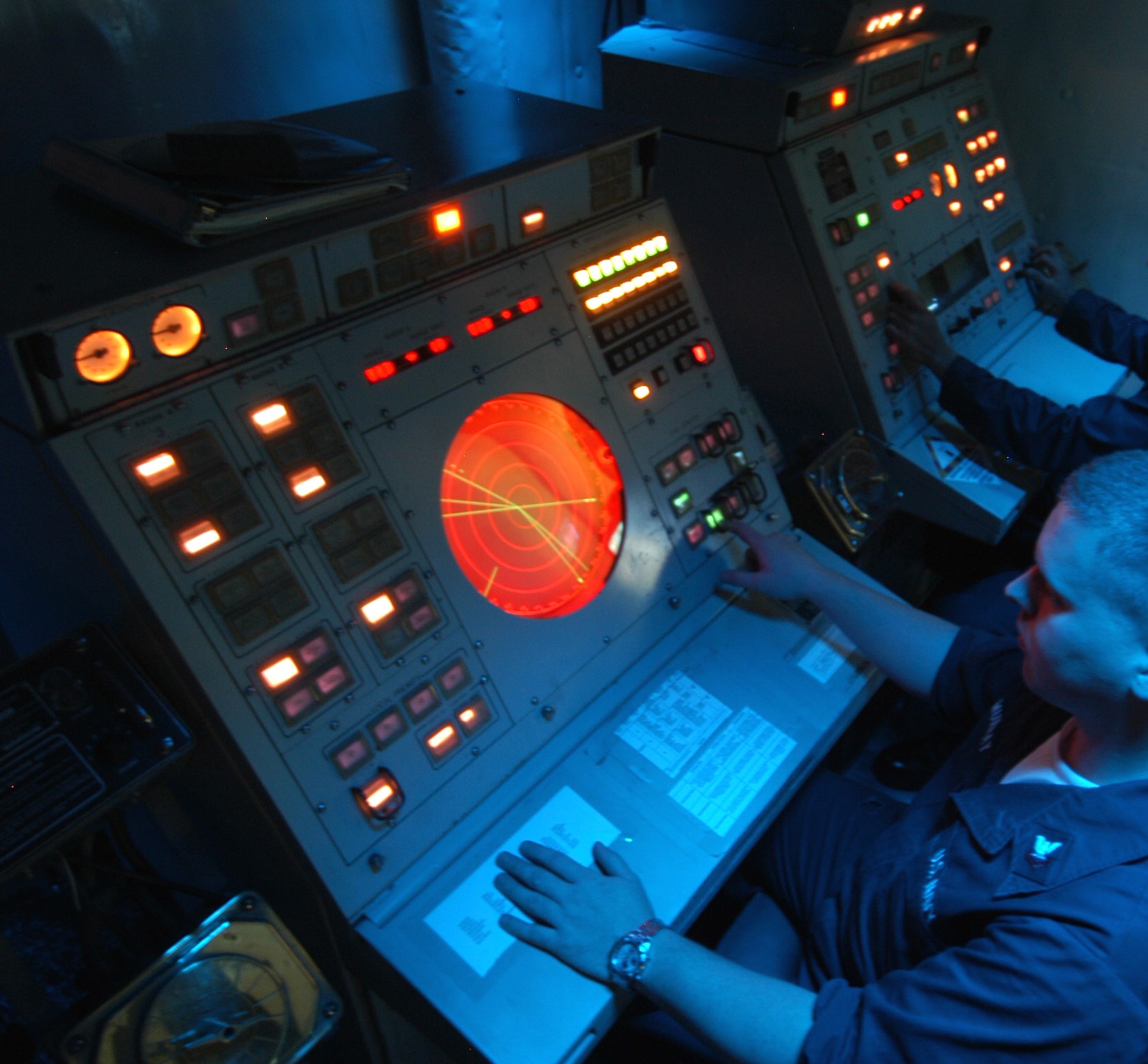 Combat Direction Center (CDC) - Arabian Sea - September 2004 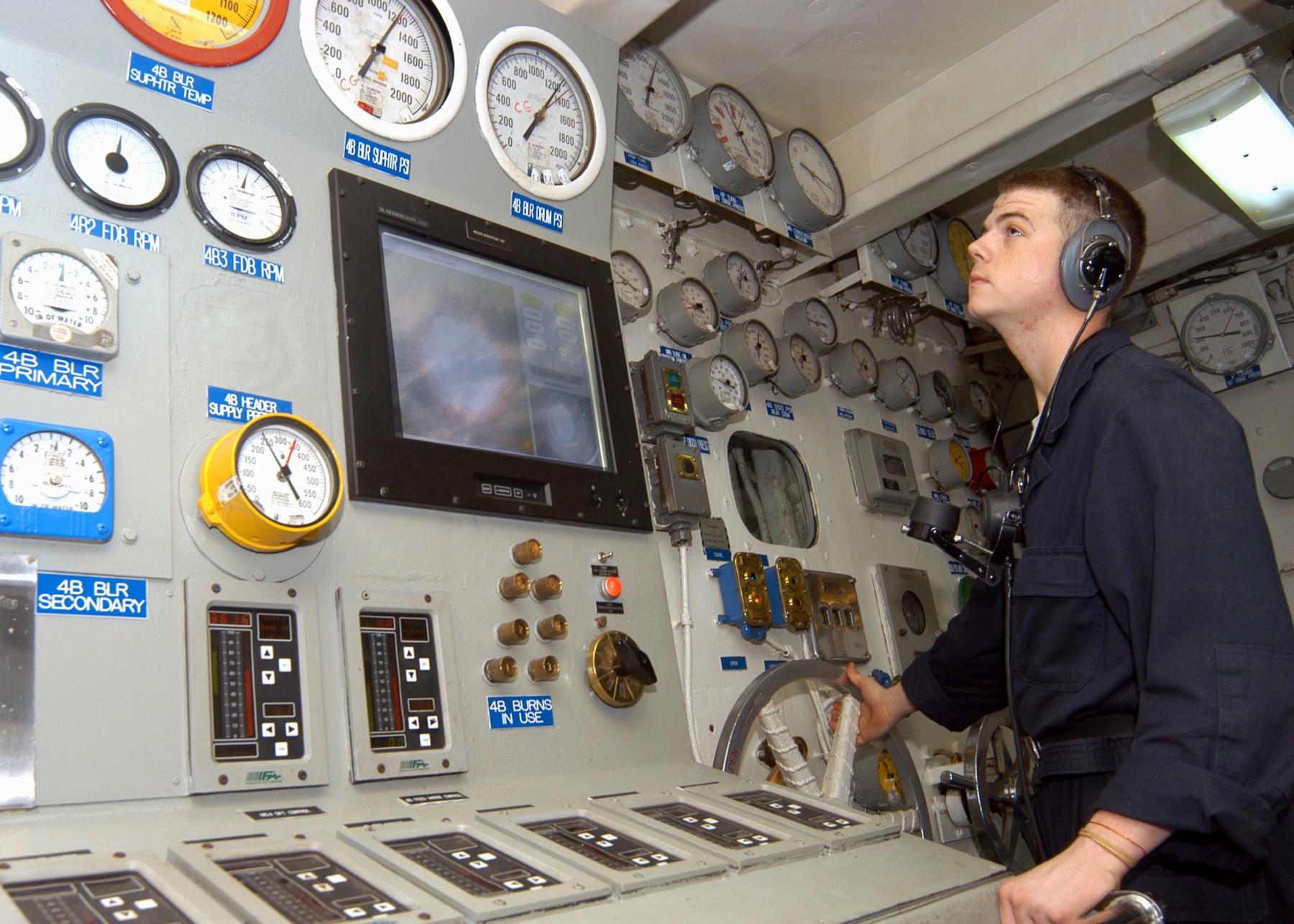 machinery room - Arabian Sea - September 2004 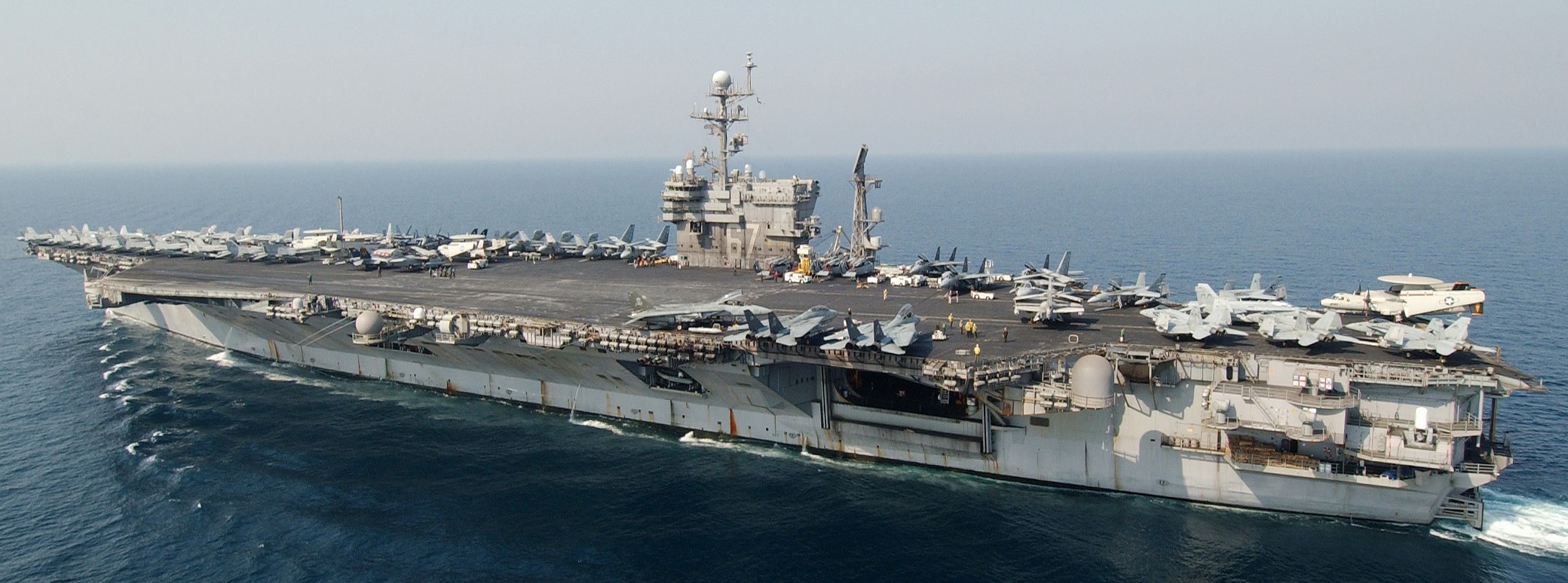 with CVW-17 embarked - Arabian Gulf - August 2004 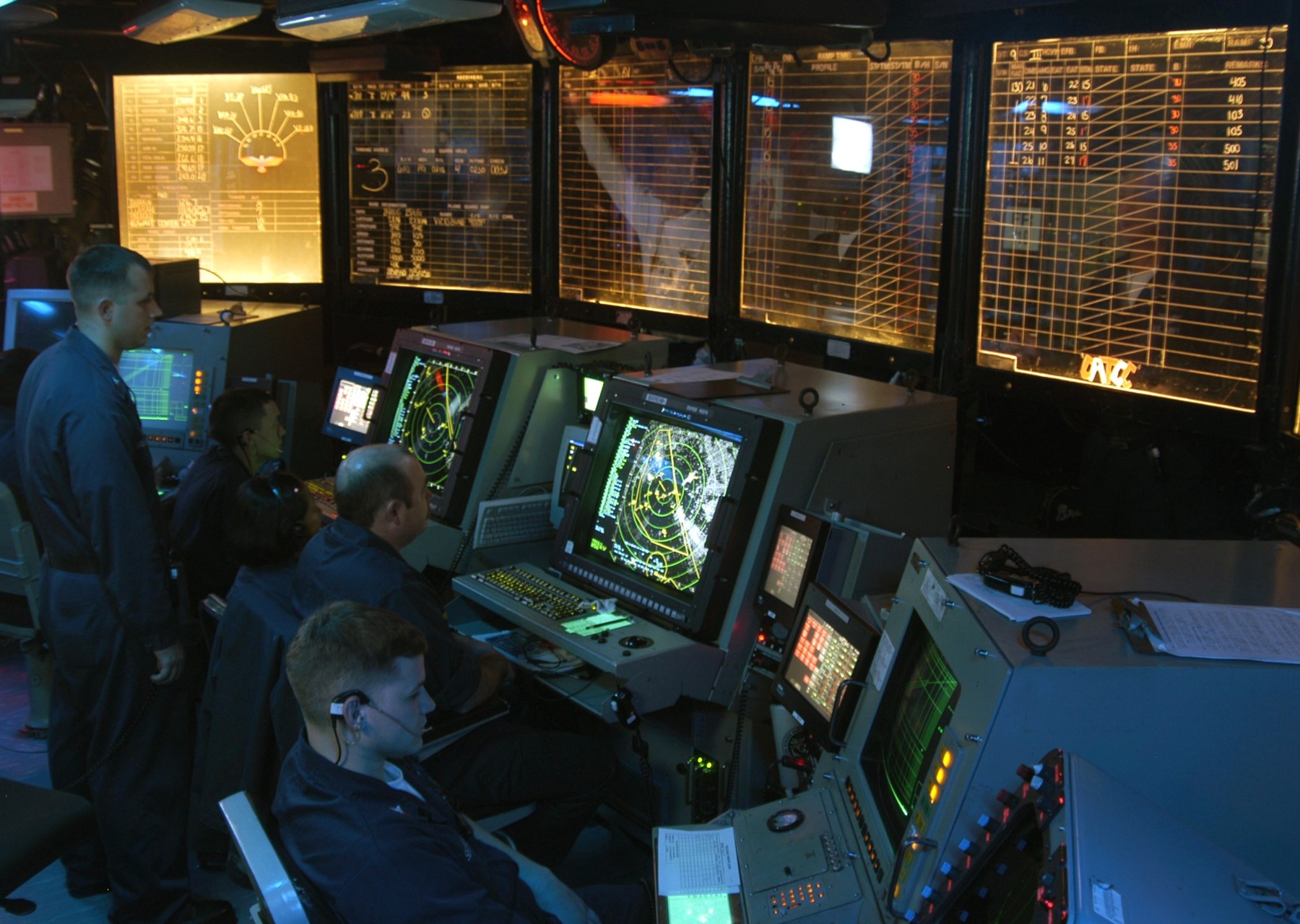 air traffic control center - August 2004 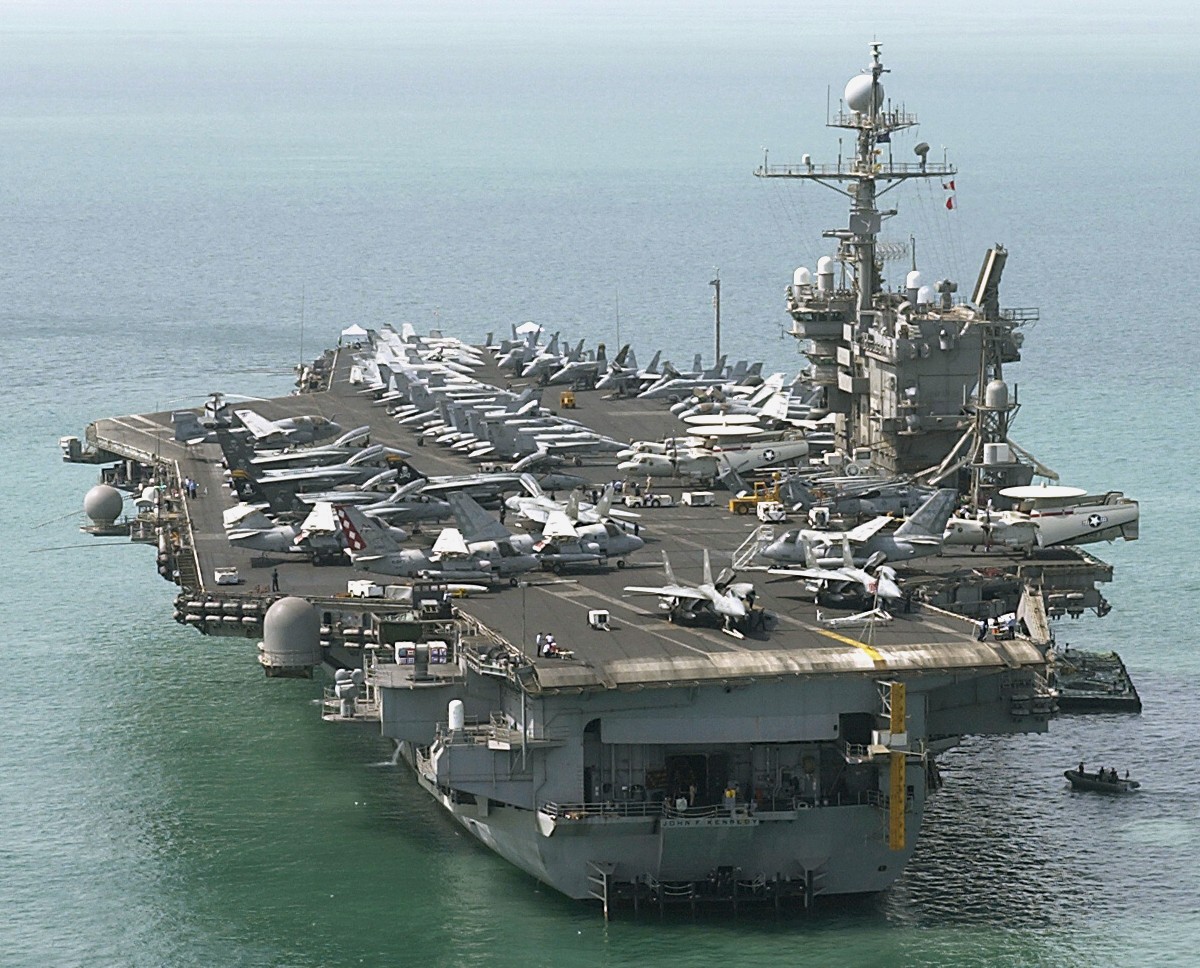 with CVW-17 embarked - Manama, Bahrain - August 2004 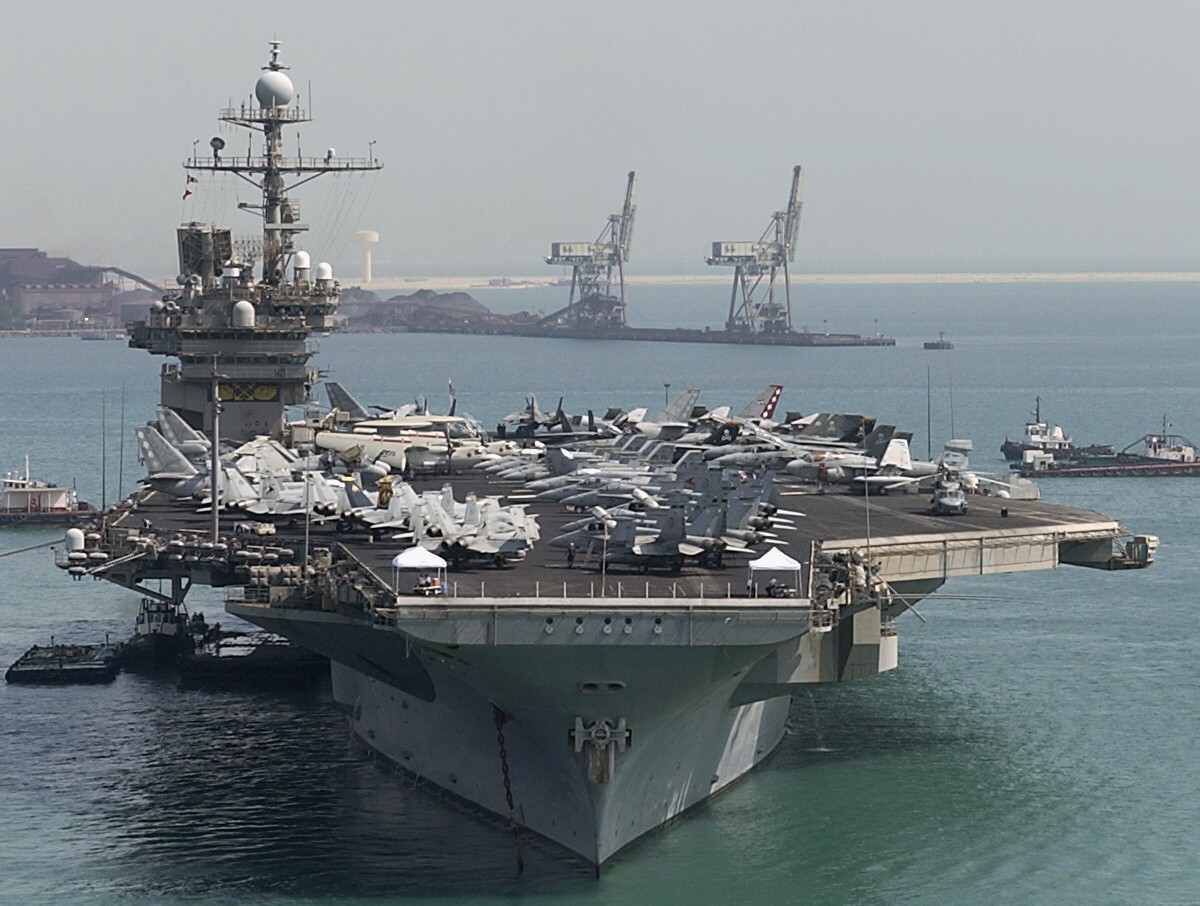 with CVW-17 embarked - Manama, Bahrain - August 2004 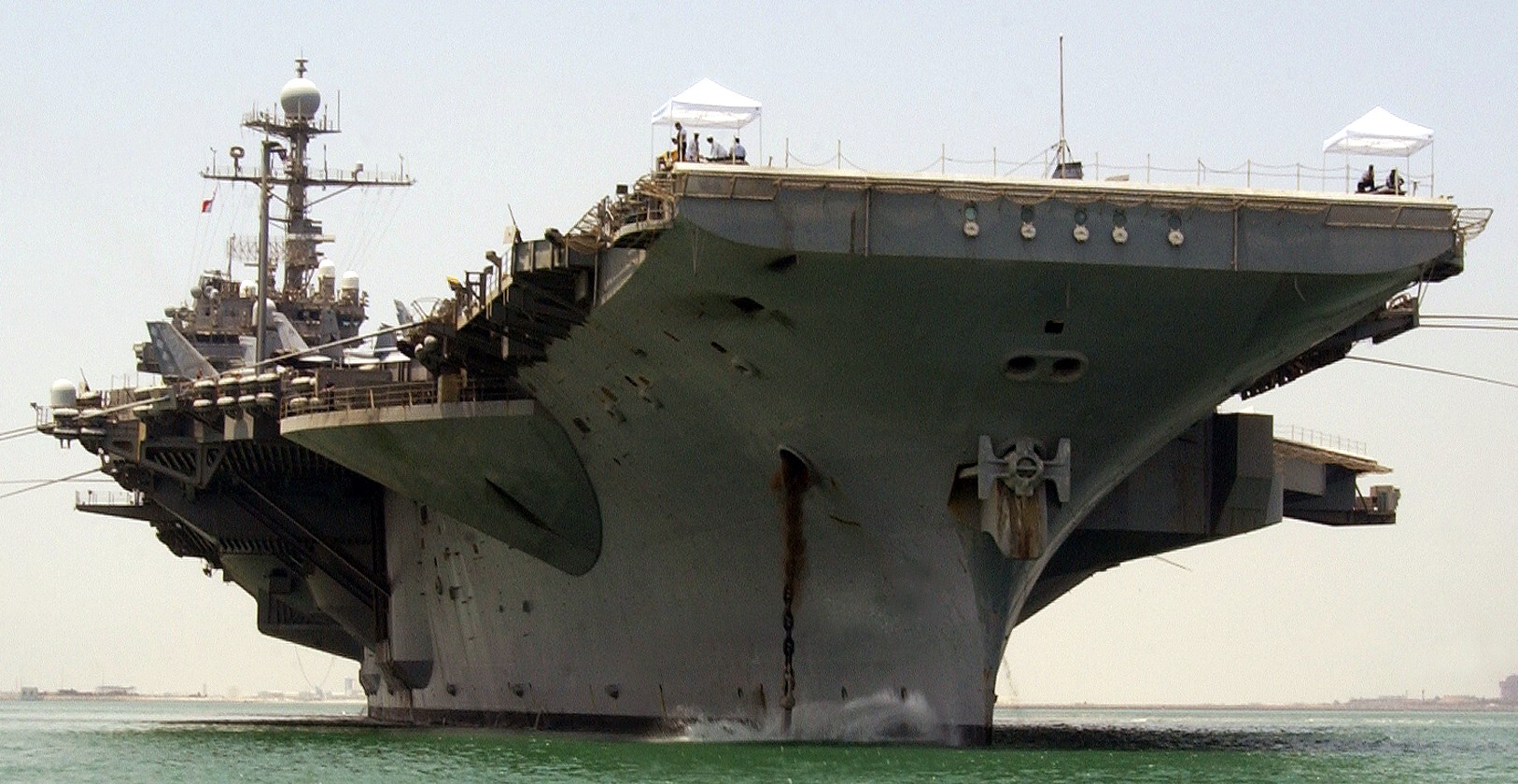 with CVW-17 embarked - Manama, Bahrain - August 2004 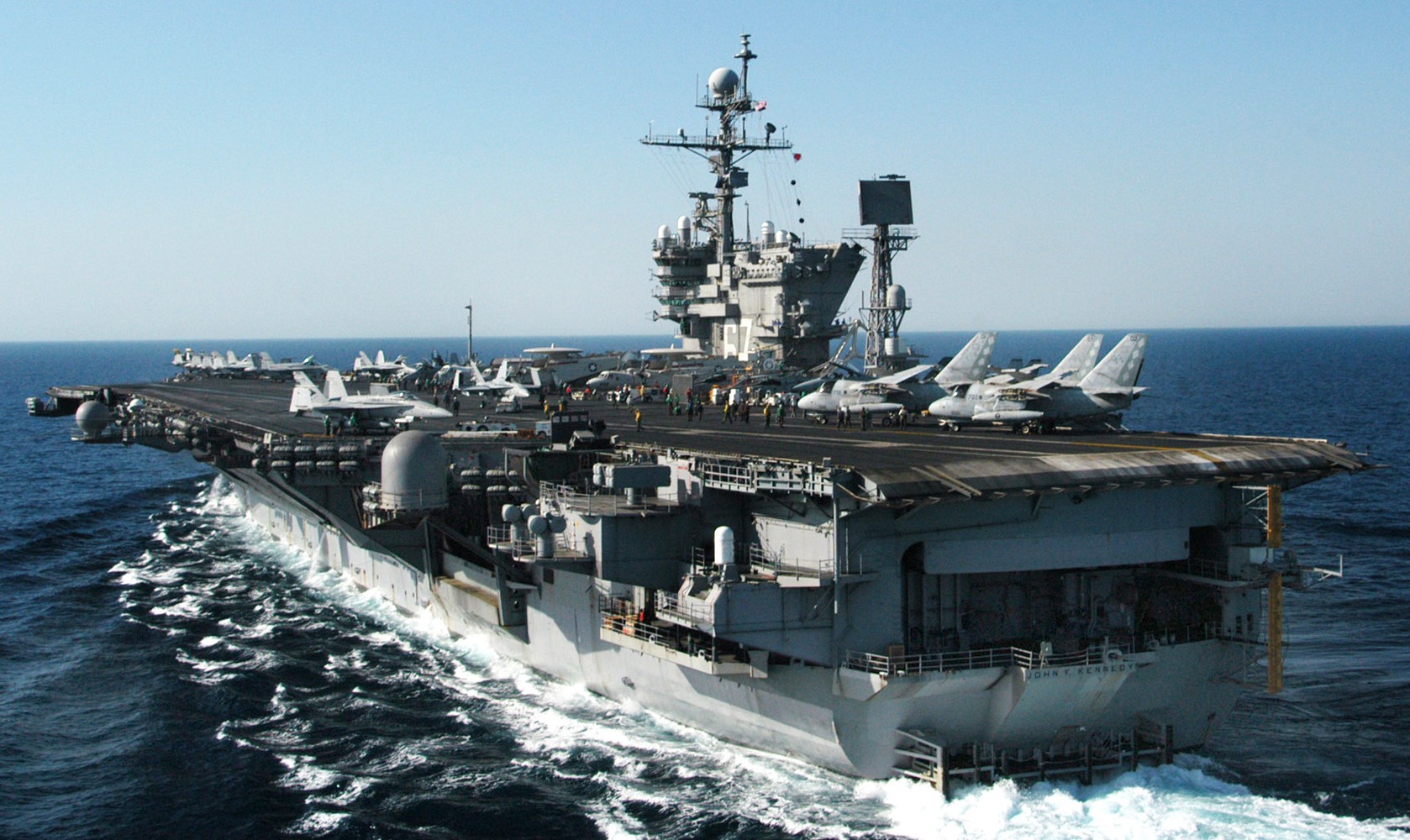 with CVW-17 embarked - Arabian Gulf - July 2004 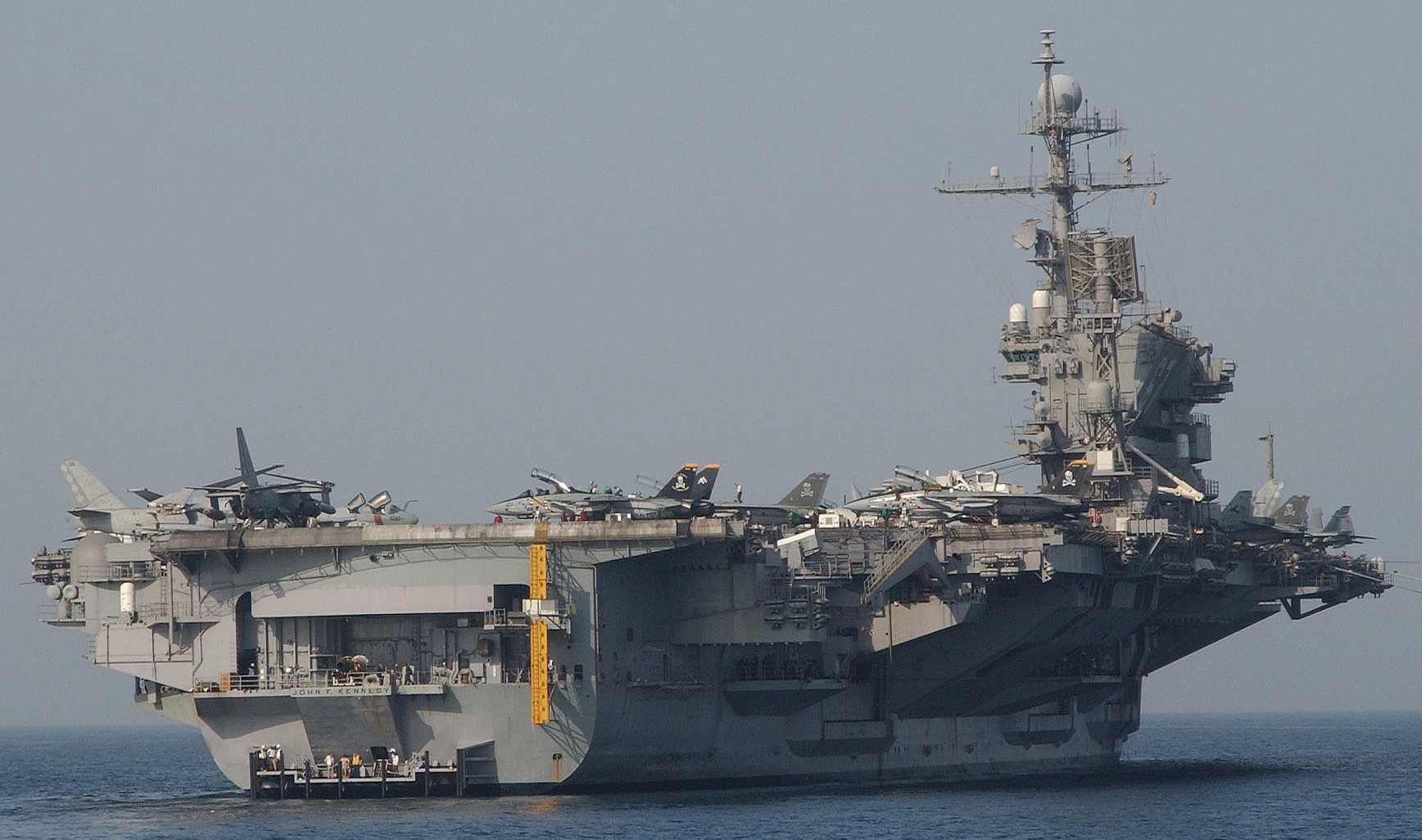 with CVW-17 embarked - Arabian Gulf - July 2004 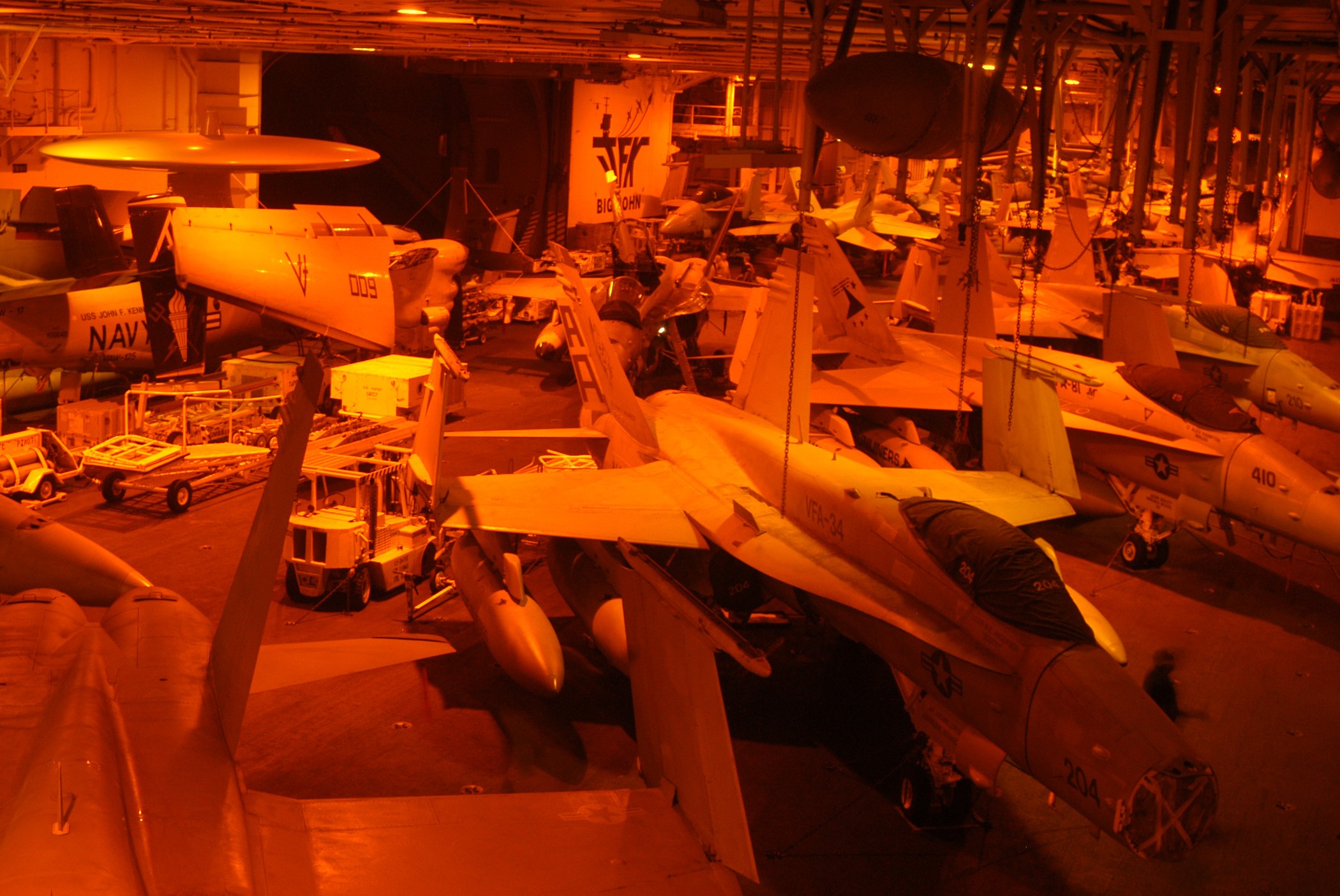 with CVW-17 embarked - Arabian Gulf - July 2004 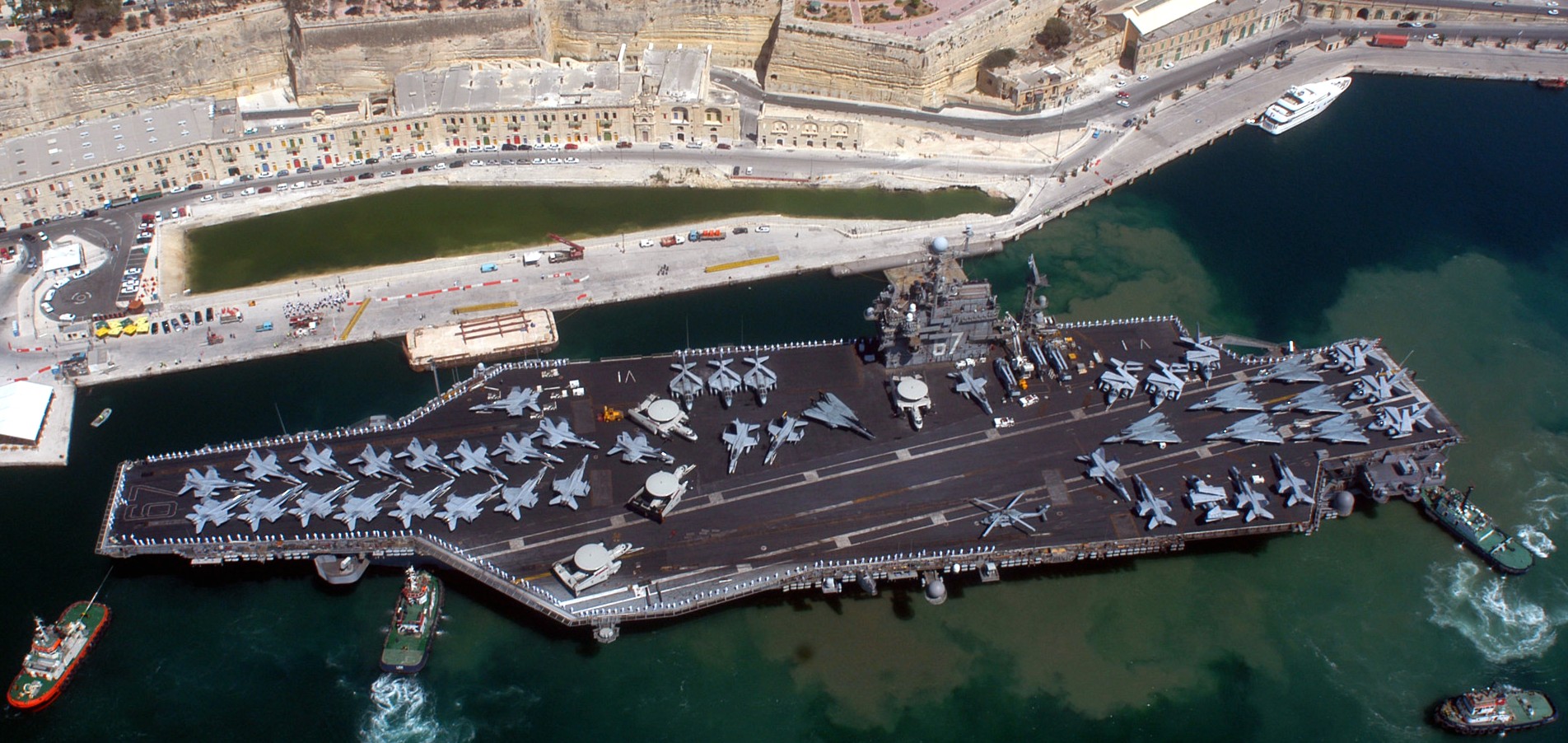 with CVW-17 embarked - Valletta, Malta - June 2004 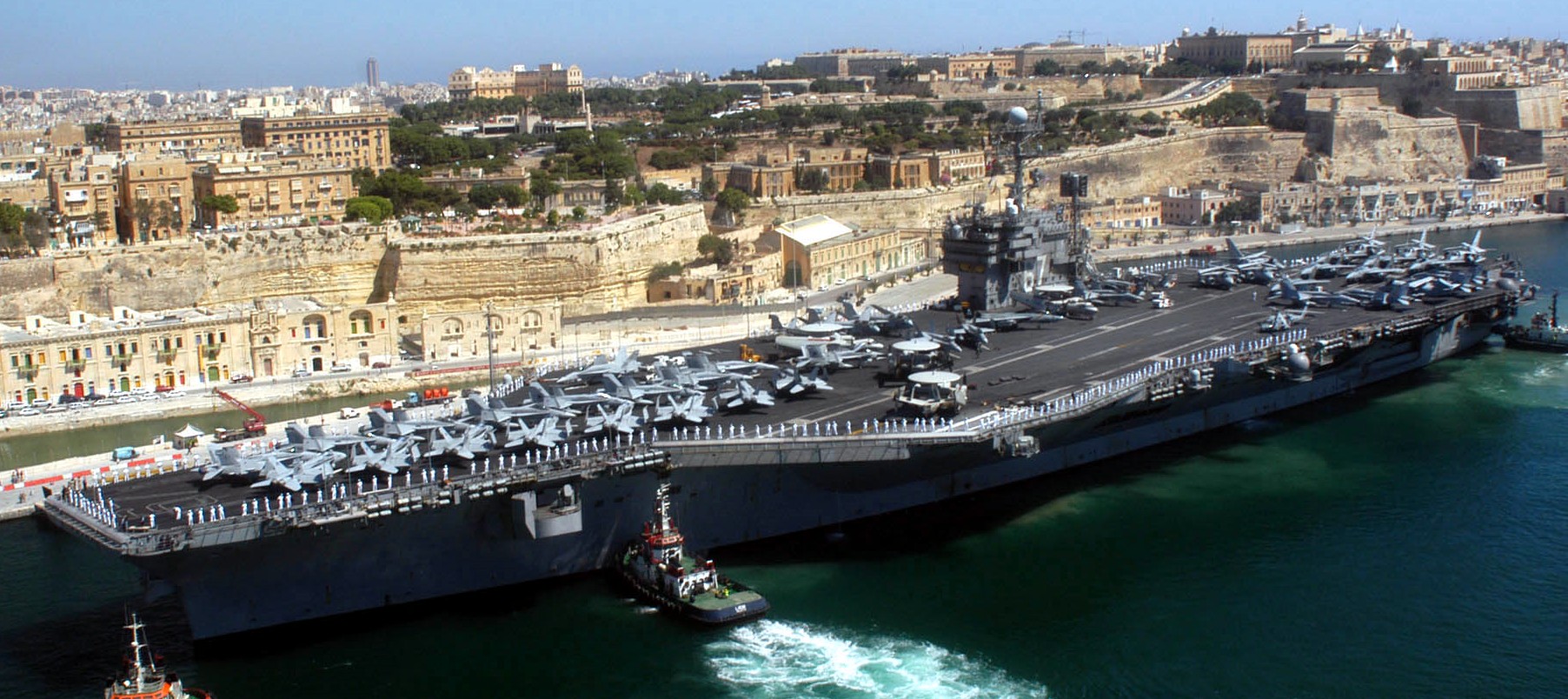 with CVW-17 embarked - Valletta, Malta - June 2004 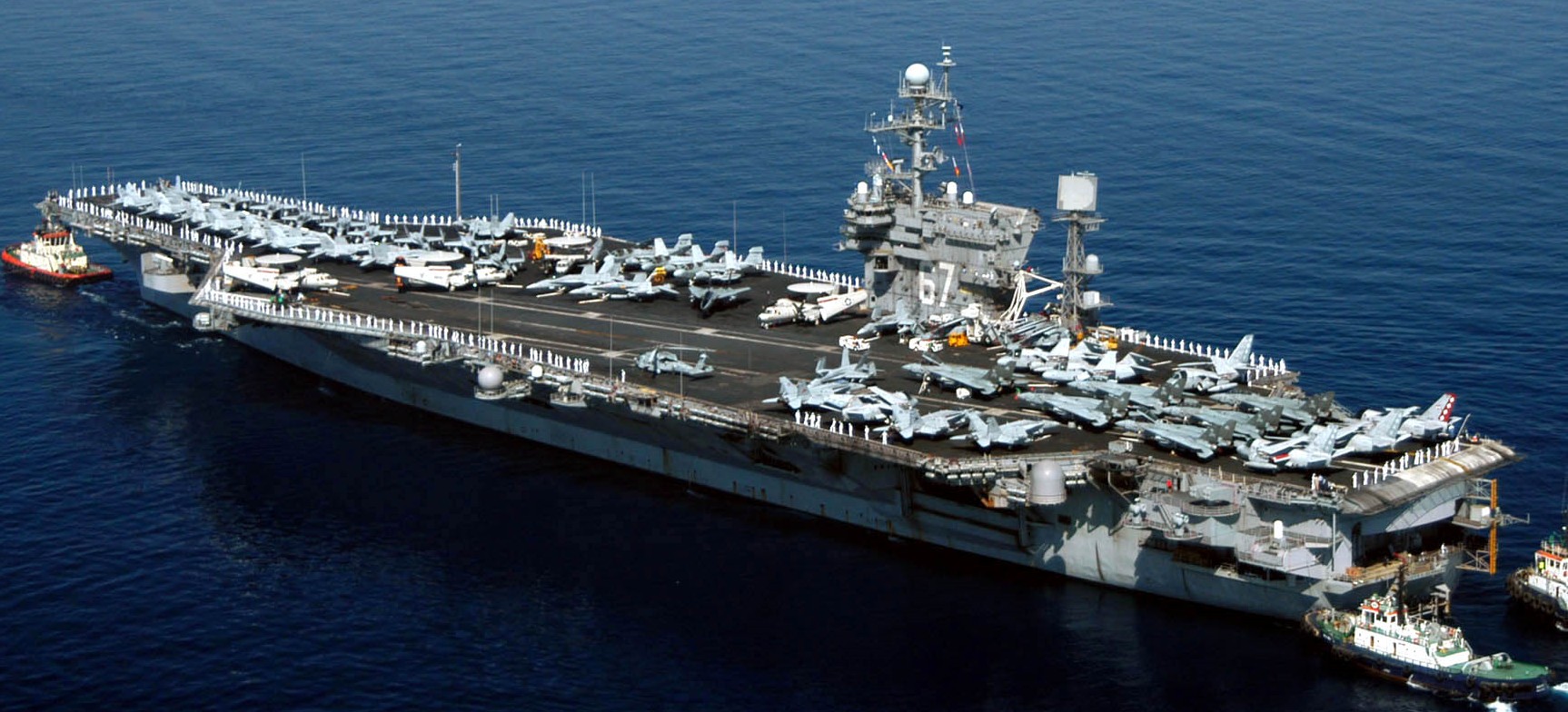 with CVW-17 embarked - Valletta, Malta - June 2004 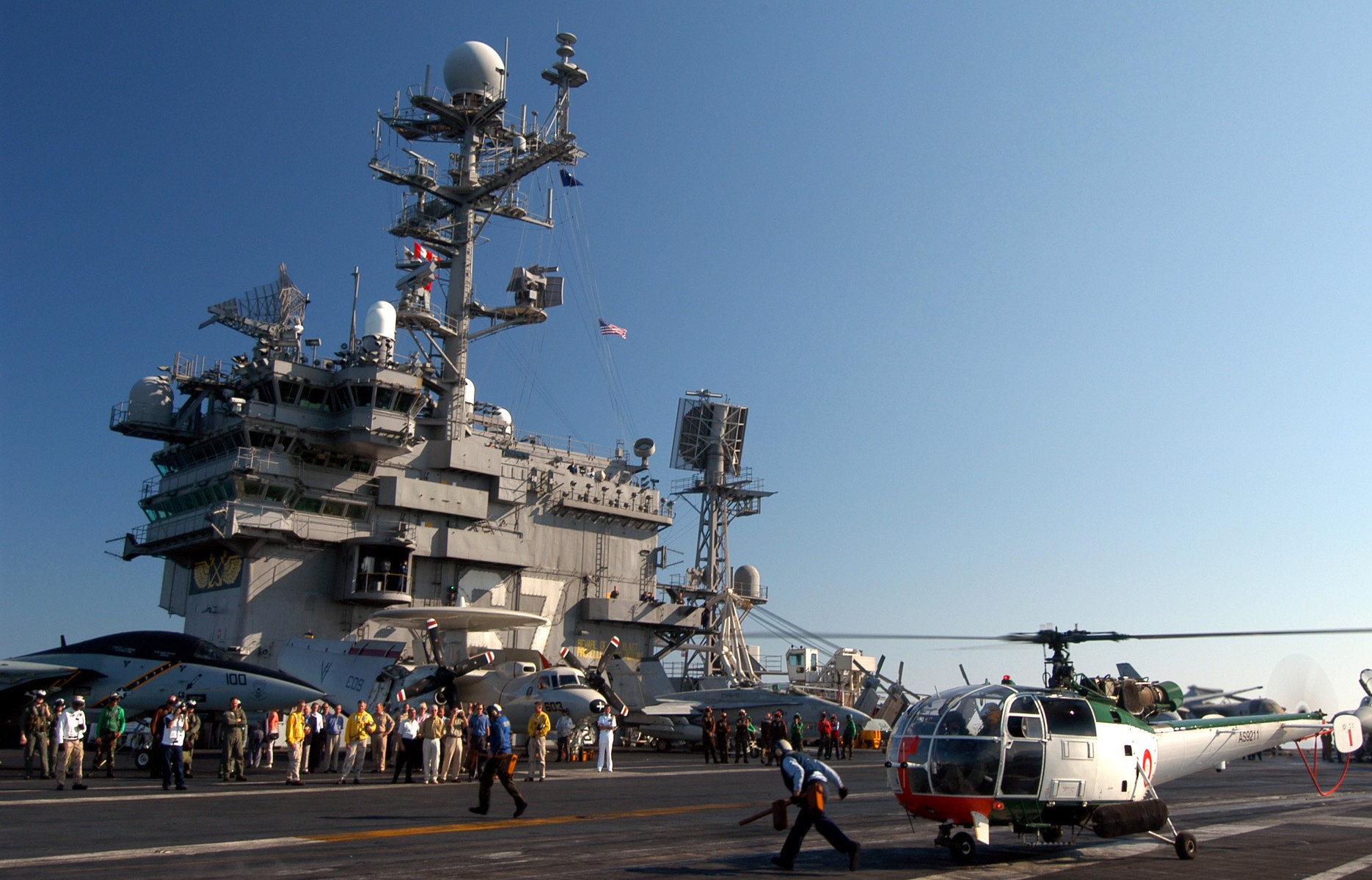 with CVW-17 embarked - Valletta, Malta - June 2004 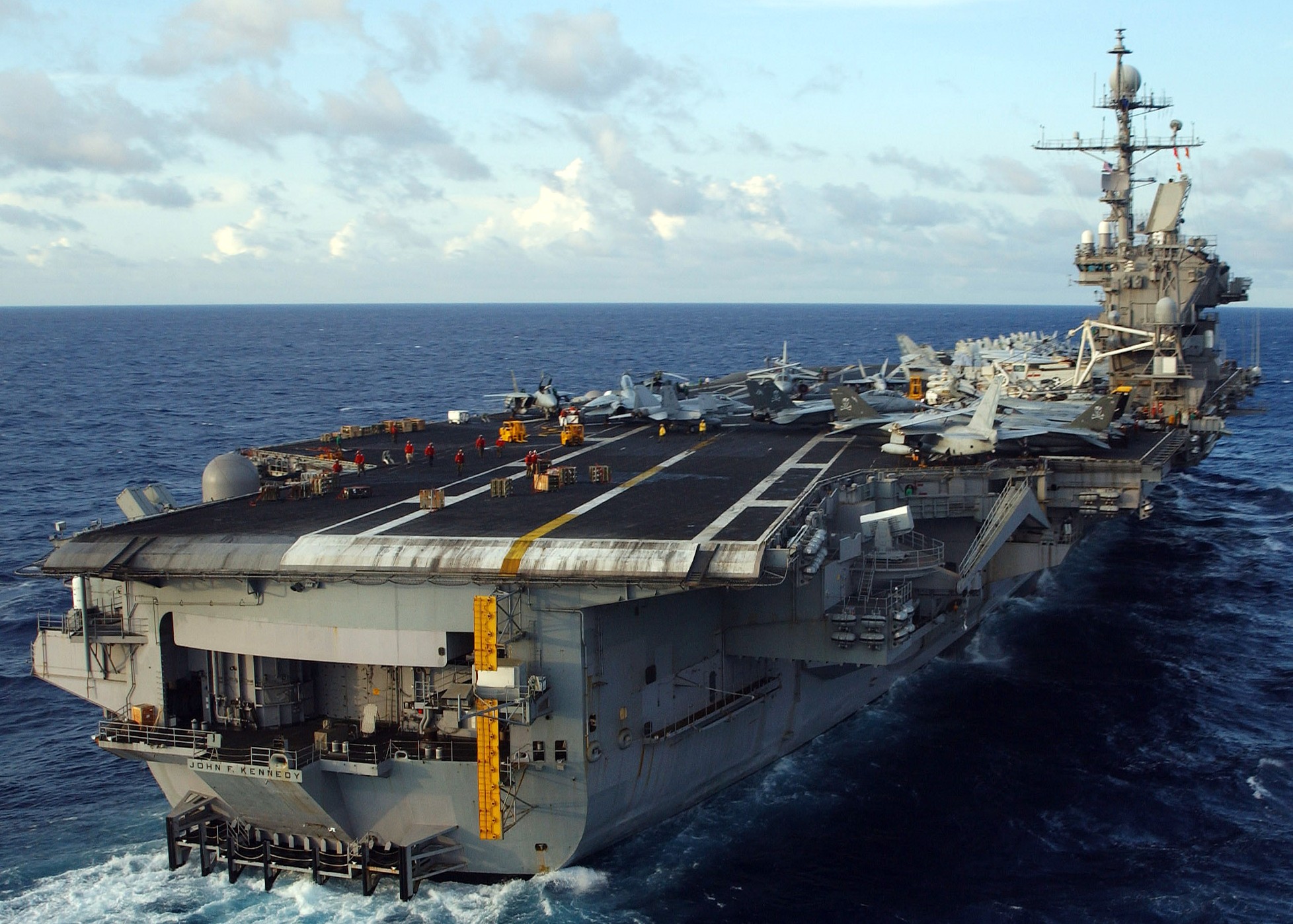 with CVW-17 embarked - Atlantic Ocean - June 2004 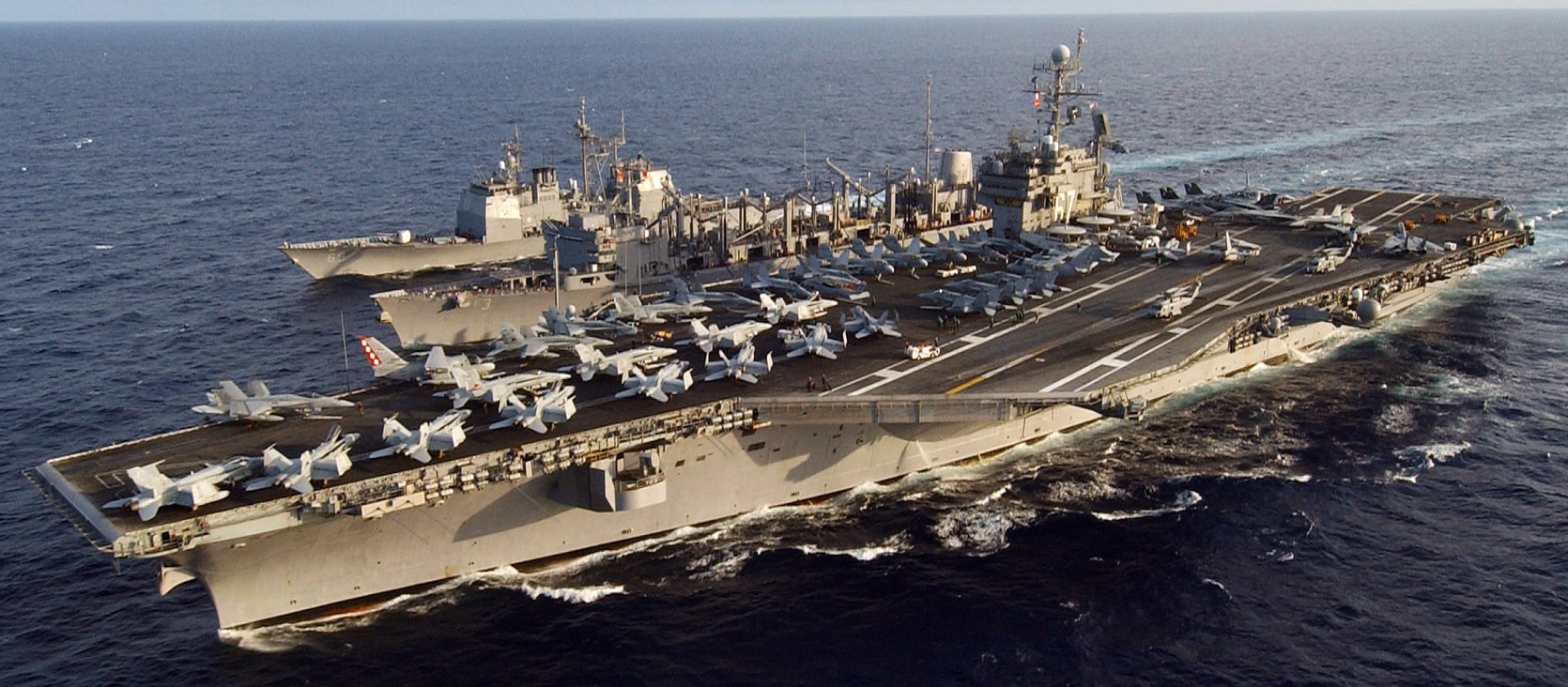 with CVW-17 embarked - Atlantic Ocean - June 2004  with CVW-17 embarked - Atlantic Ocean - June 2004 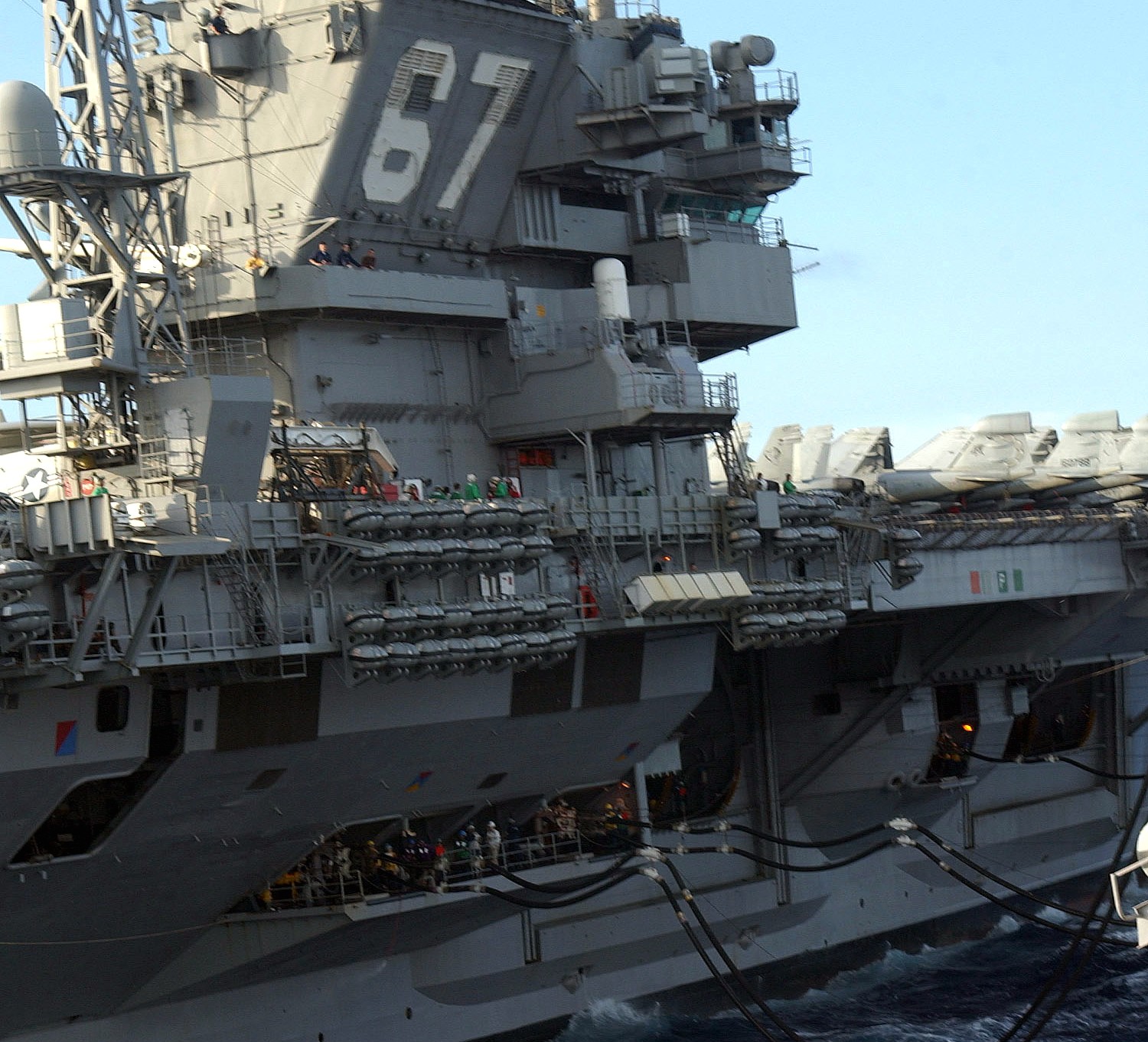 with CVW-17 embarked - Atlantic Ocean - June 2004 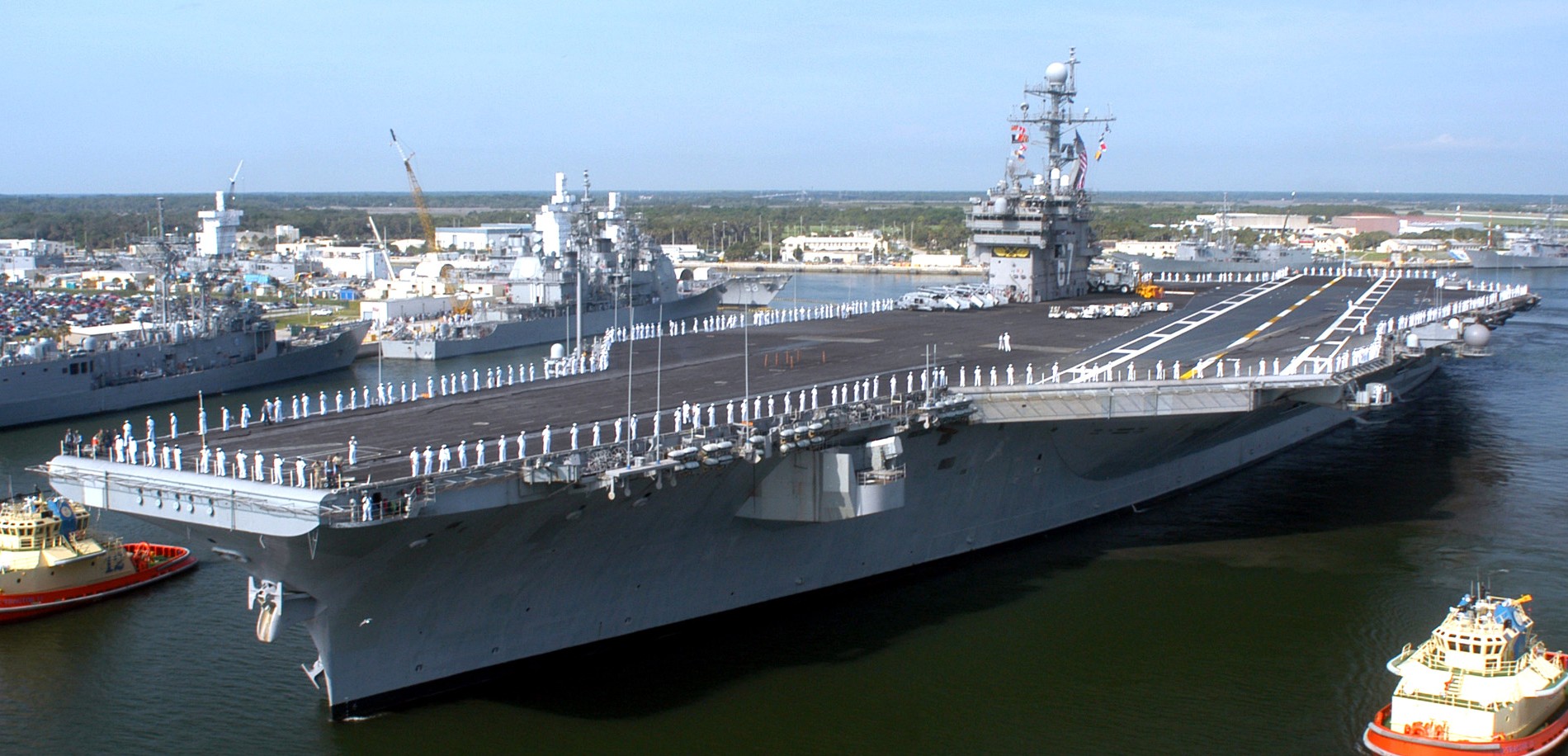 departing Mayport, Florida - June 2004 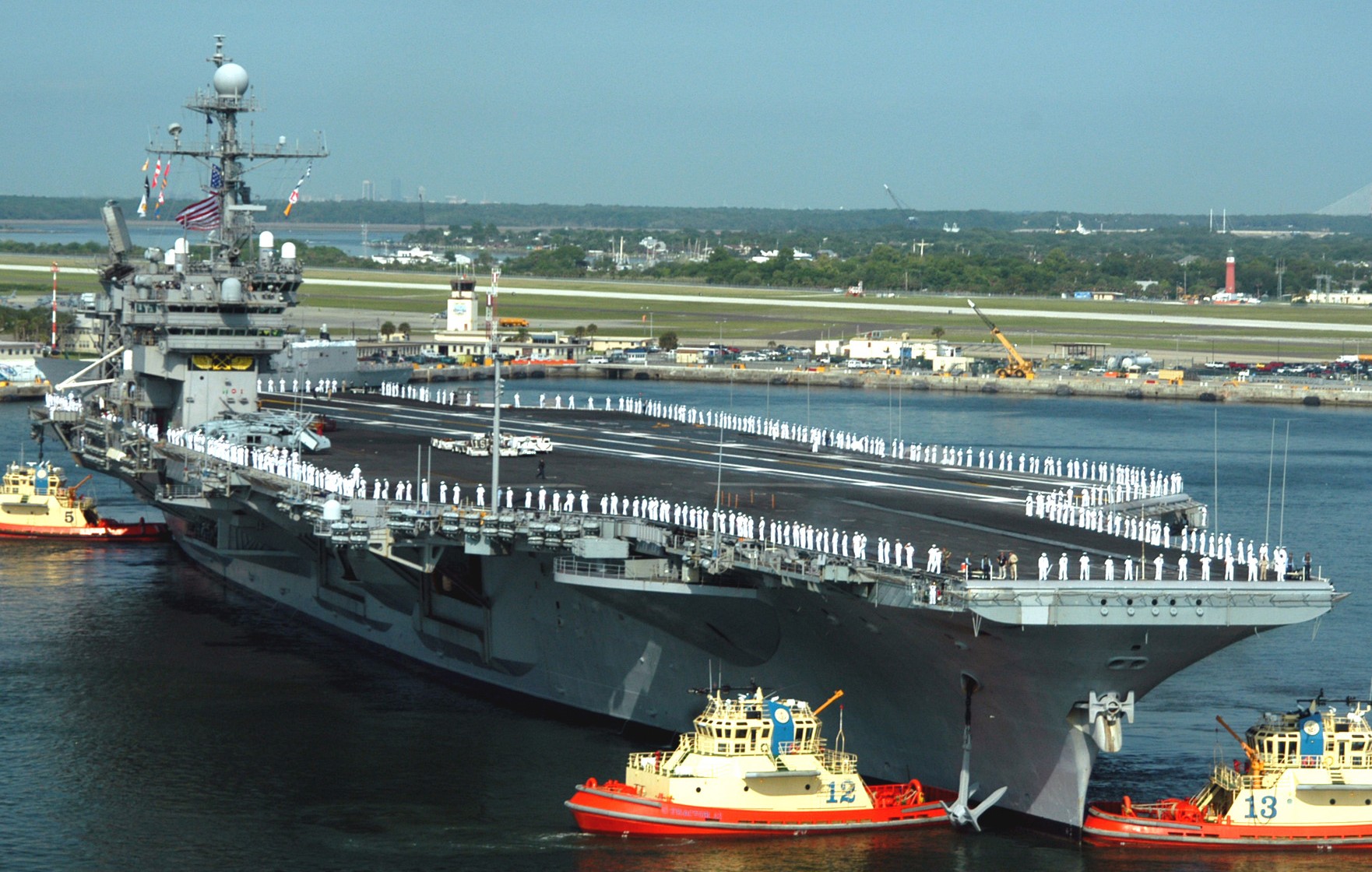 departing Mayport, Florida - June 2004 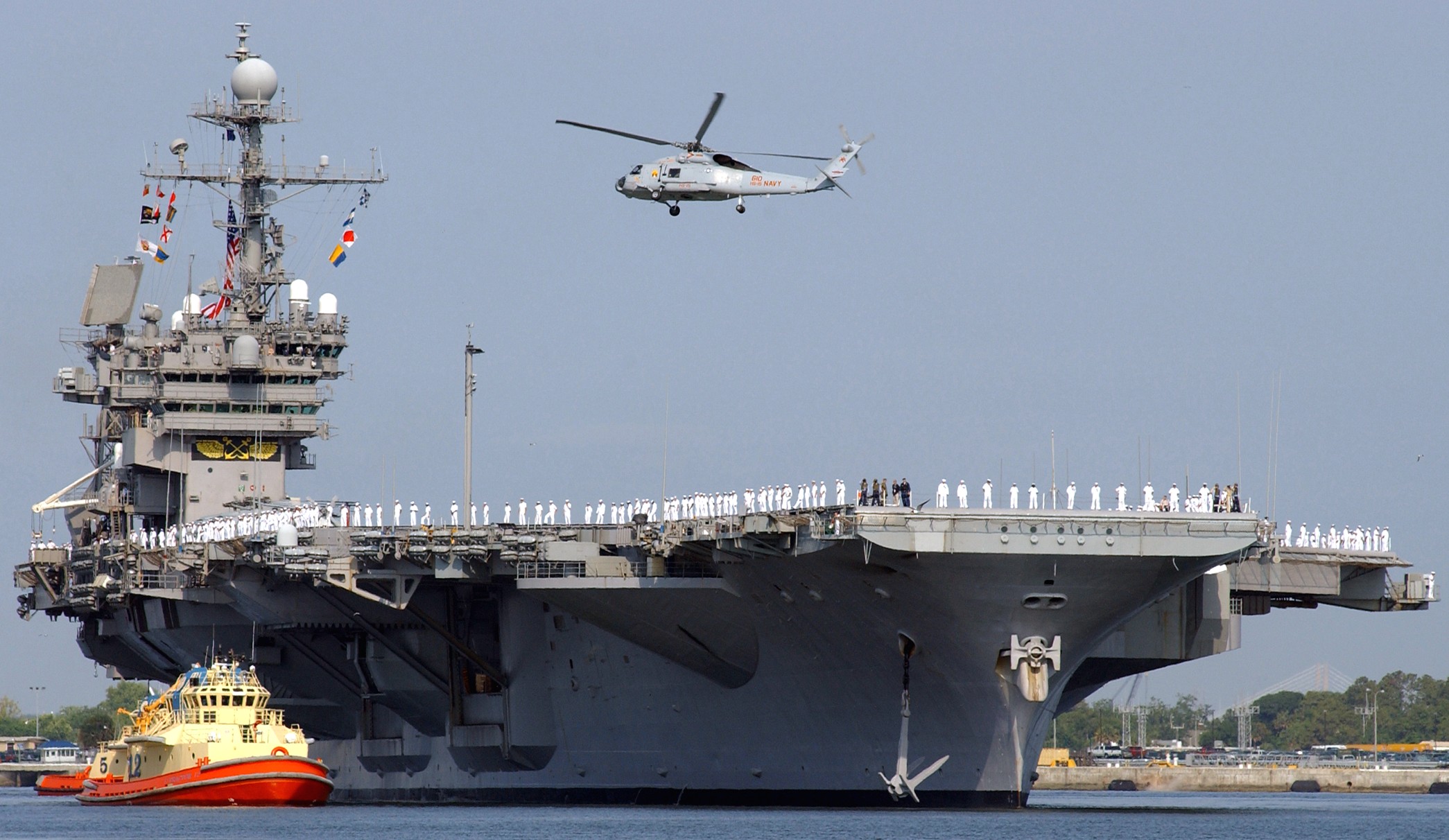 departing Mayport, Florida - June 2004 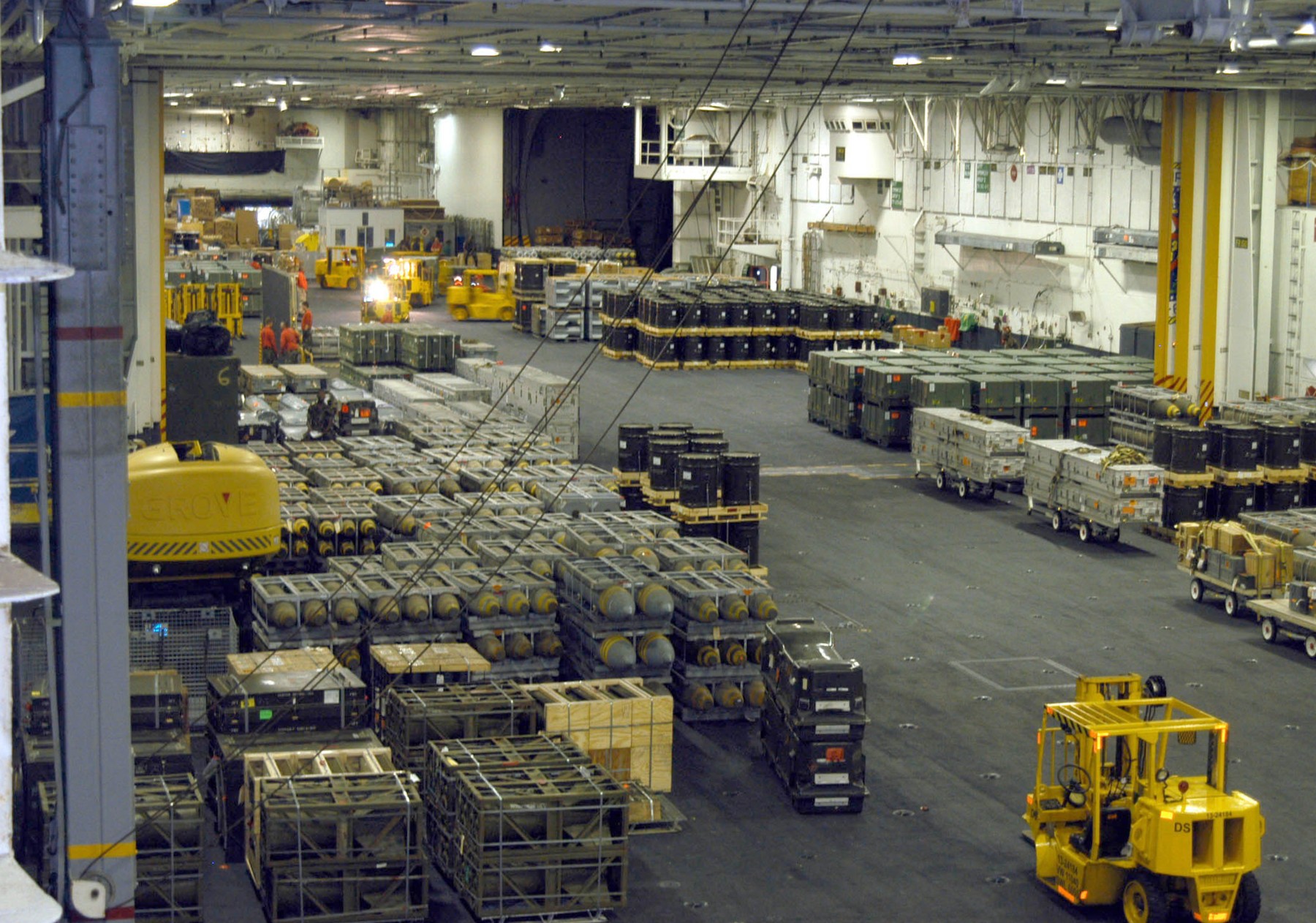 hangar bay - April 2004 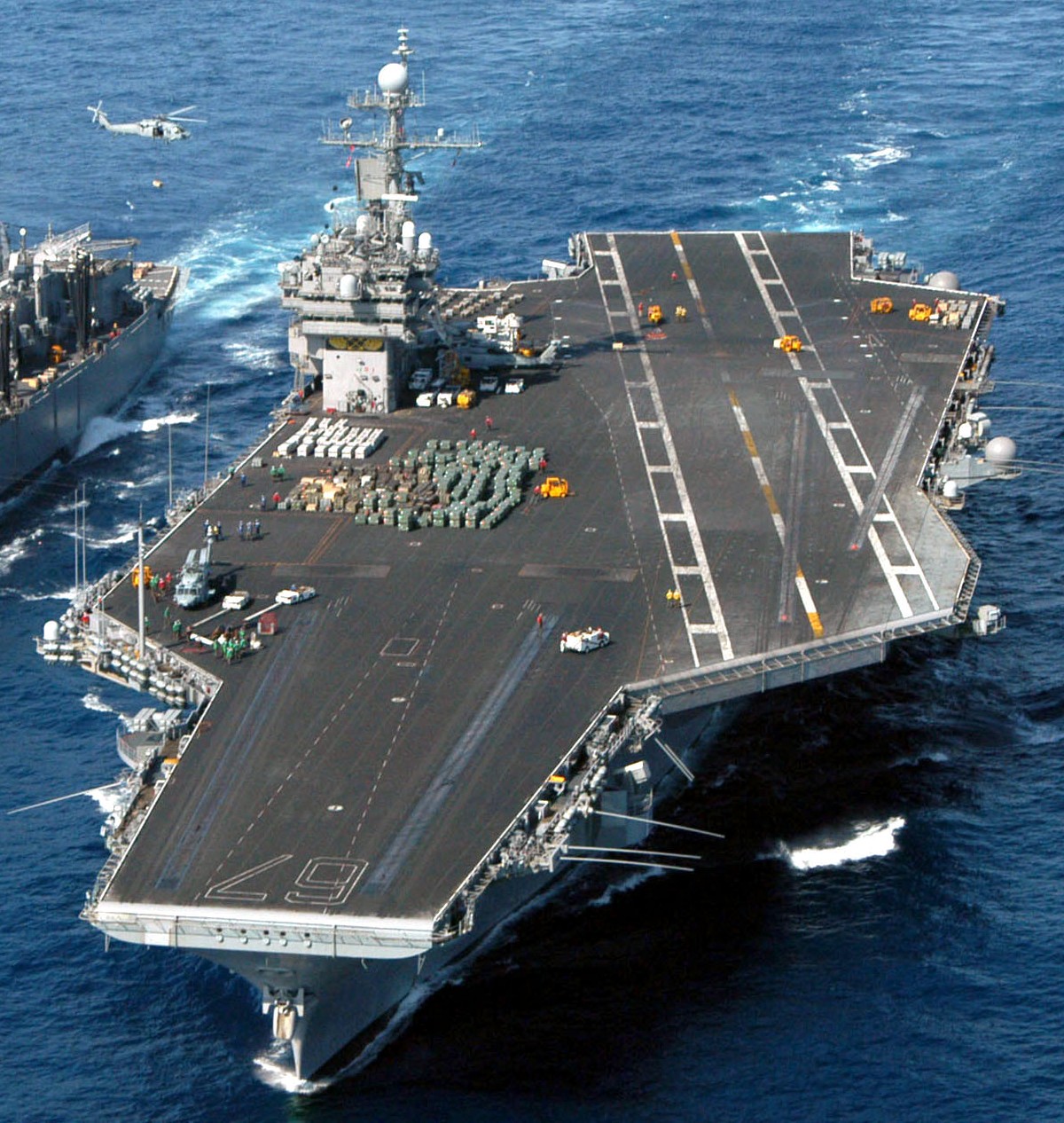 ammunition onload - April 2004 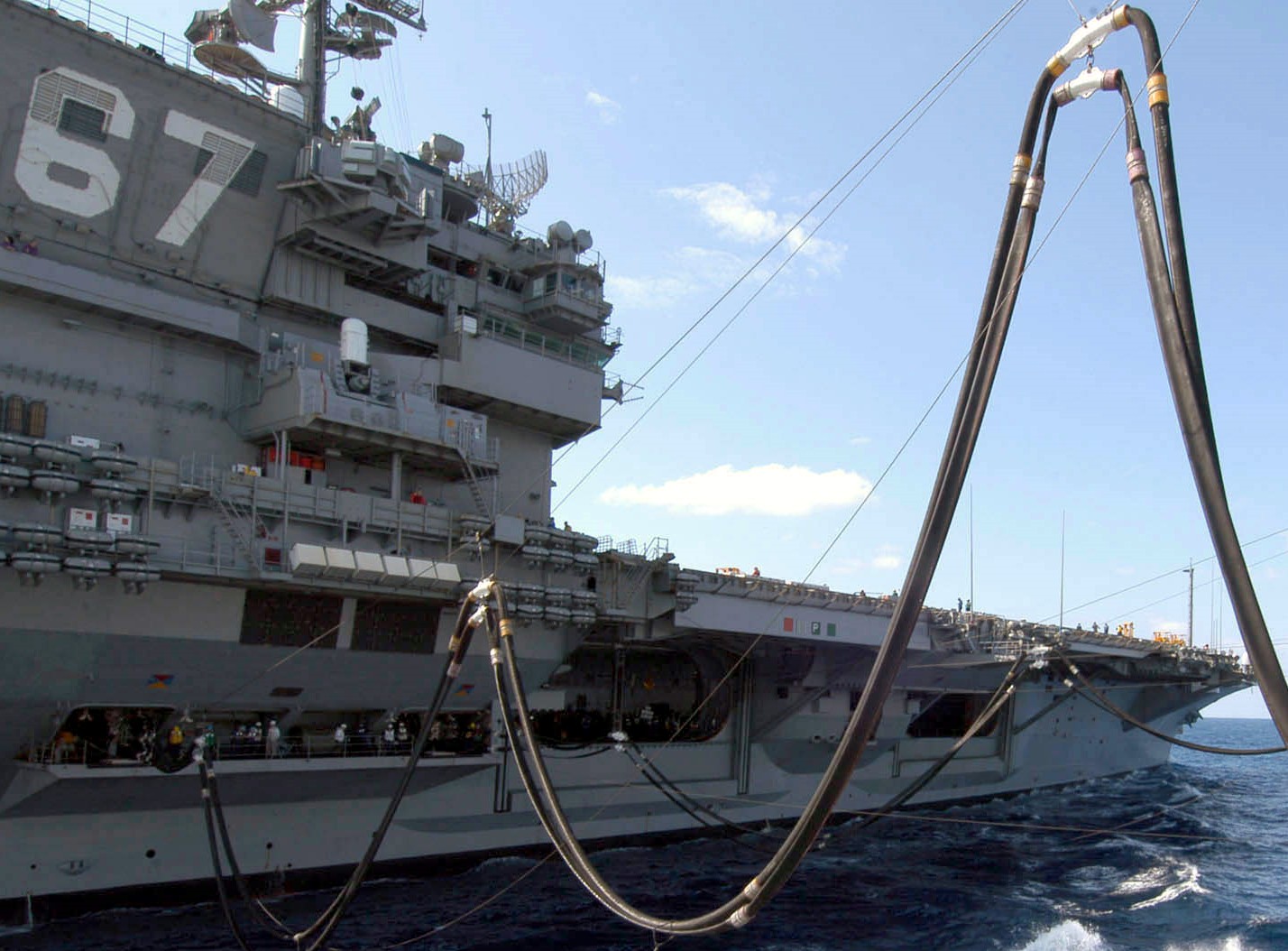 April 2004 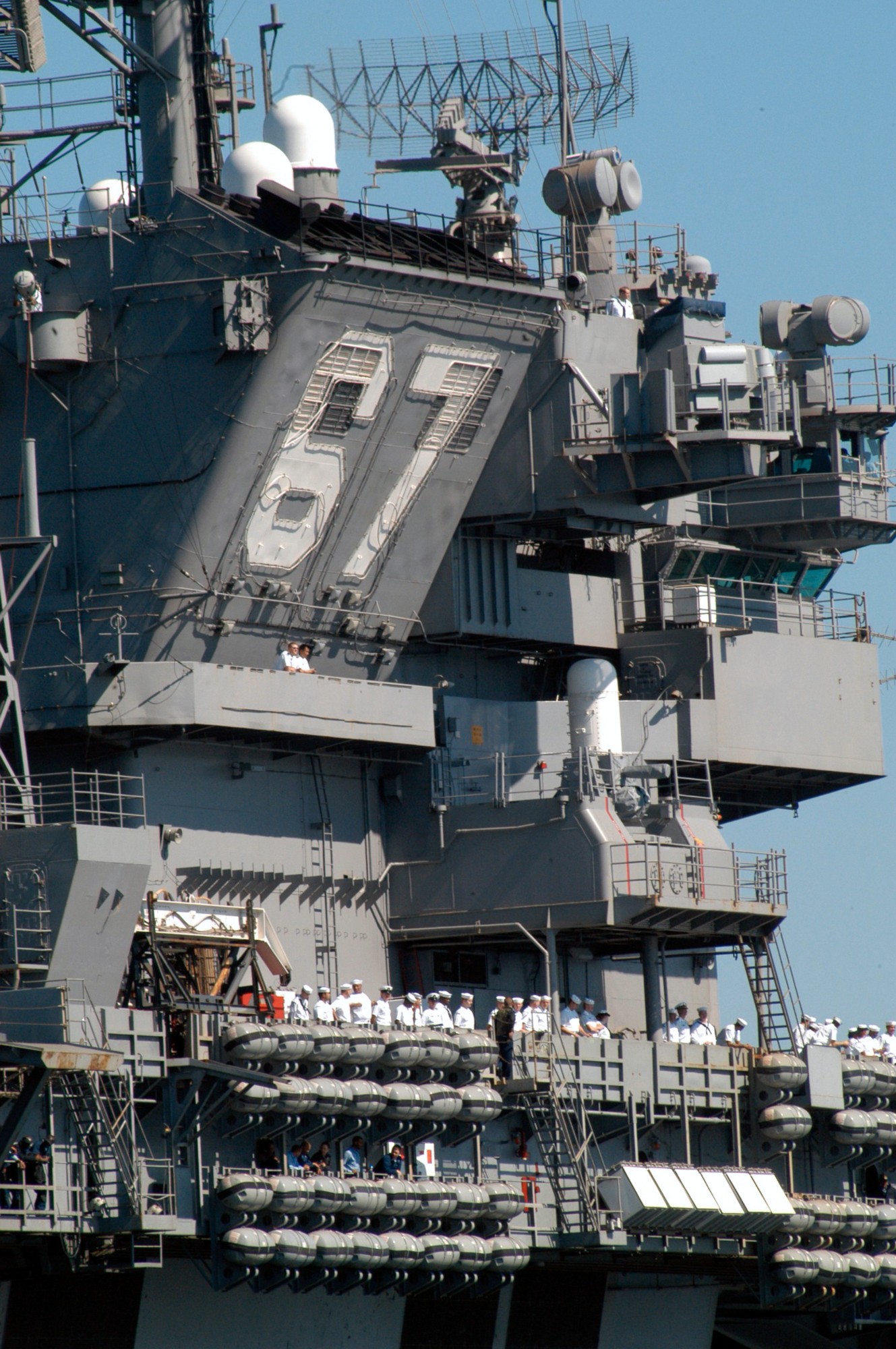 Pensacola, Florida - March 2004 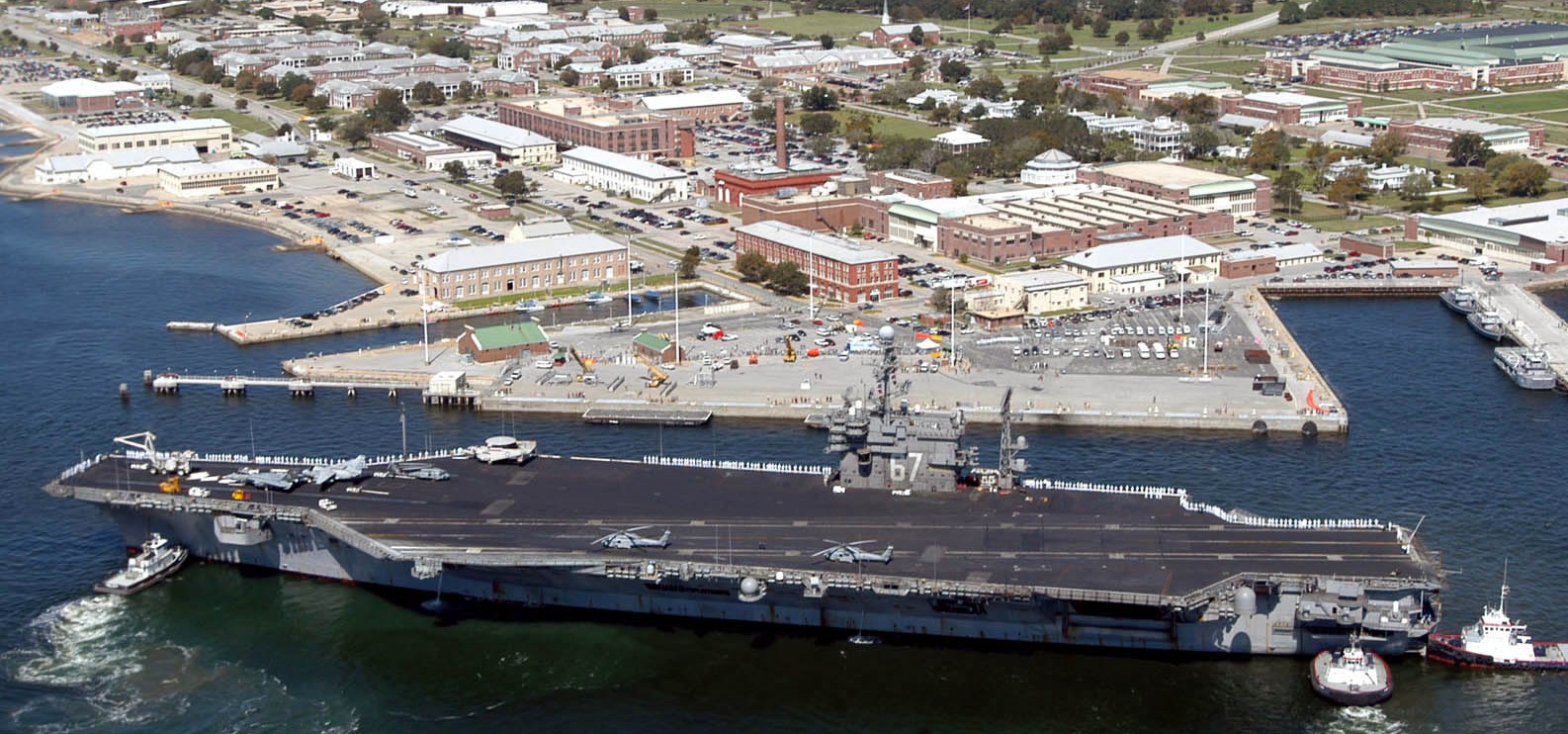 Pensacola, Florida - March 2004 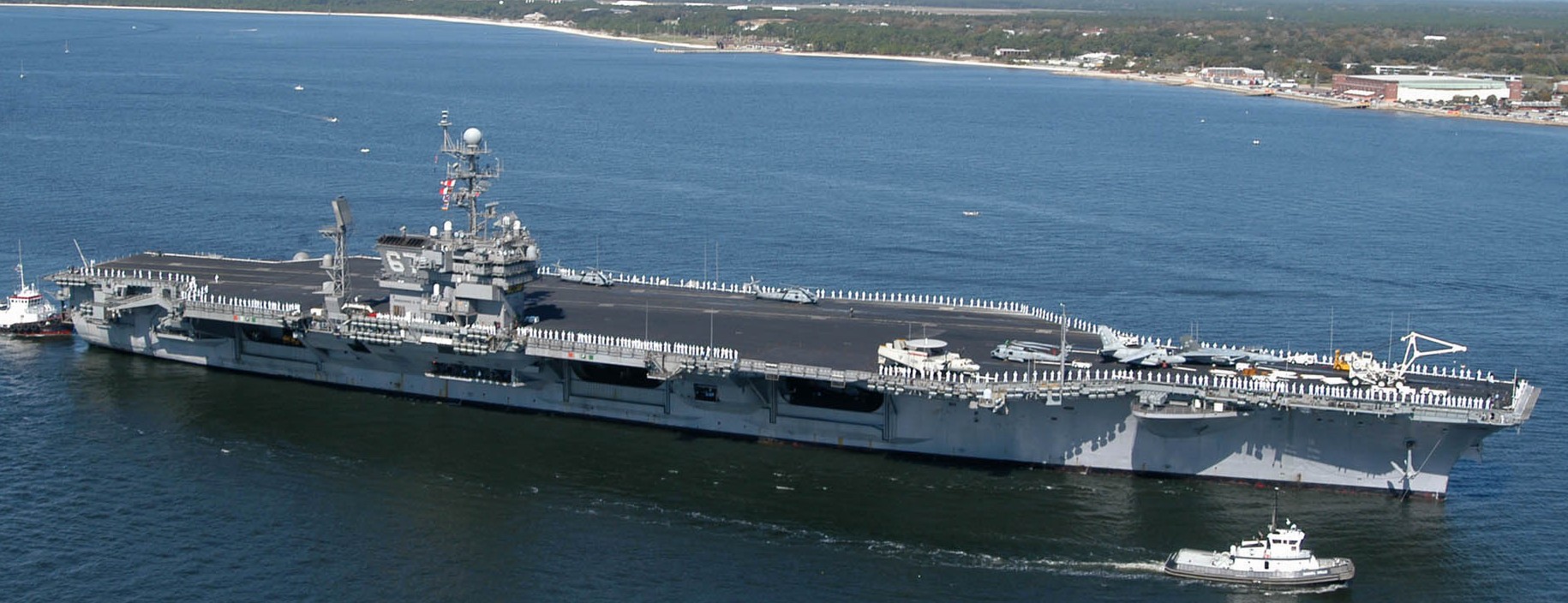 Pensacola, Florida - March 2004  Pensacola, Florida - March 2004  Pensacola, Florida - March 2004 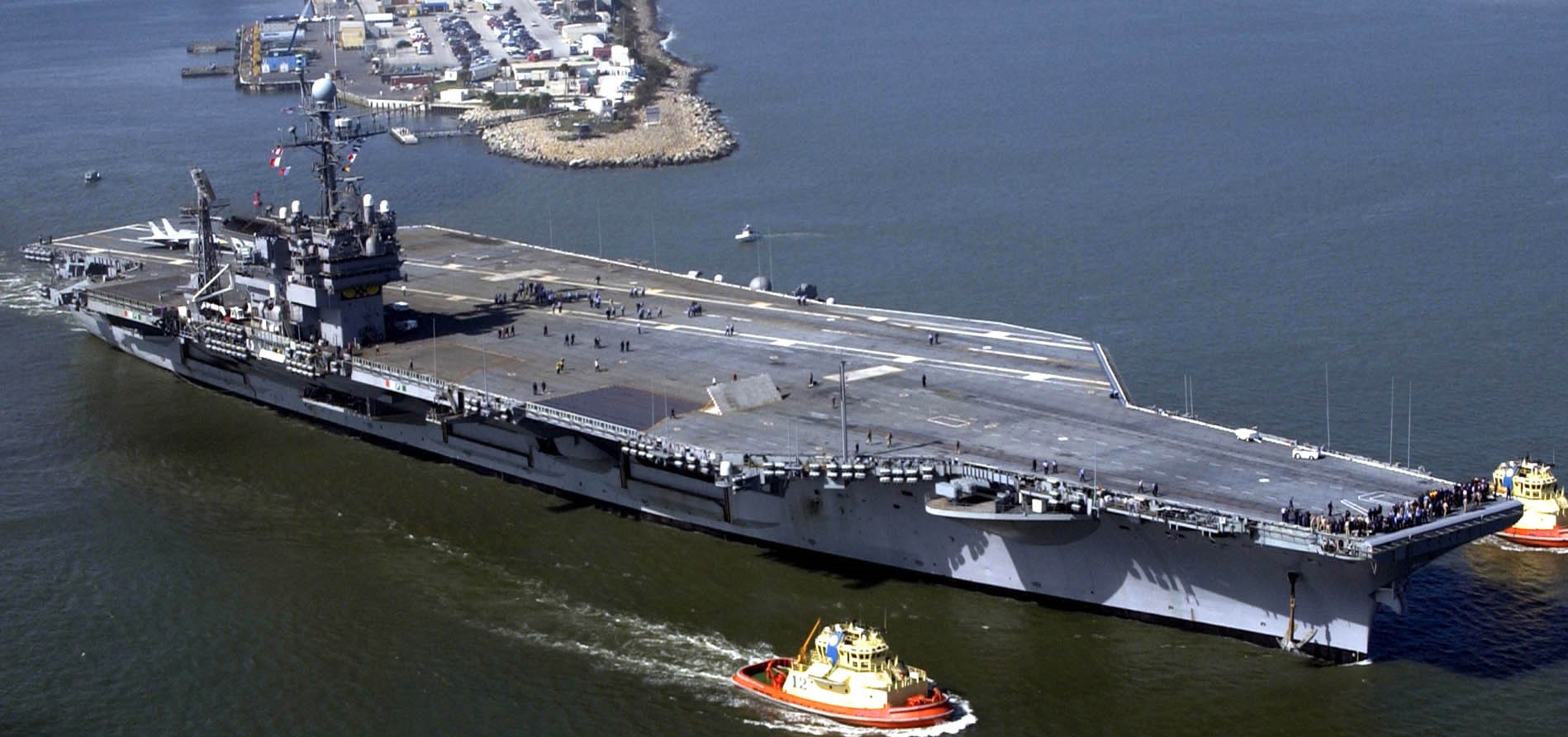 Mayport, Florida - November 2003 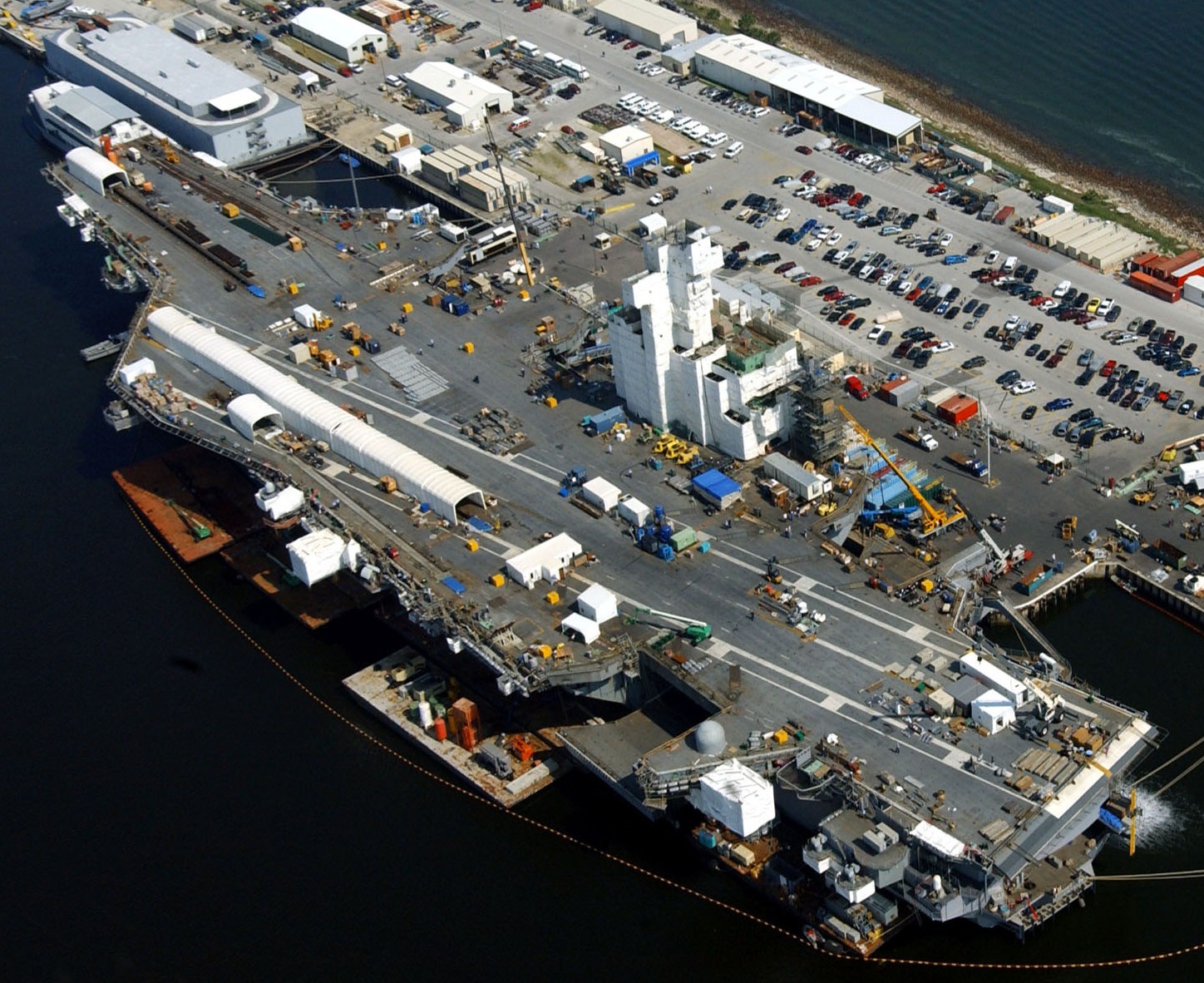 nine-month Extended Service Repair Availabilita (ESRA) - Mayport, Florida - June 2003 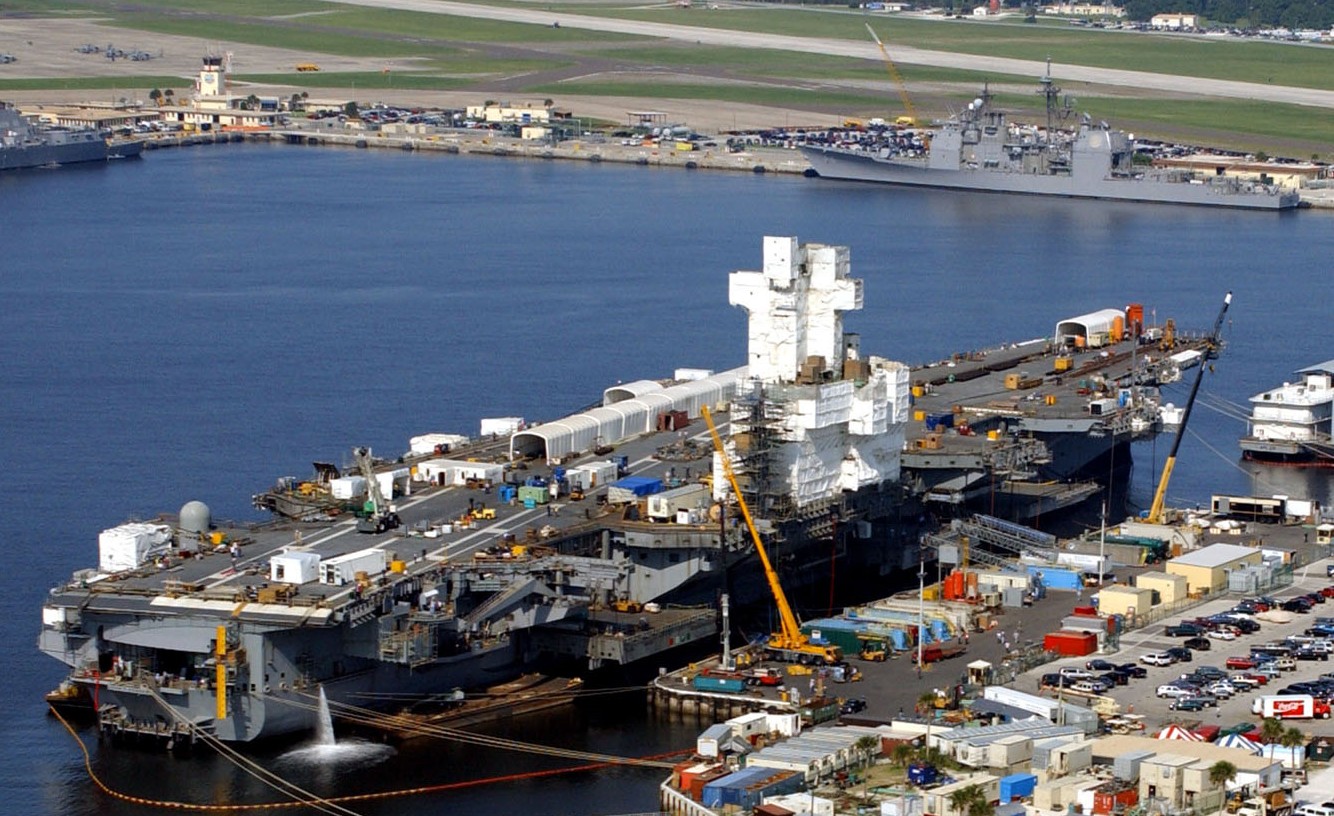 nine-month Extended Service Repair Availabilita (ESRA) - Mayport, Florida - June 2003 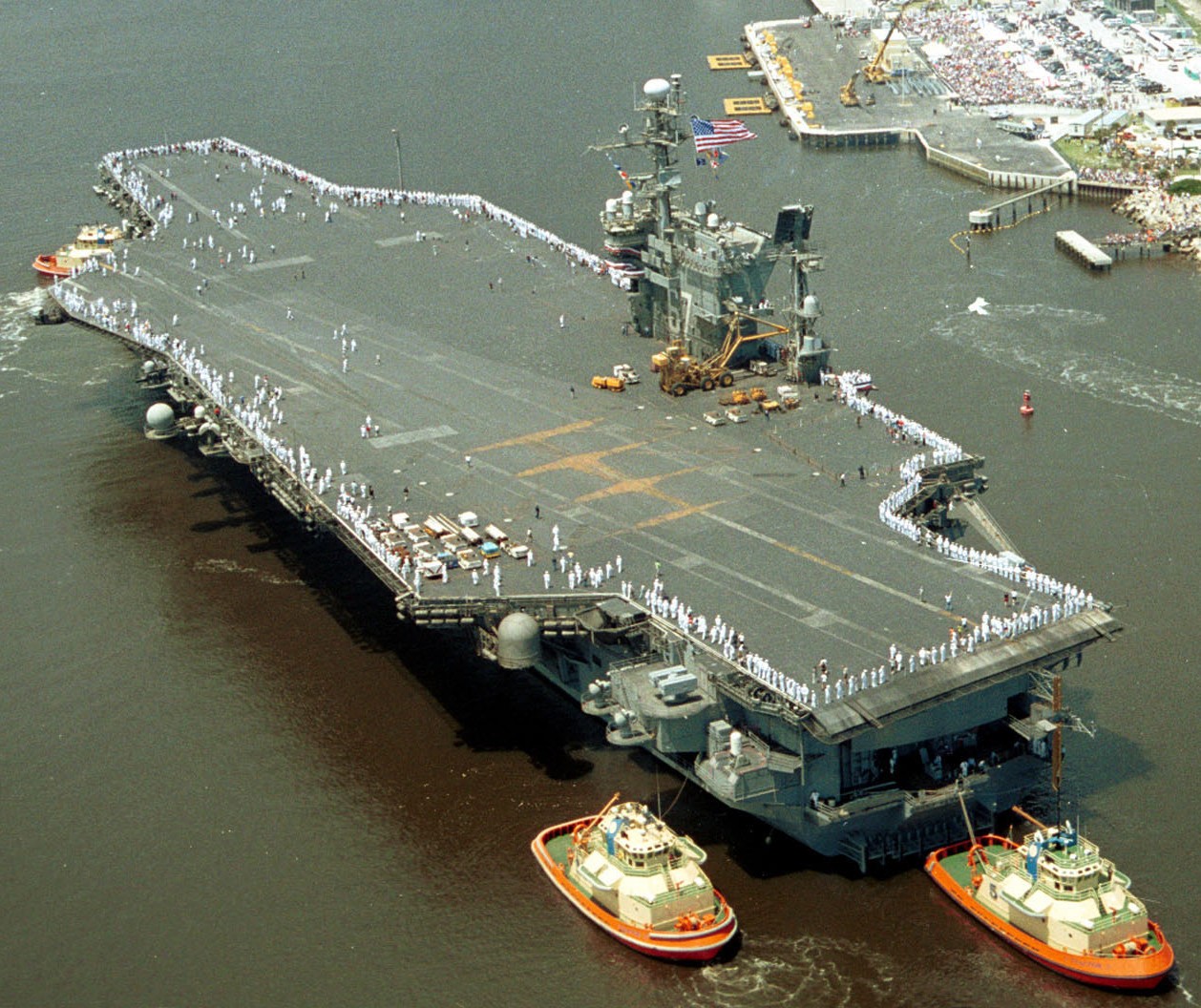 returning from deployment - Mayport, Florida - August 2002  with CVW-7 embarked - Gibraltar - August 2002 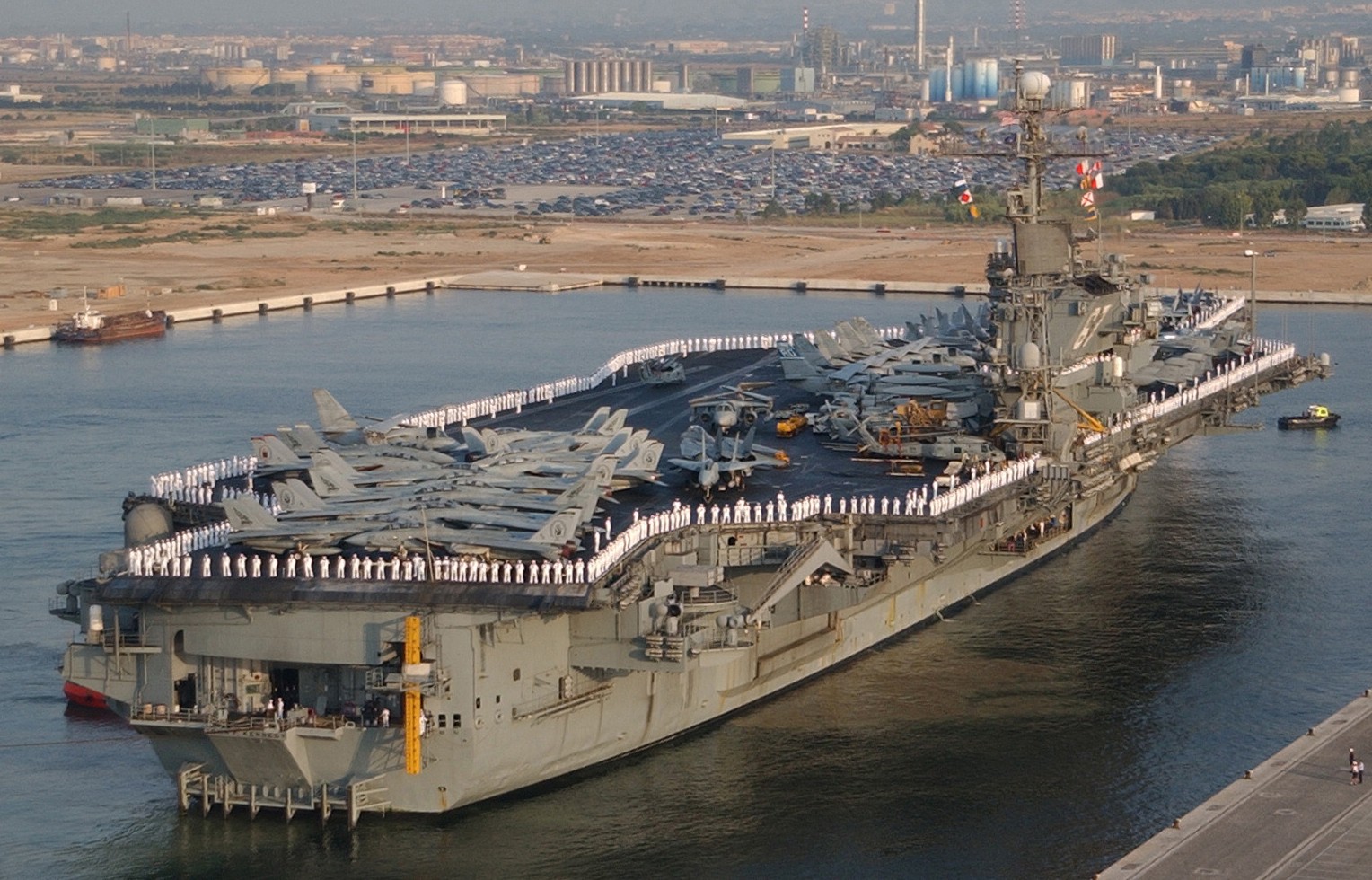 with CVW-7 embarked - Tarragona, Spain - August 2002 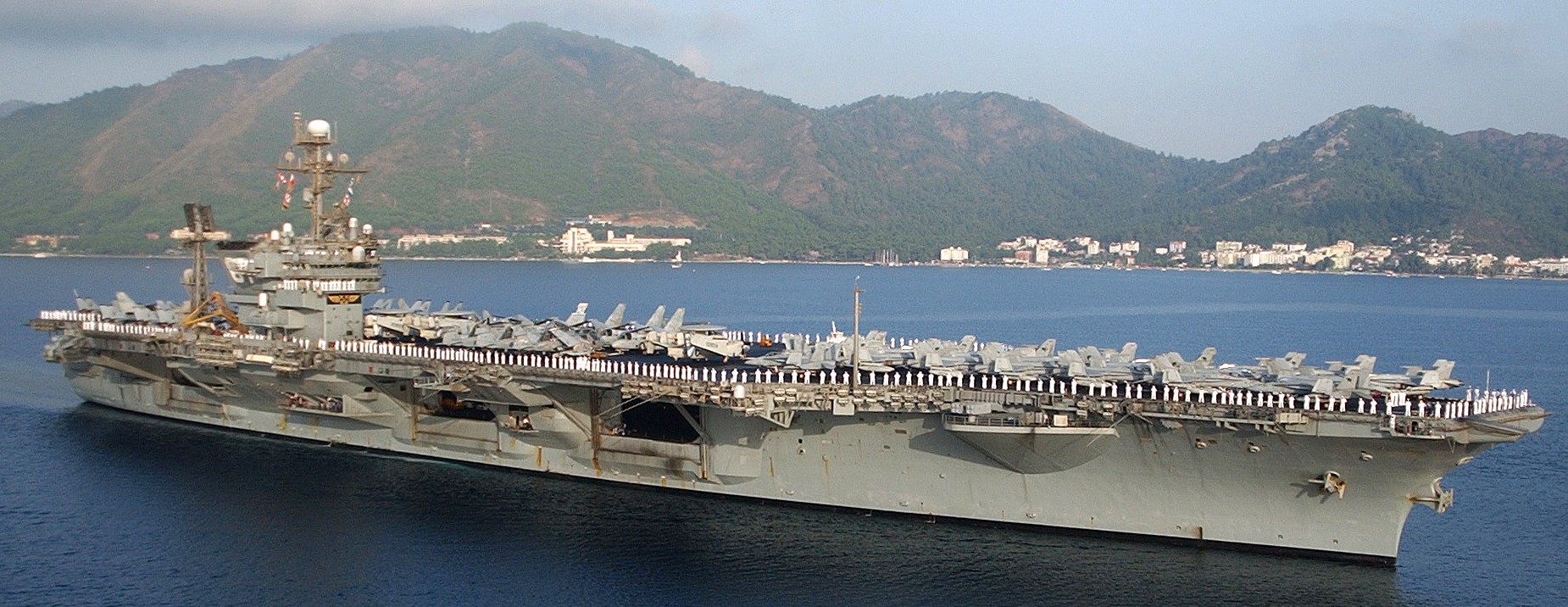 with CVW-7 embarked - Marmaris, Turkey - July 2002 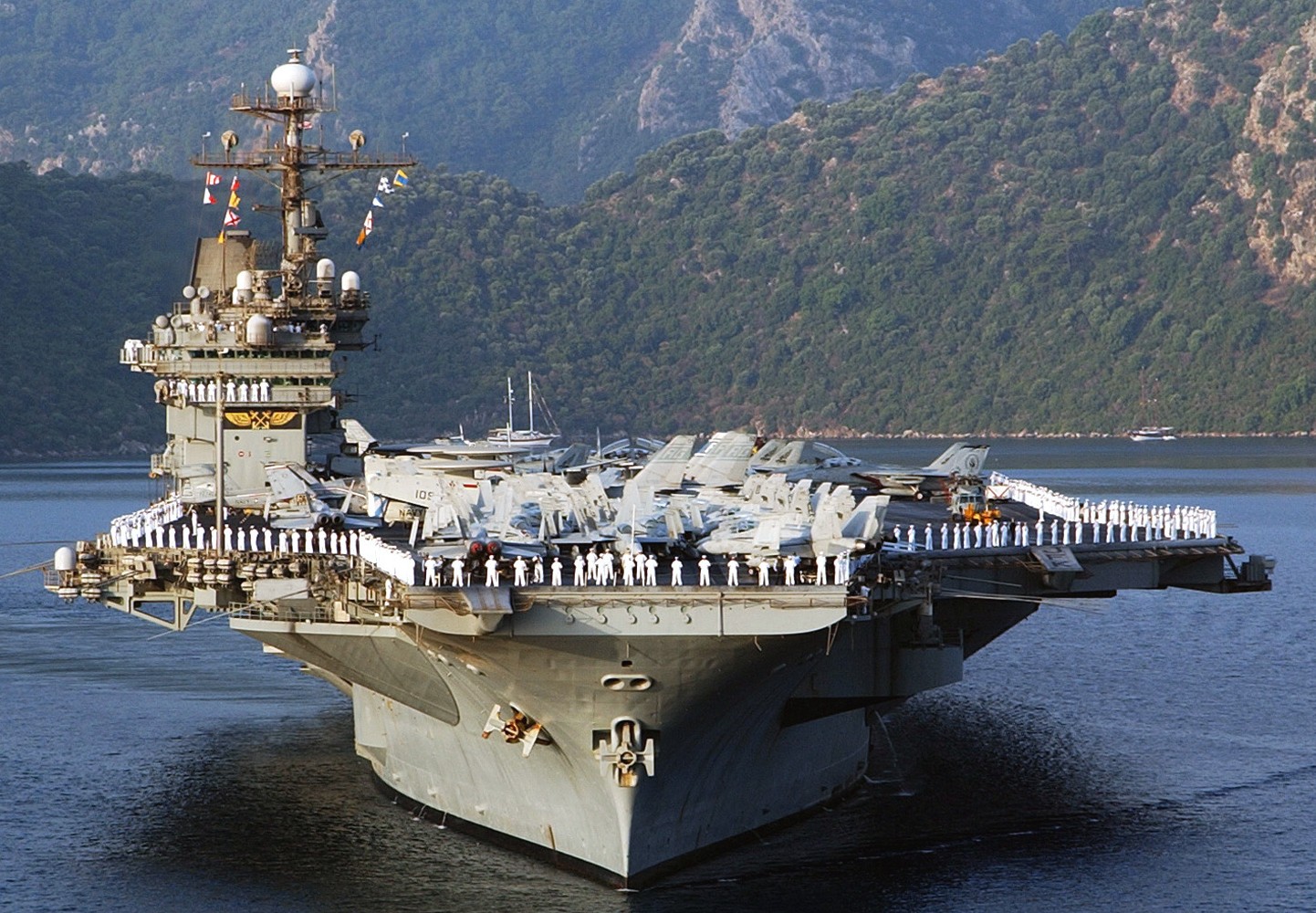 with CVW-7 embarked - Marmaris, Turkey - July 2002 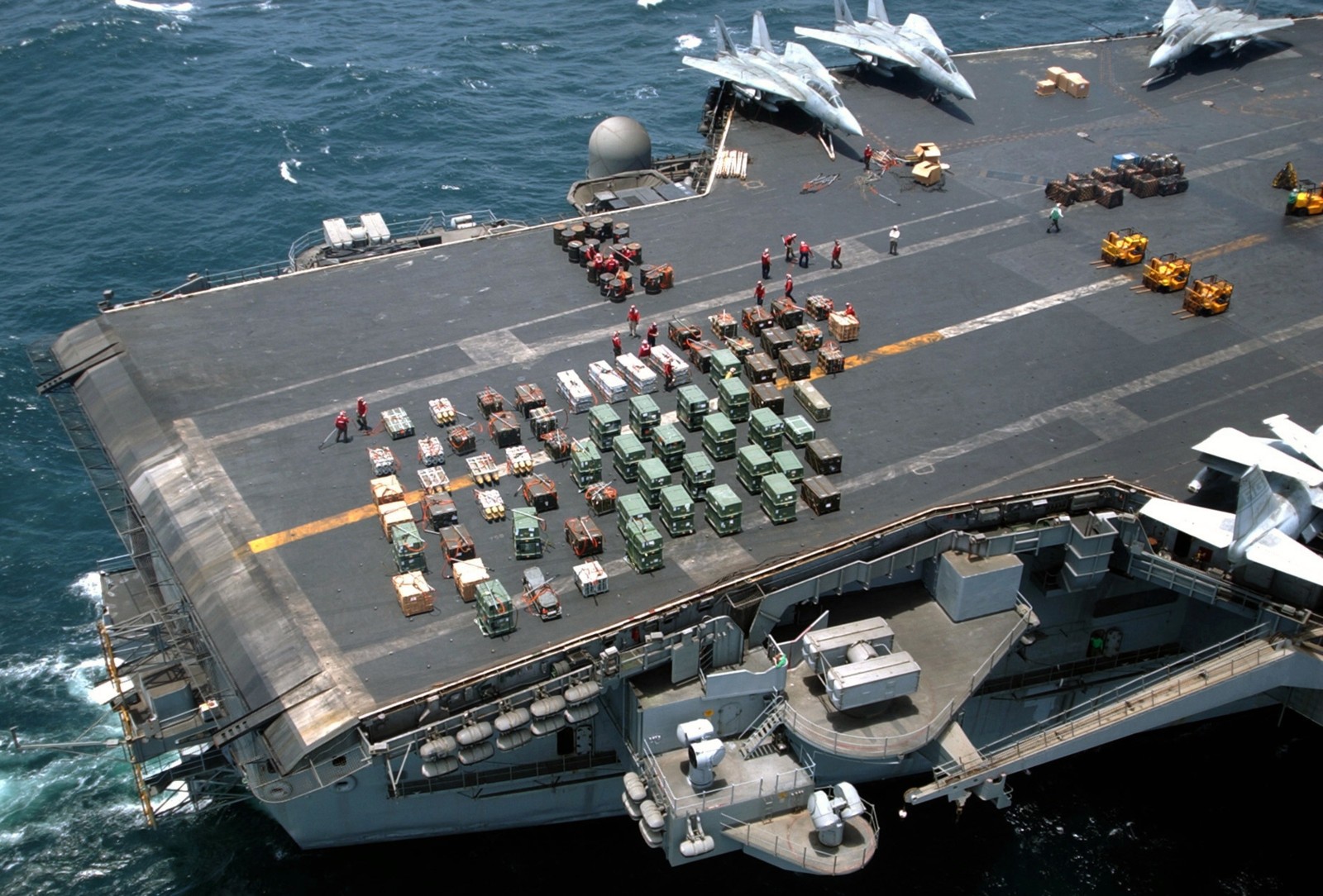 with CVW-7 embarked - operation Enduring Freedom - July 2002 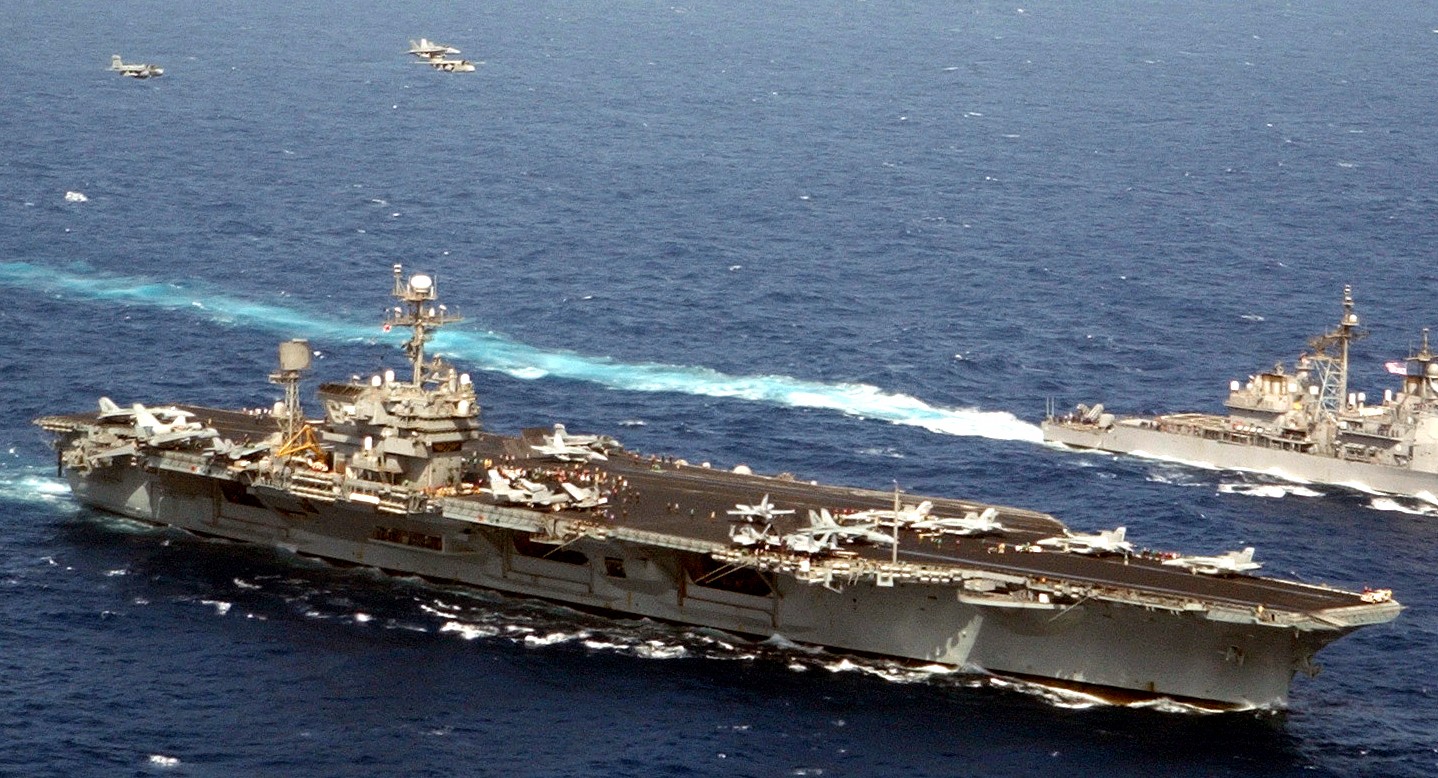 with CVW-7 embarked - May 2002 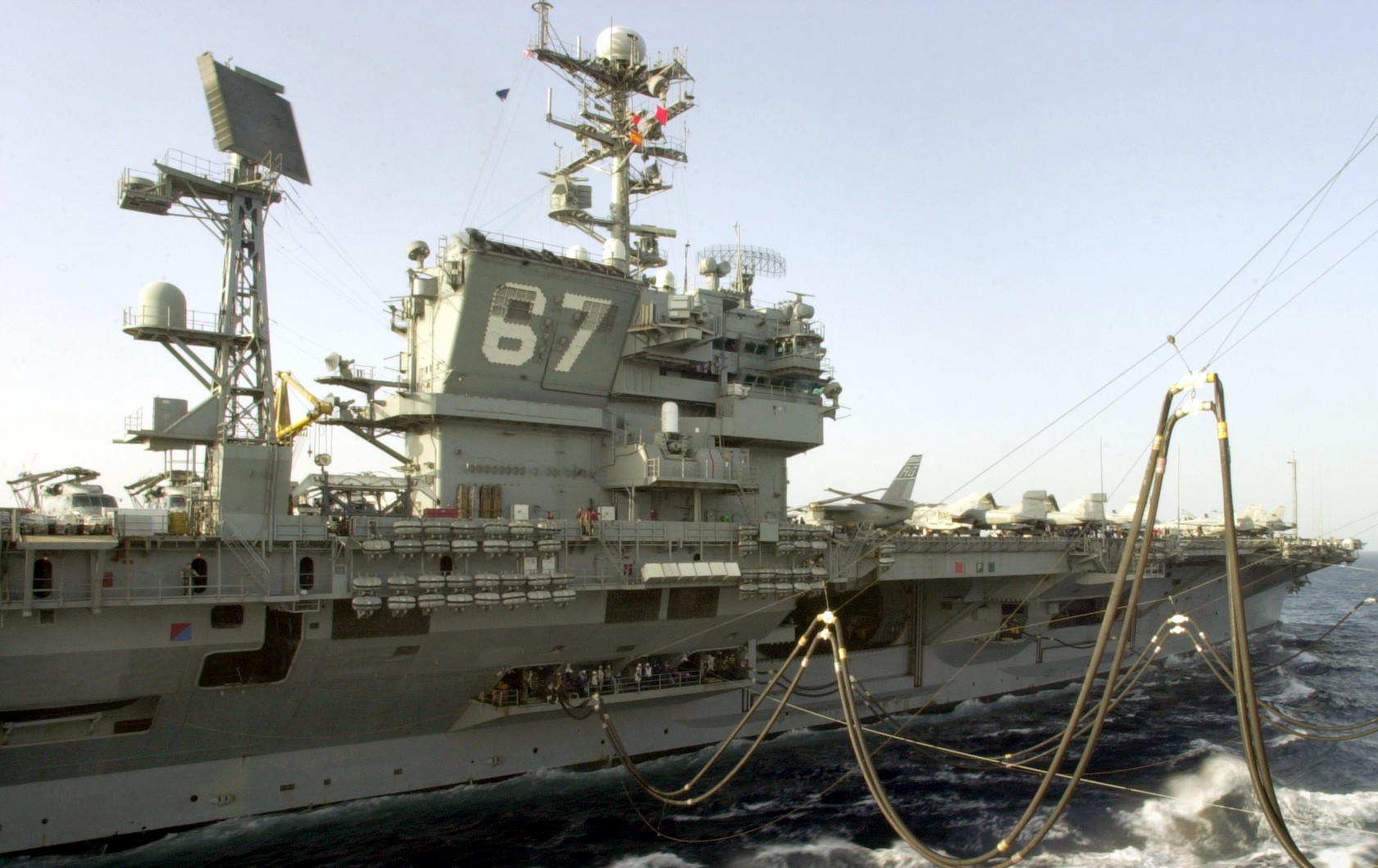 with CVW-7 embarked - April 2002 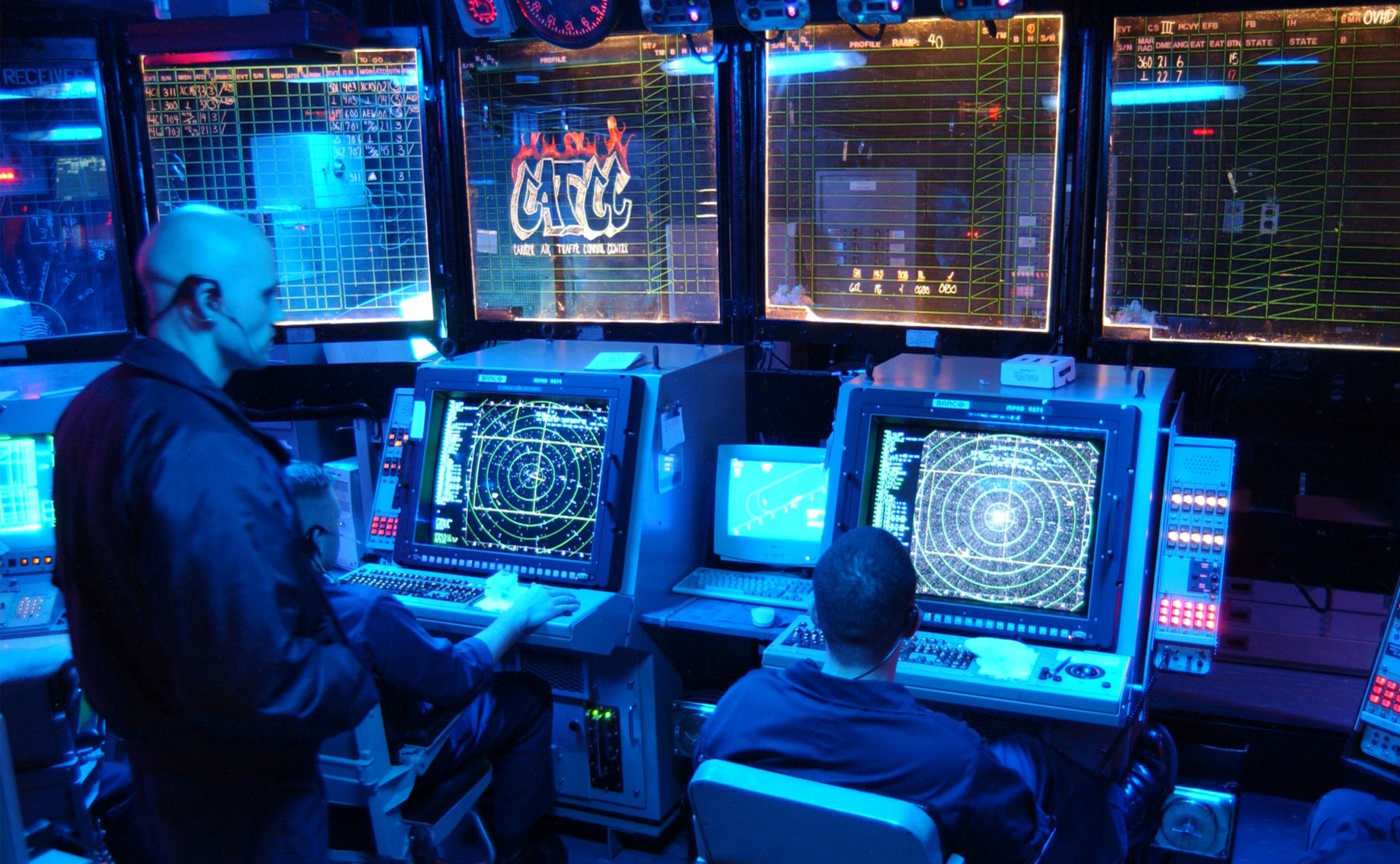 Carrier Air Traffic Control Center (CATCC) - March 2002 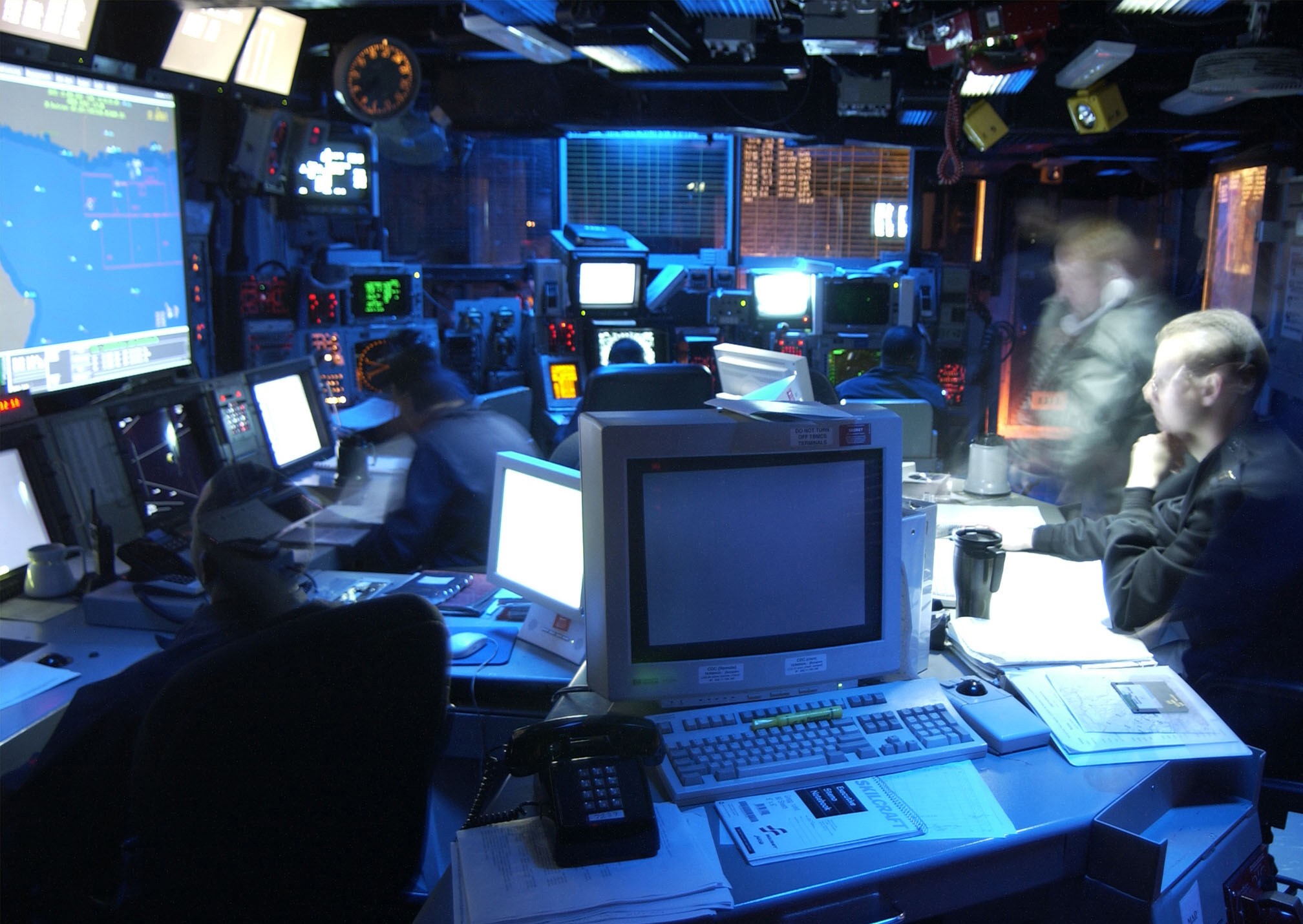 Carrier Air Traffic Control Center (CATCC) - March 2002 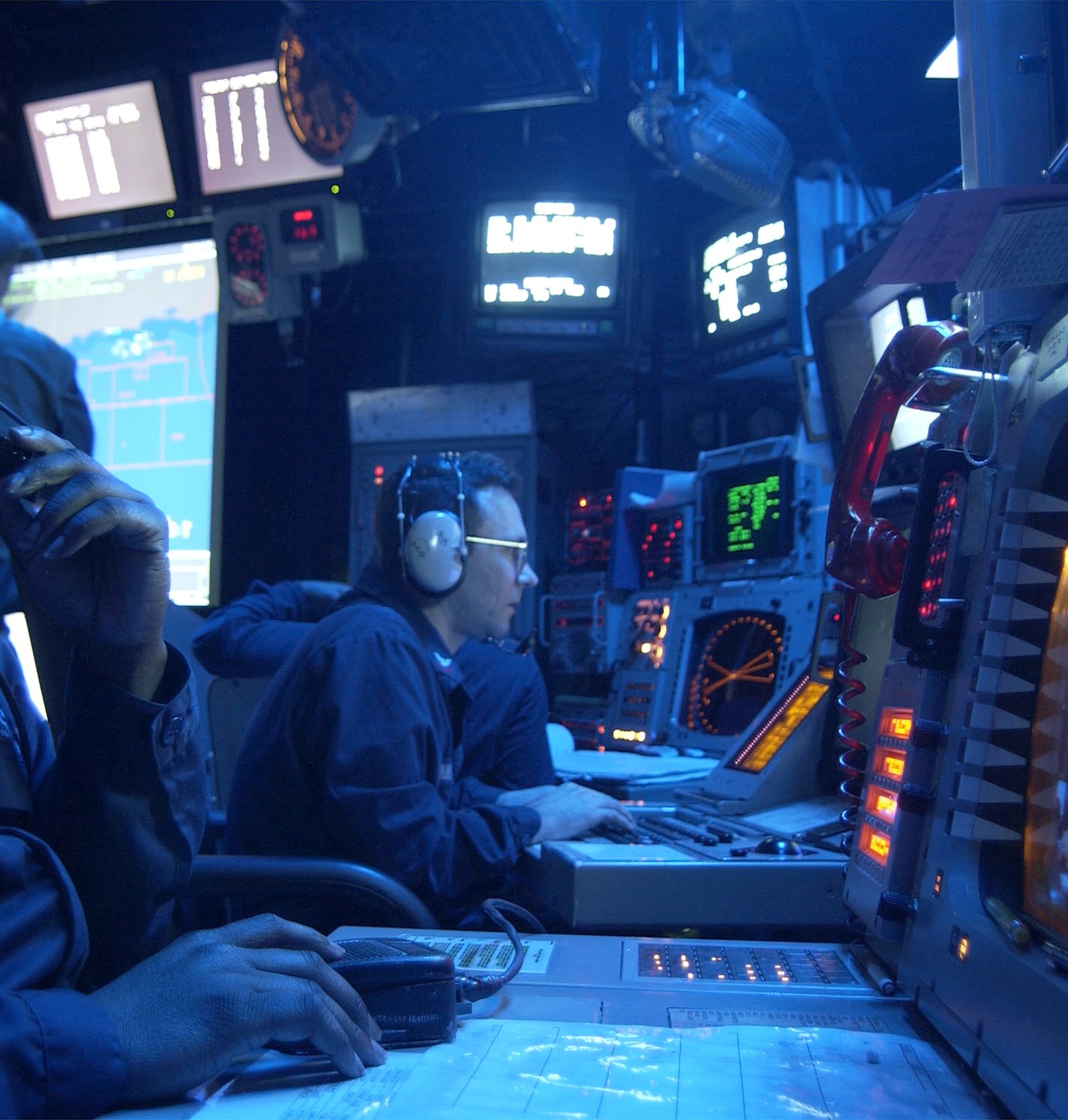 Combat Direction Center (CDC) - March 2002 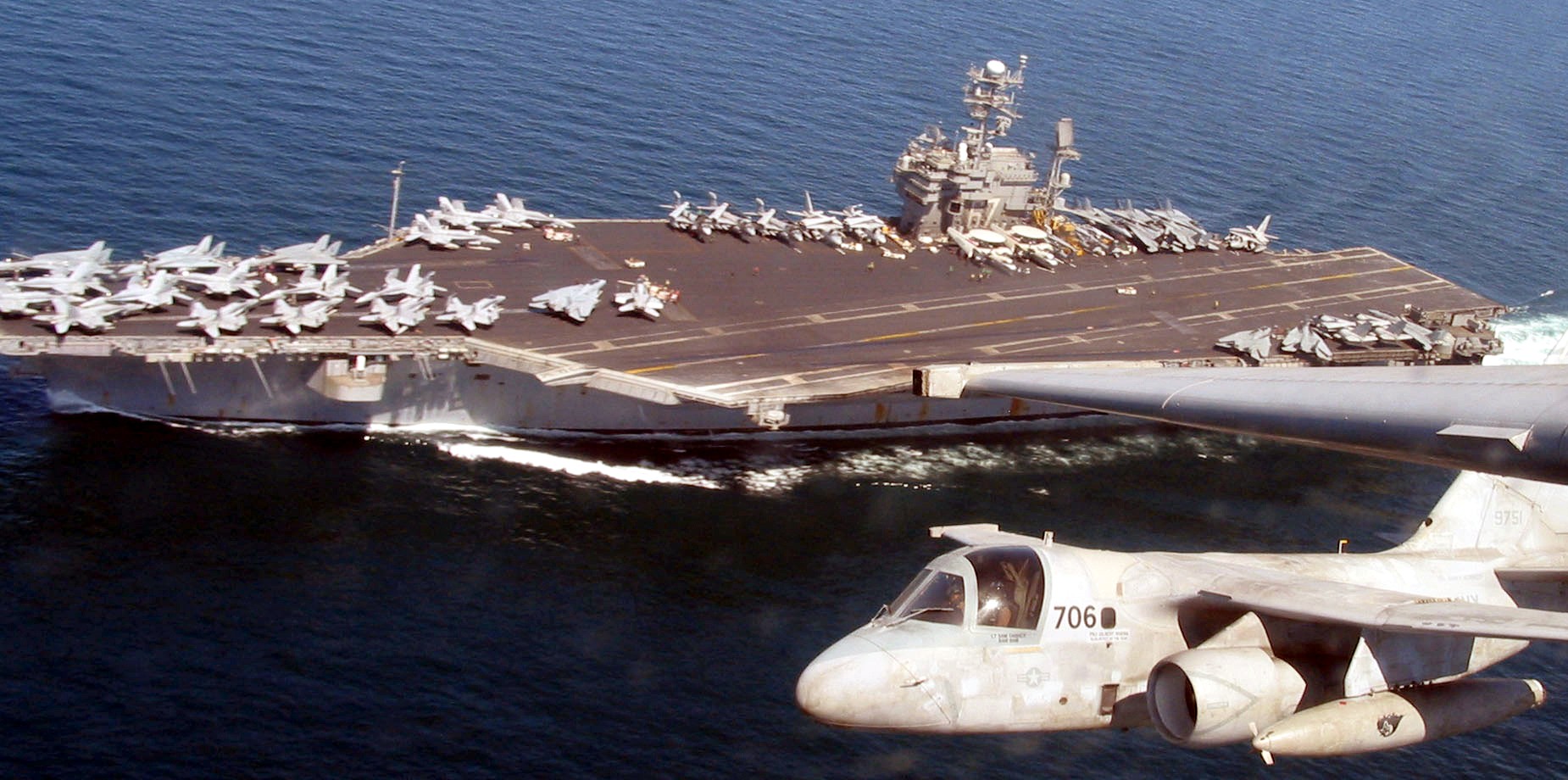 with CVW-7 embarked - March 2002 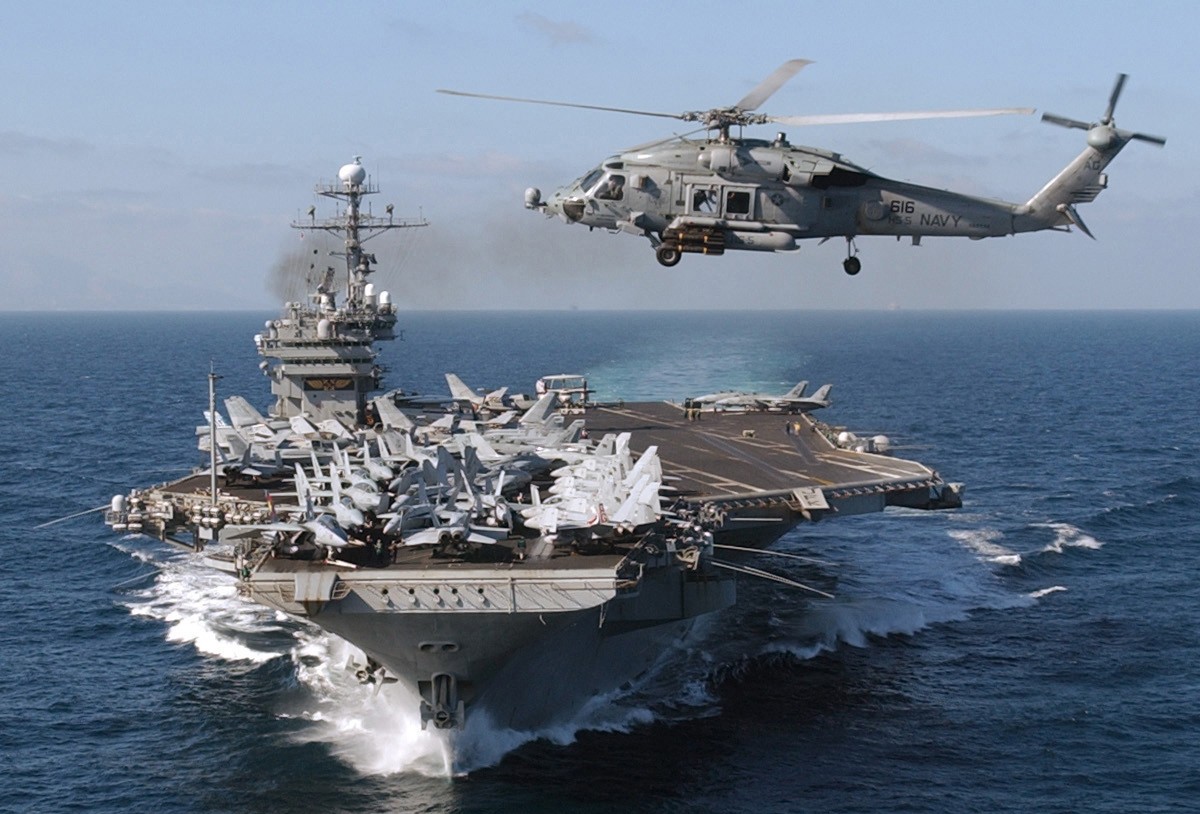 with CVW-7 embarked - February 2002  with CVW-7 embarked - February 2002 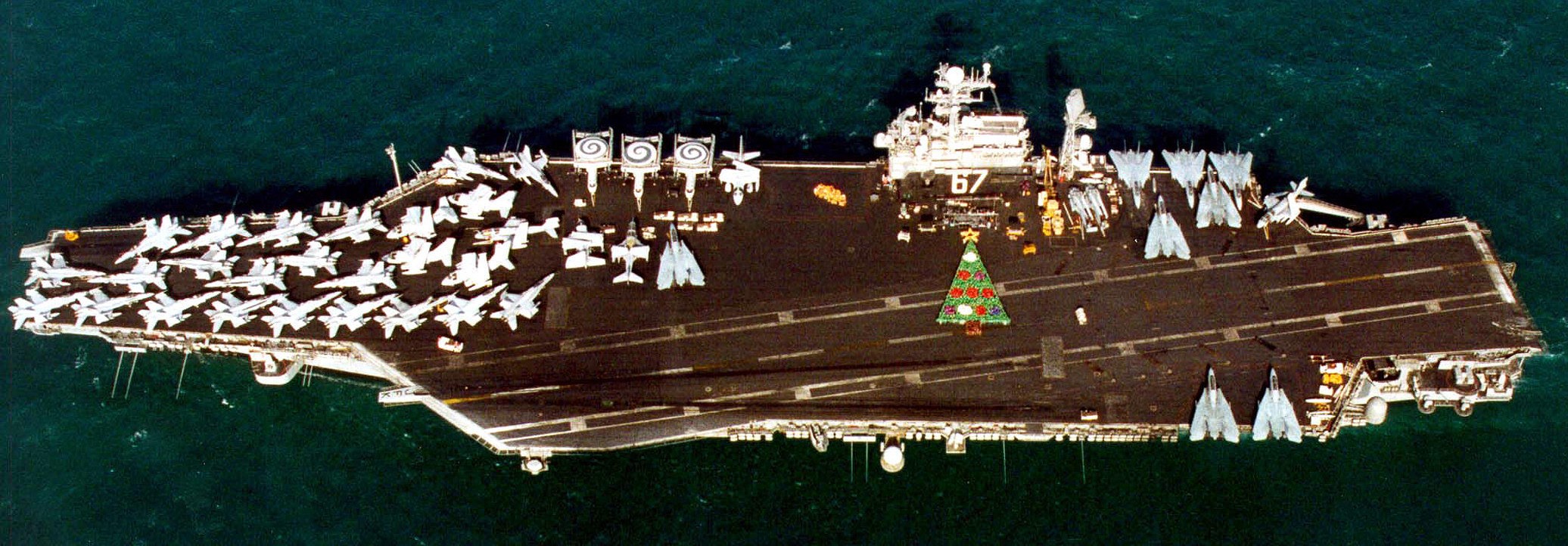 with CVW-1 embarked - Persian Gulf - December 1999 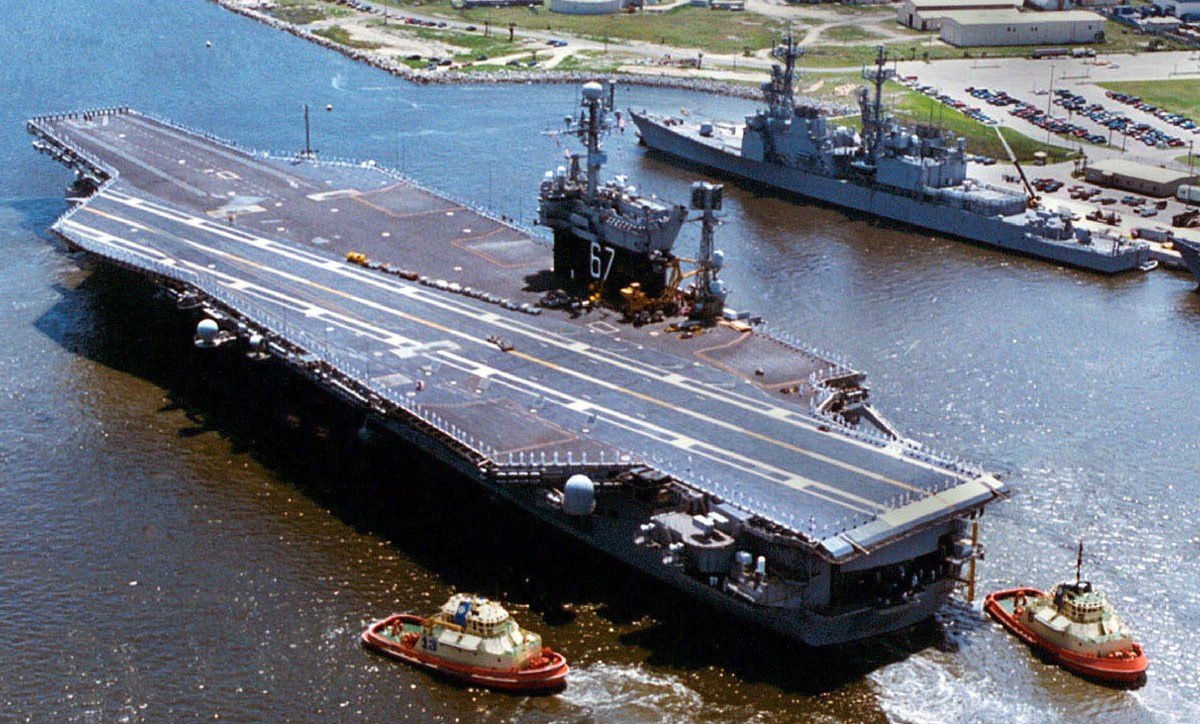 departing Naval Station Mayport, Florida - April 1997 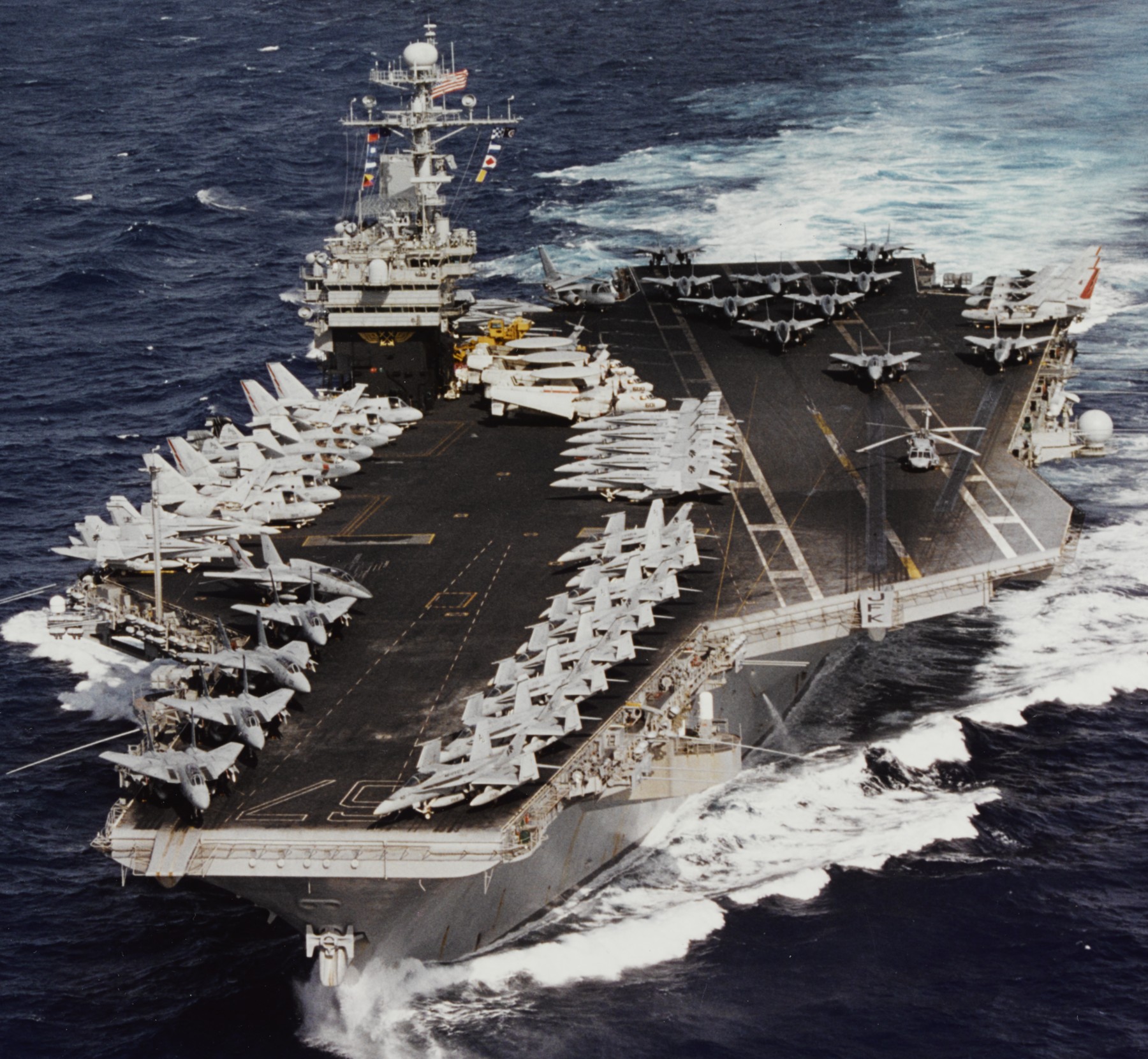 with CVW-8 embarked - December 1996 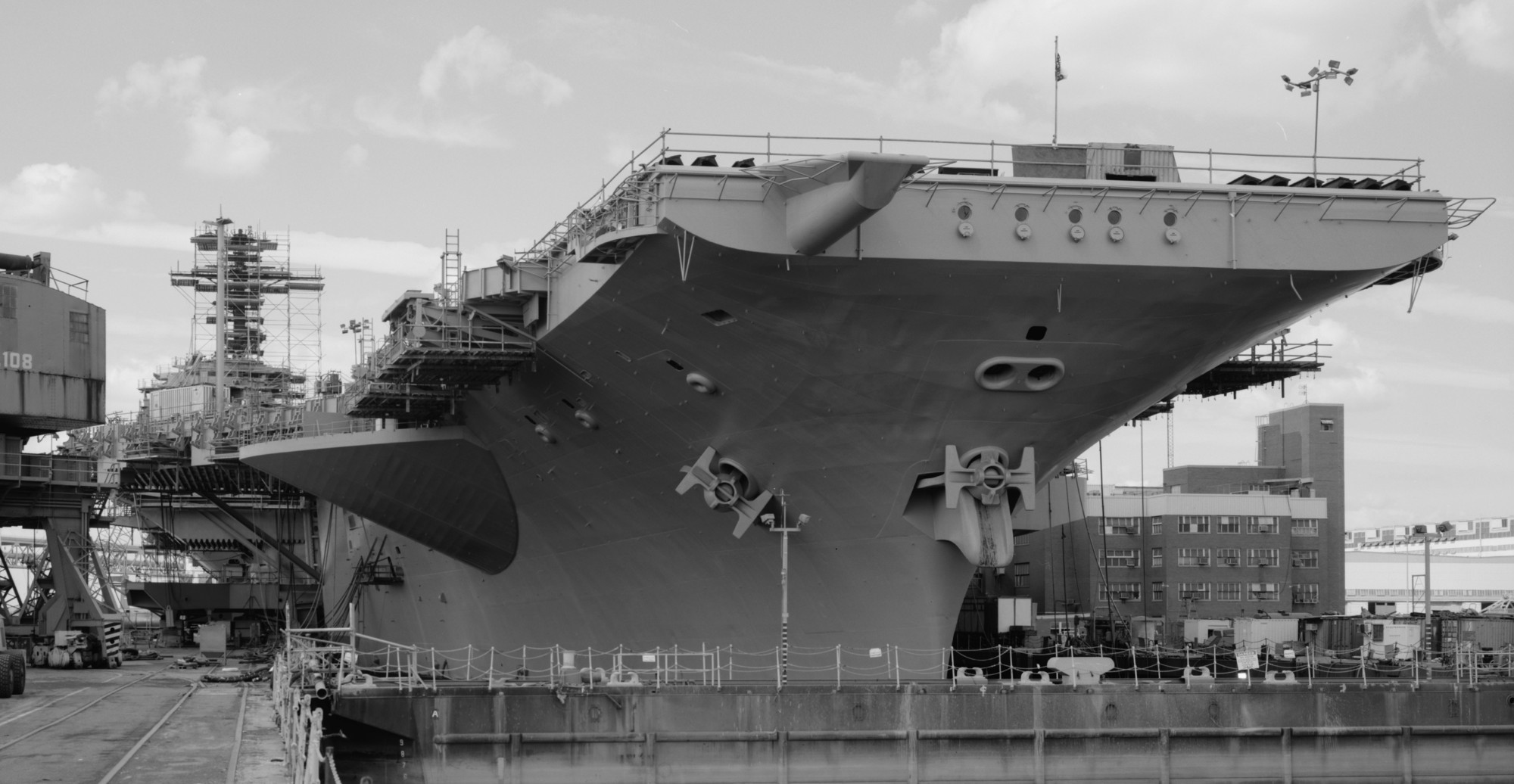 during Service Life Extension Program (SLEP) at Philadelphia Naval Shipyard, Pennsylvania - September 1994 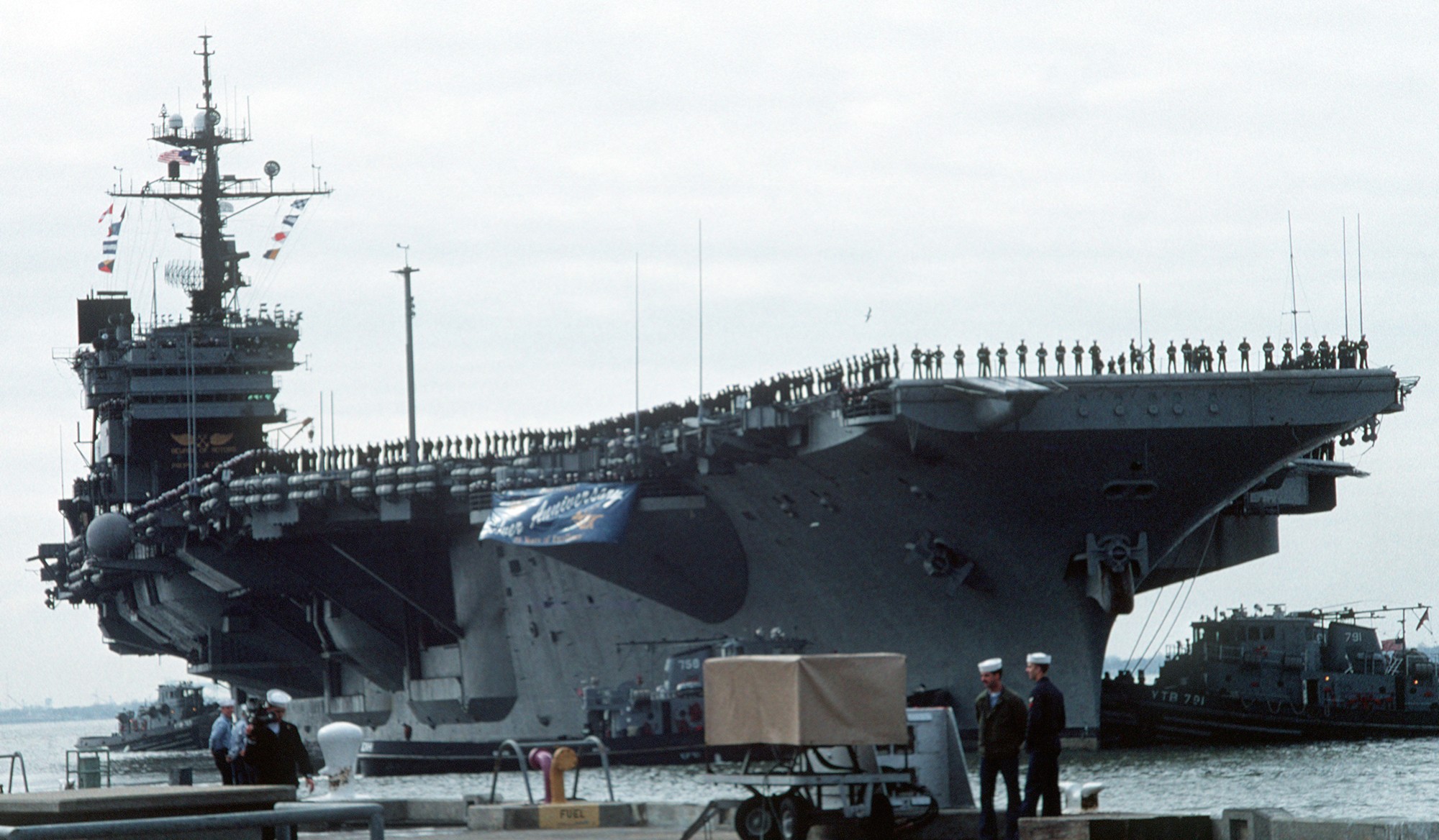 departing Naval Station Norfolk, Virginia - April 1993 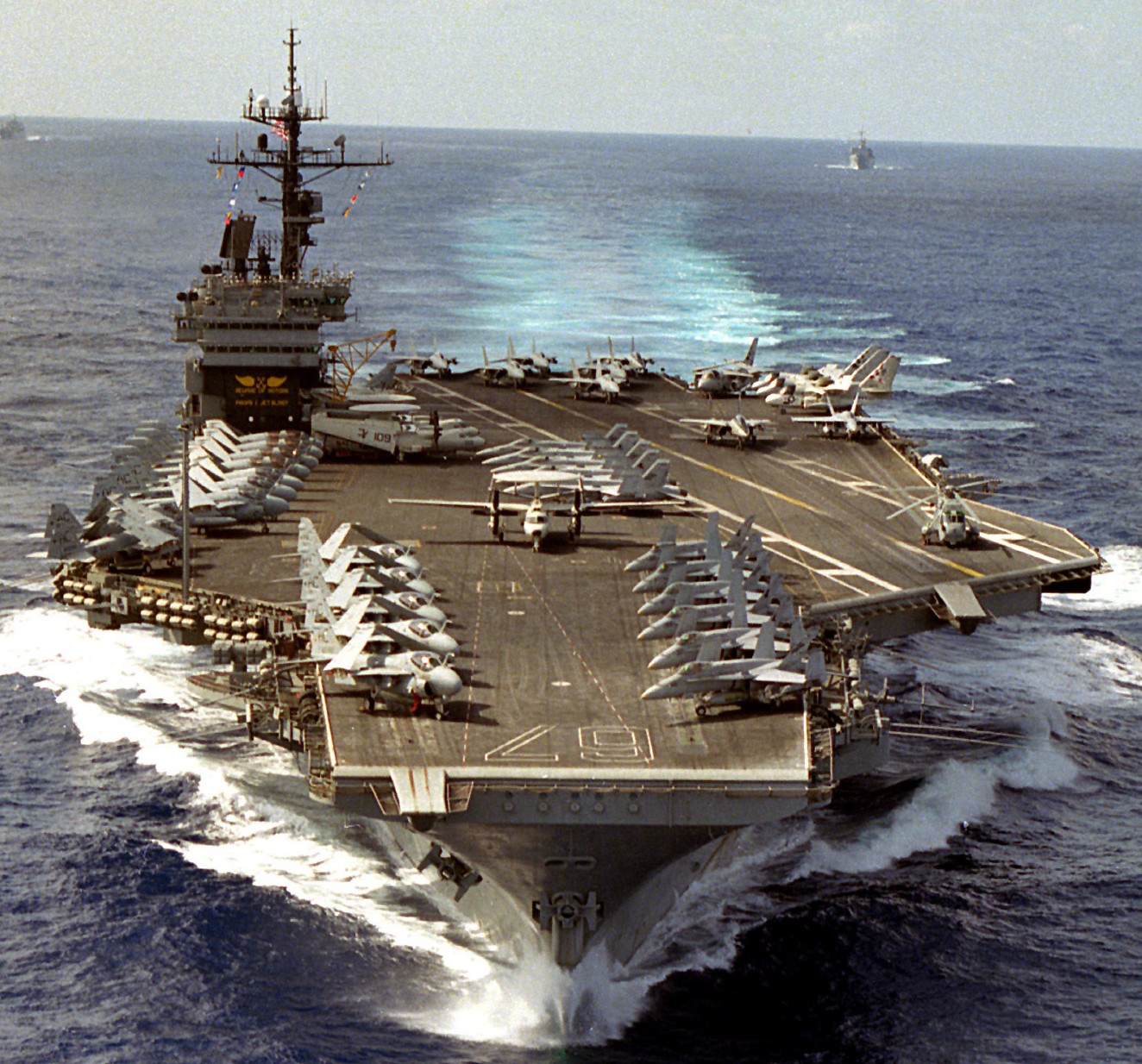 with CVW-3 embarked - Atlantic Ocean - October 1992  departing Naval Station Norfolk, Virginia - October 1992 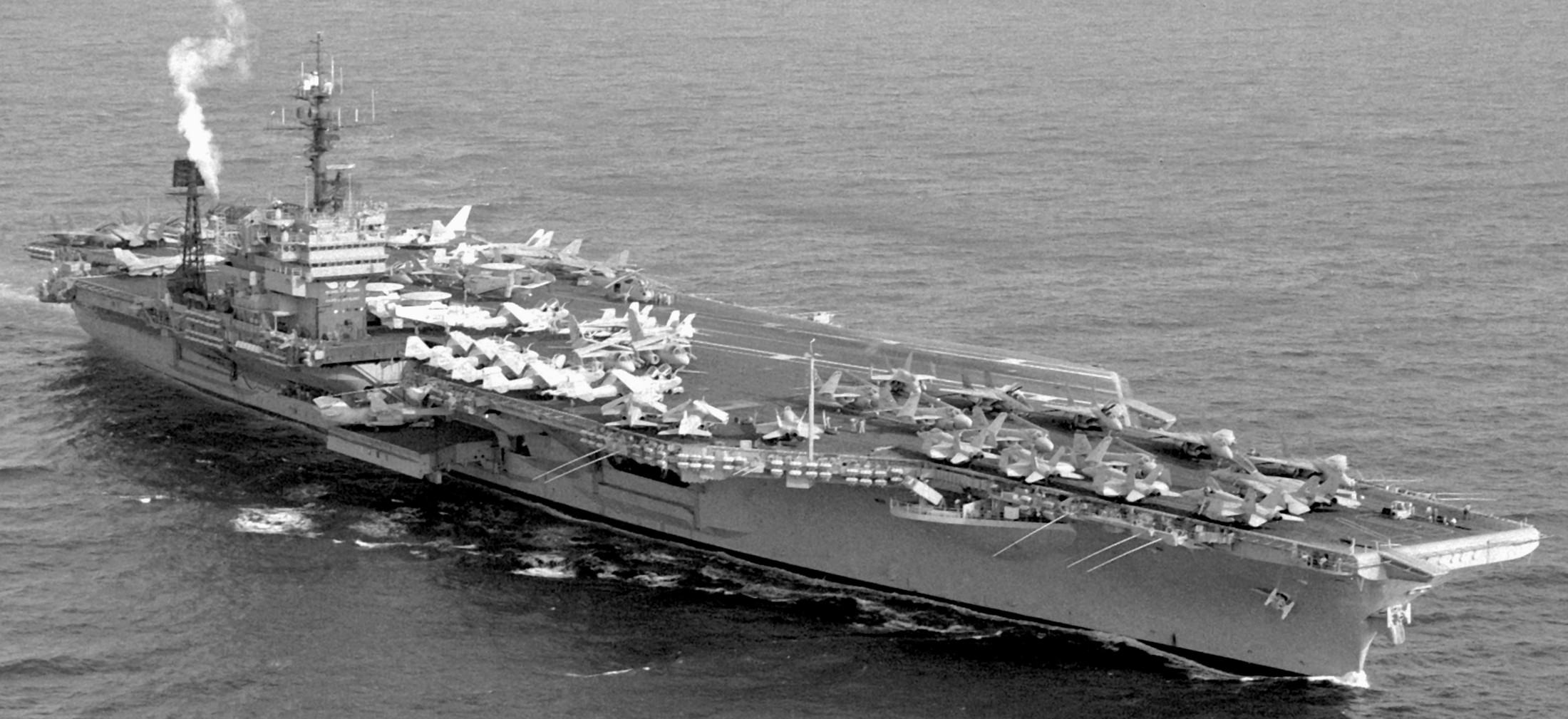 with CVW-3 embarked - Caribbean Sea - July 1992 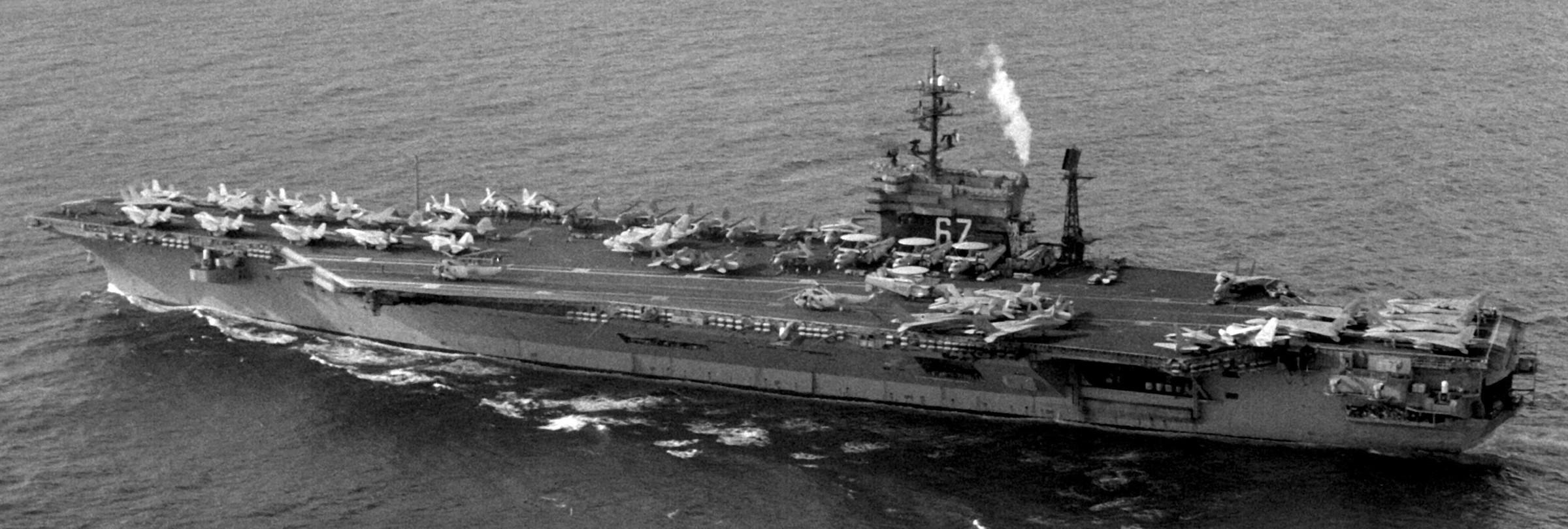 with CVW-3 embarked - Caribbean Sea - July 1992 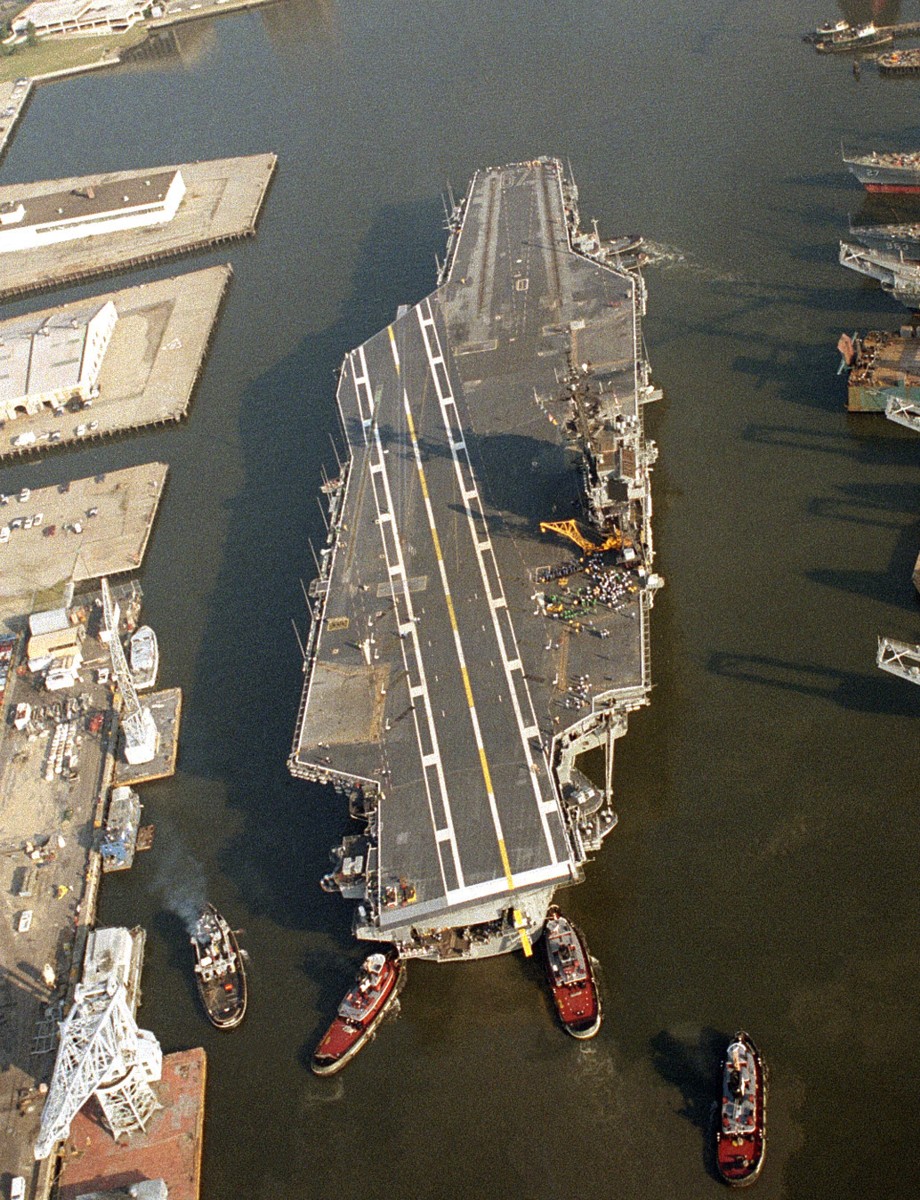 departing Norfolk Naval Shipyard, Virginia - October 1991 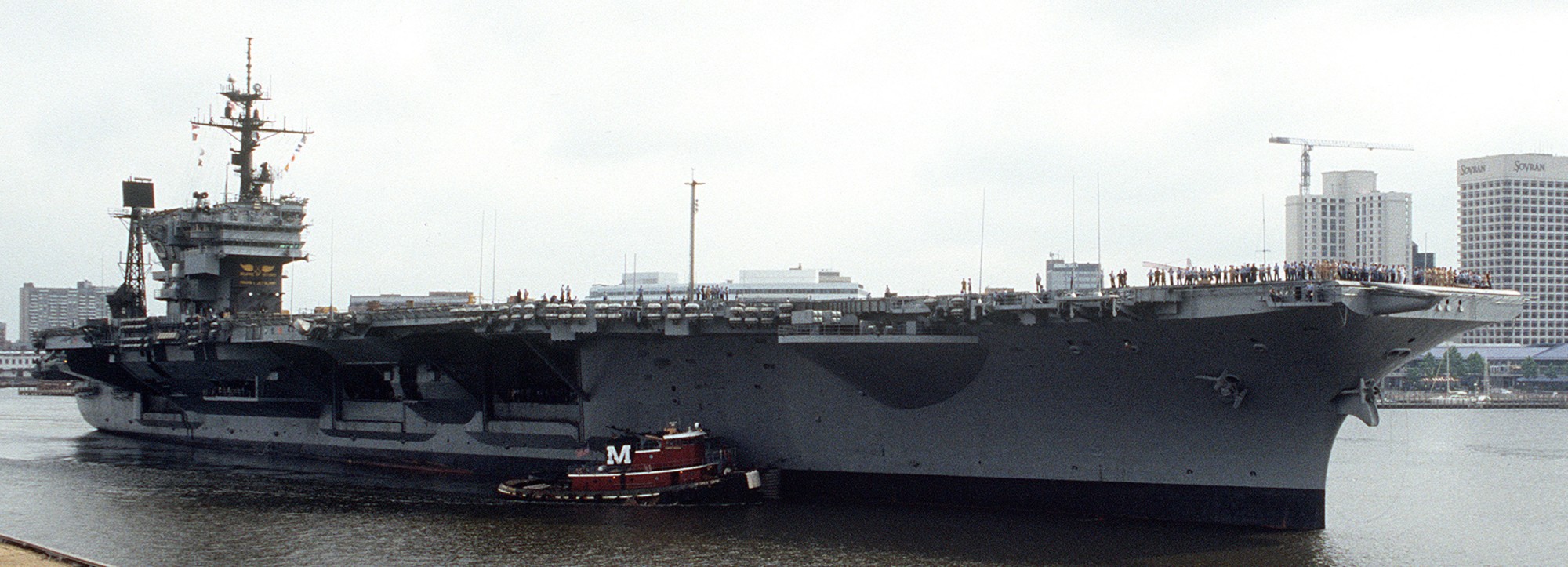 arriving at Norfolk Naval Shipyard for a 4-month Selected Restricted Availability (SRA) - May 1991 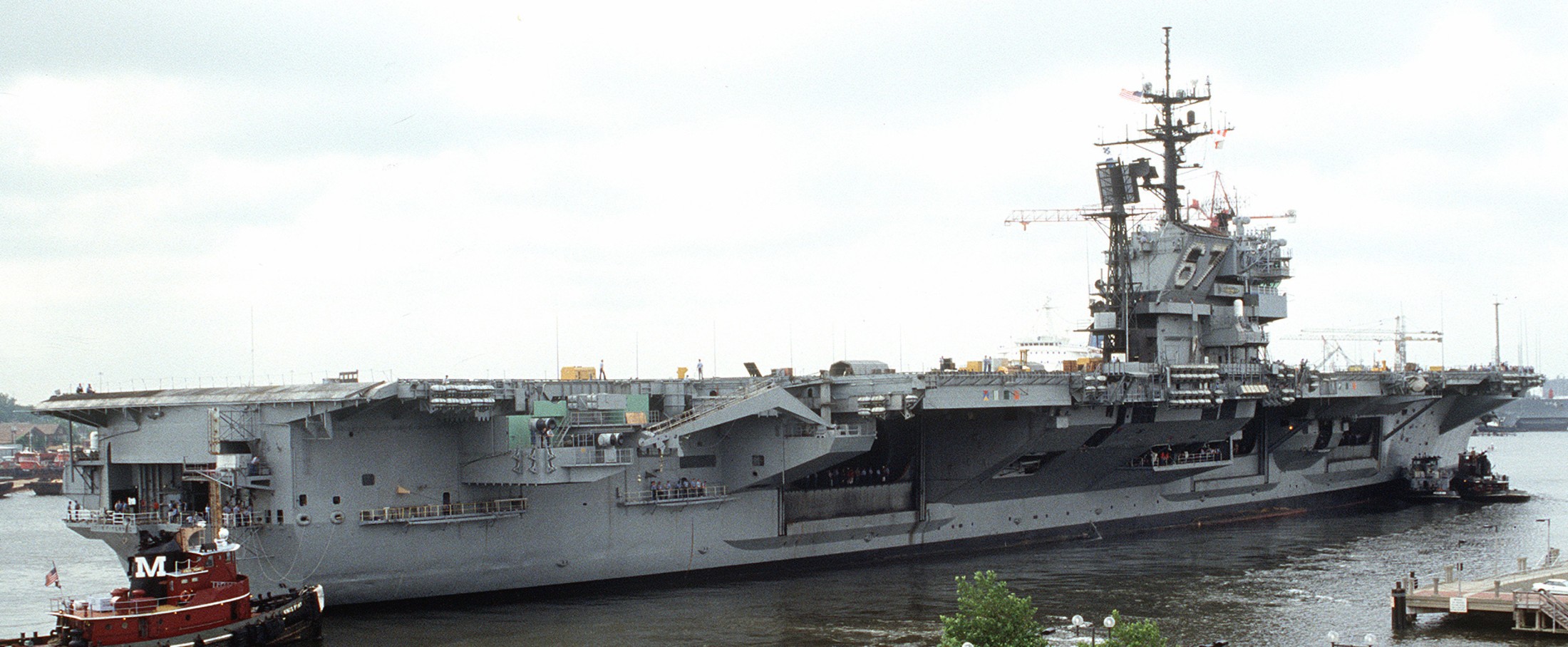 arriving at Norfolk Naval Shipyard for a 4-month Selected Restricted Availability (SRA) - May 1991 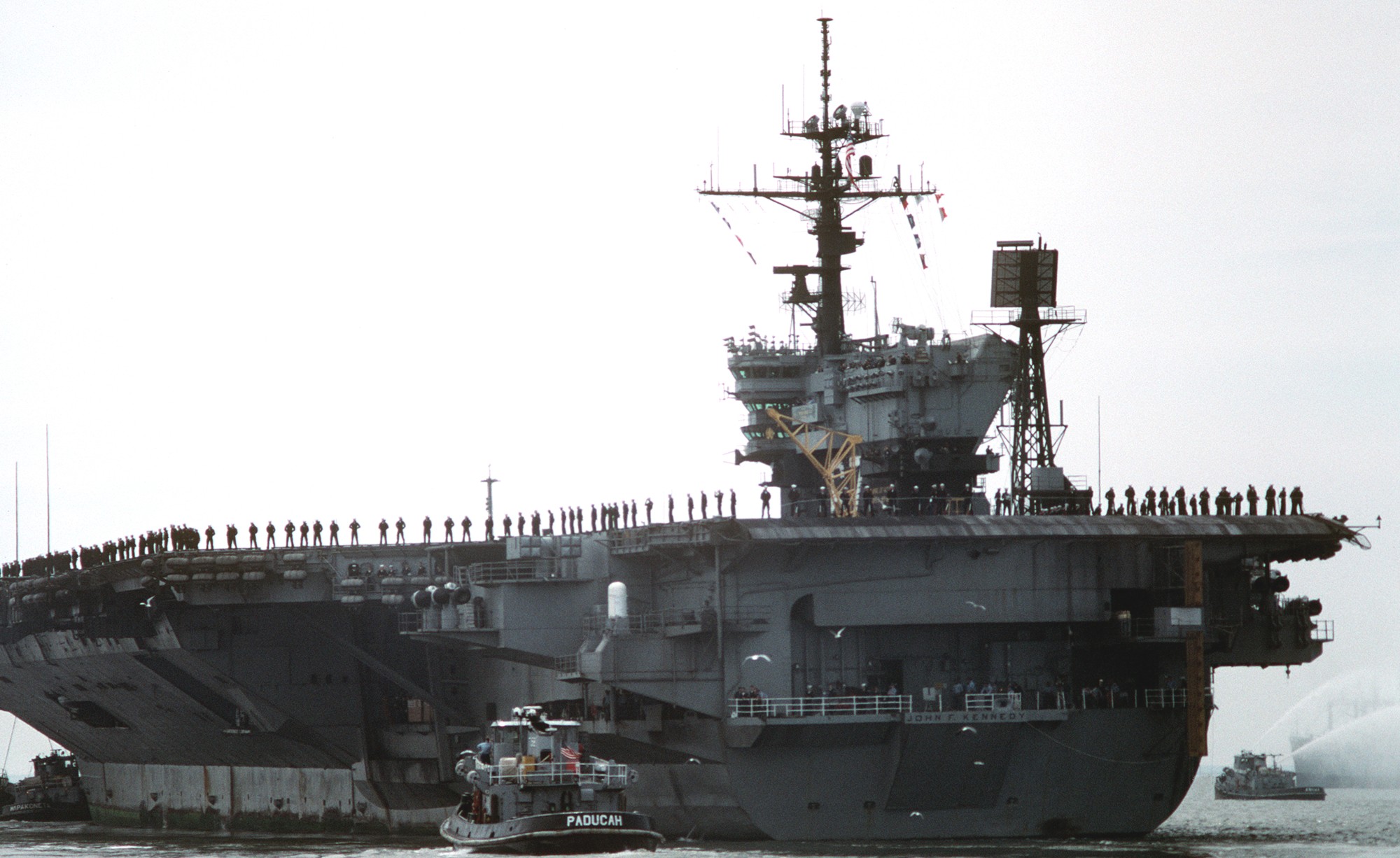 returning to NAS Norfolk, Virginia - March 28, 1991  approaching Norfolk, Virginia after operation Desert Storm - March 1991  approaching Norfolk, Virginia after operation Desert Storm - March 1991 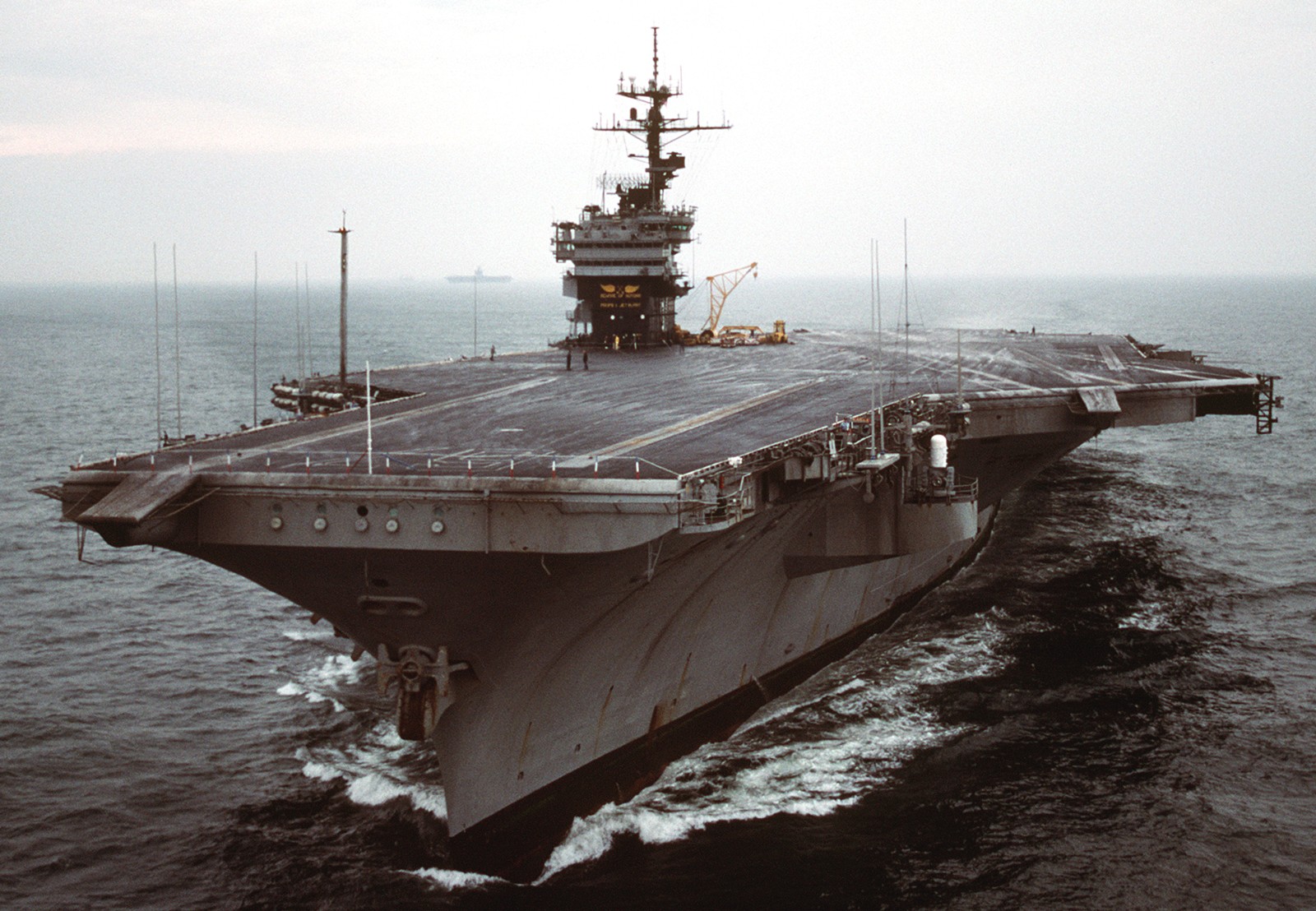 approaching Norfolk, Virginia after operation Desert Storm - March 1991 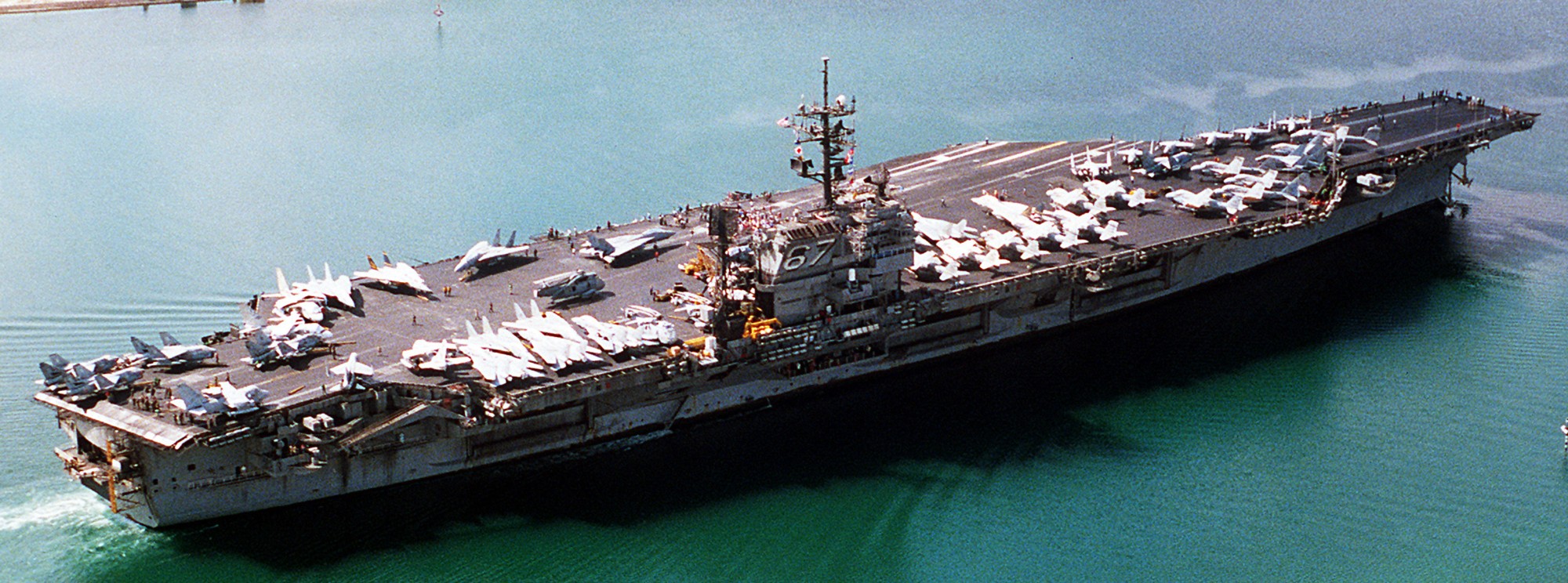 with CVW-3 embarked - Suez Canal - March 1991 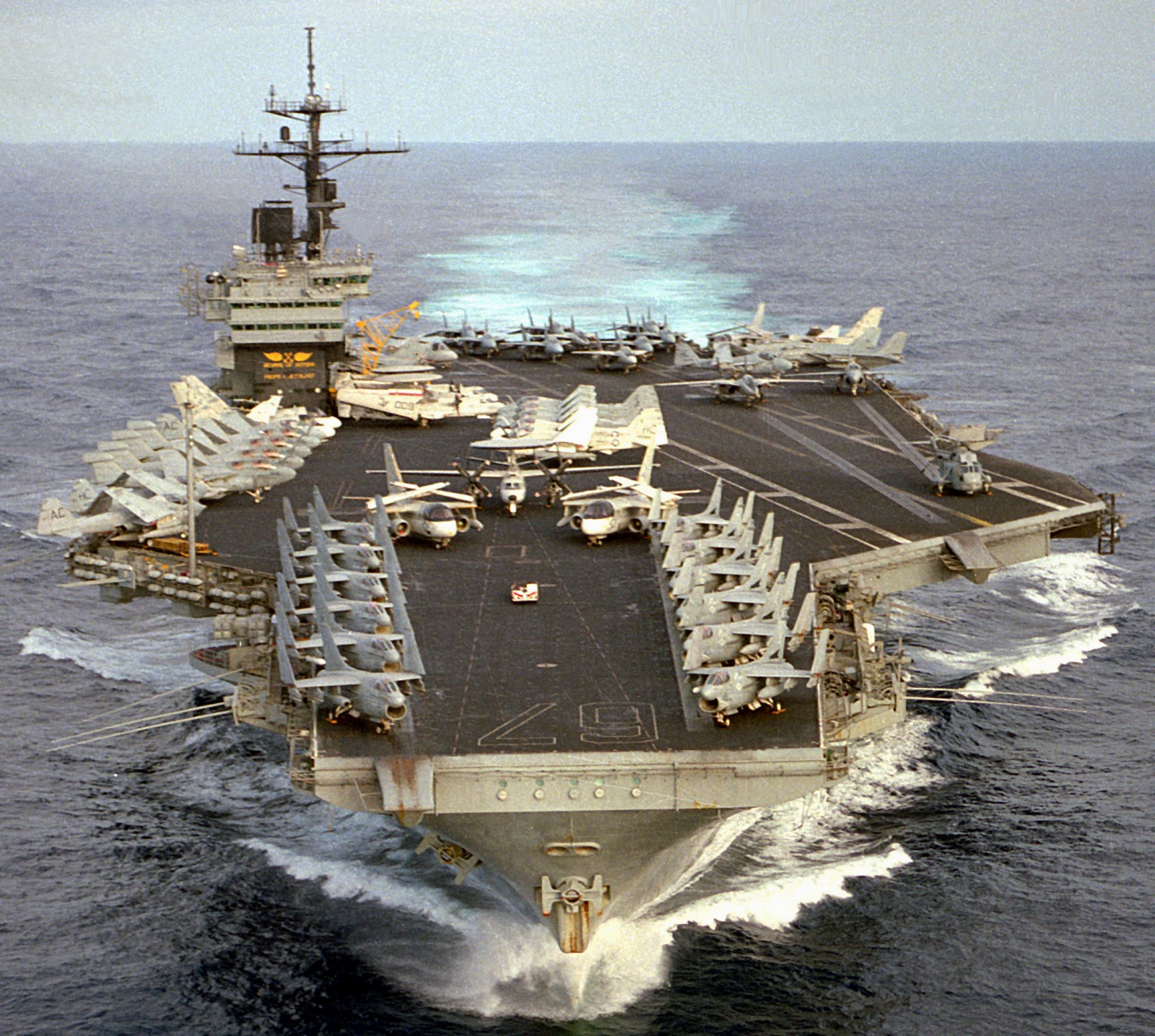 with CVW-3 embarked - Red Sea - March 1991 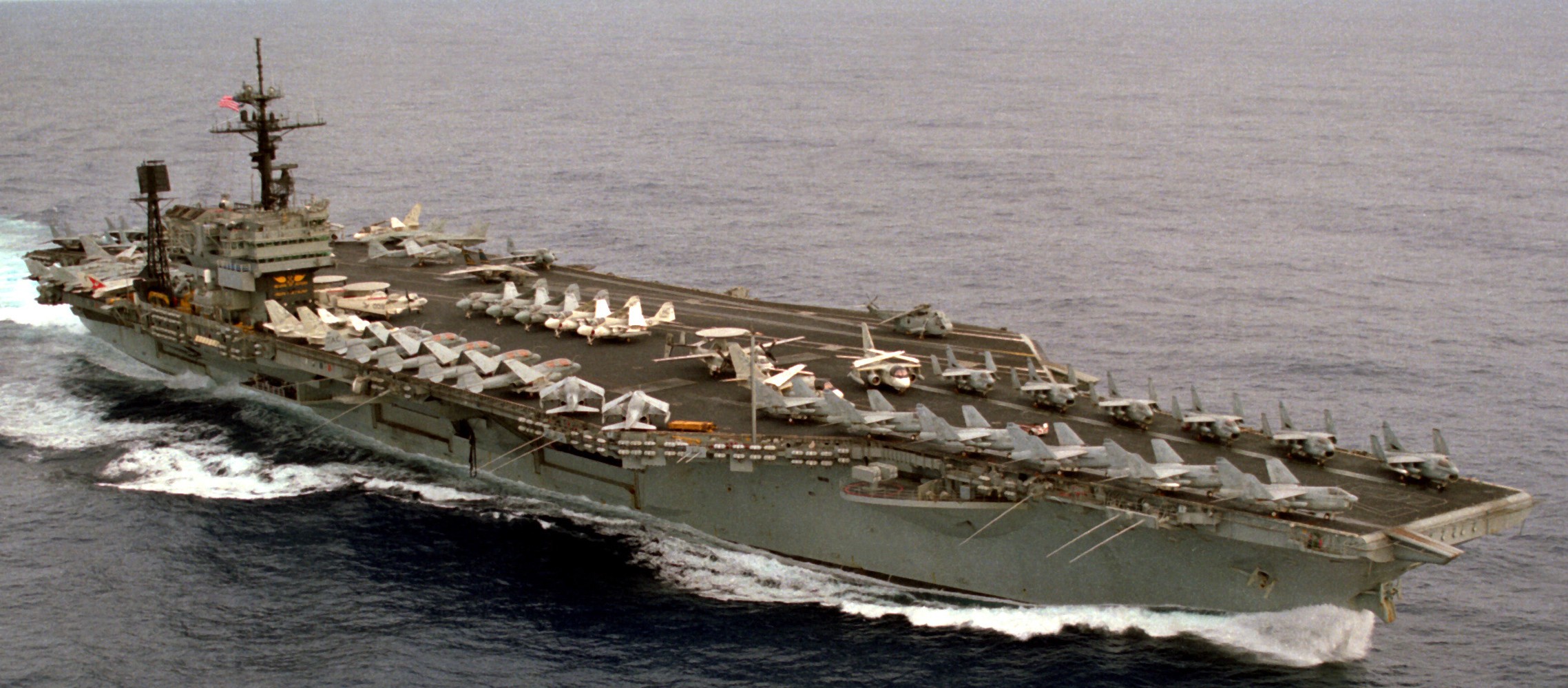 with CVW-3 embarked - during operation Desert Storm - March 1991 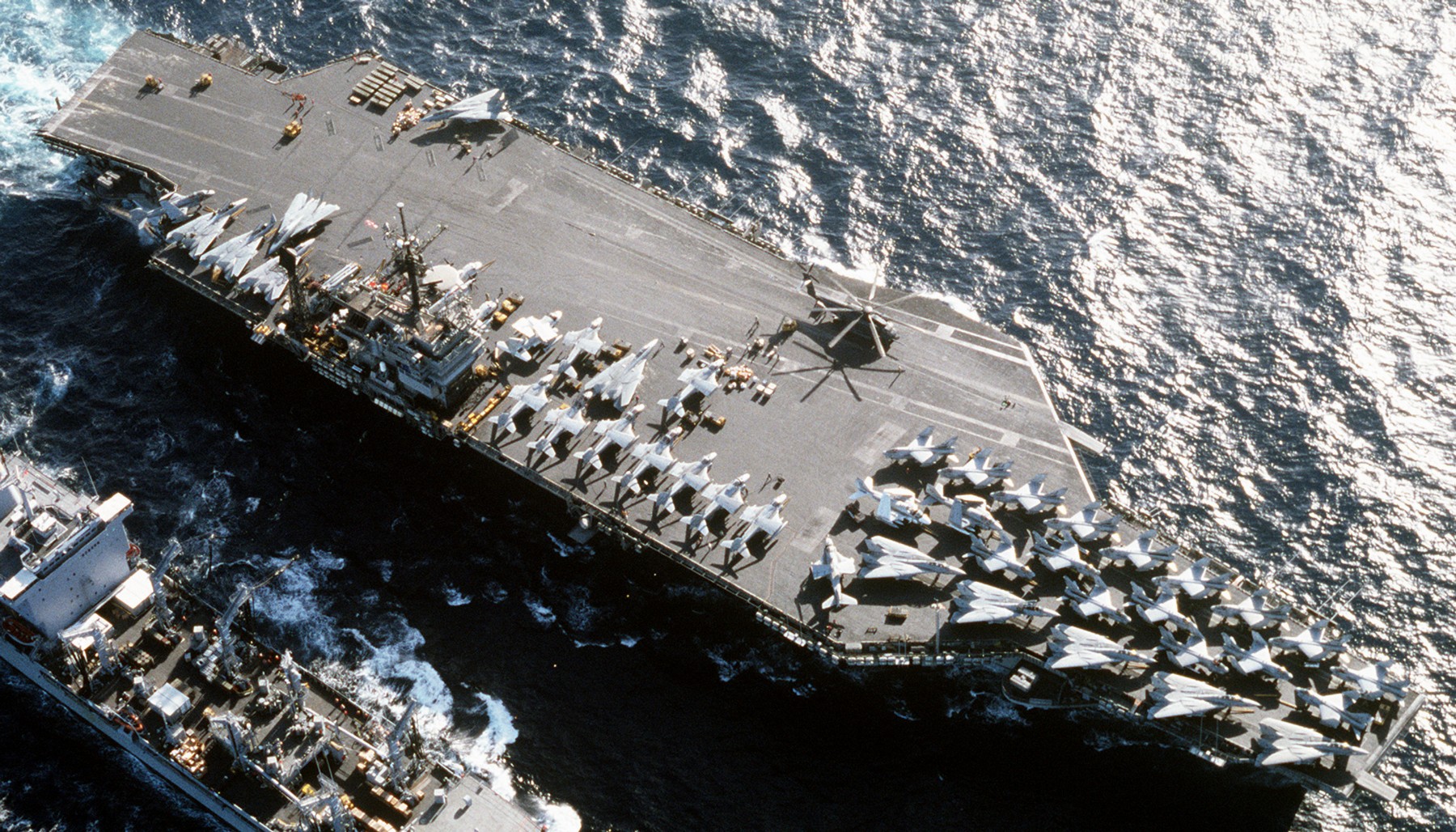 with CVW-3 embarked - during operation Desert Storm - February 1991  with CVW-3 embarked - during operation Desert Storm - February 1991 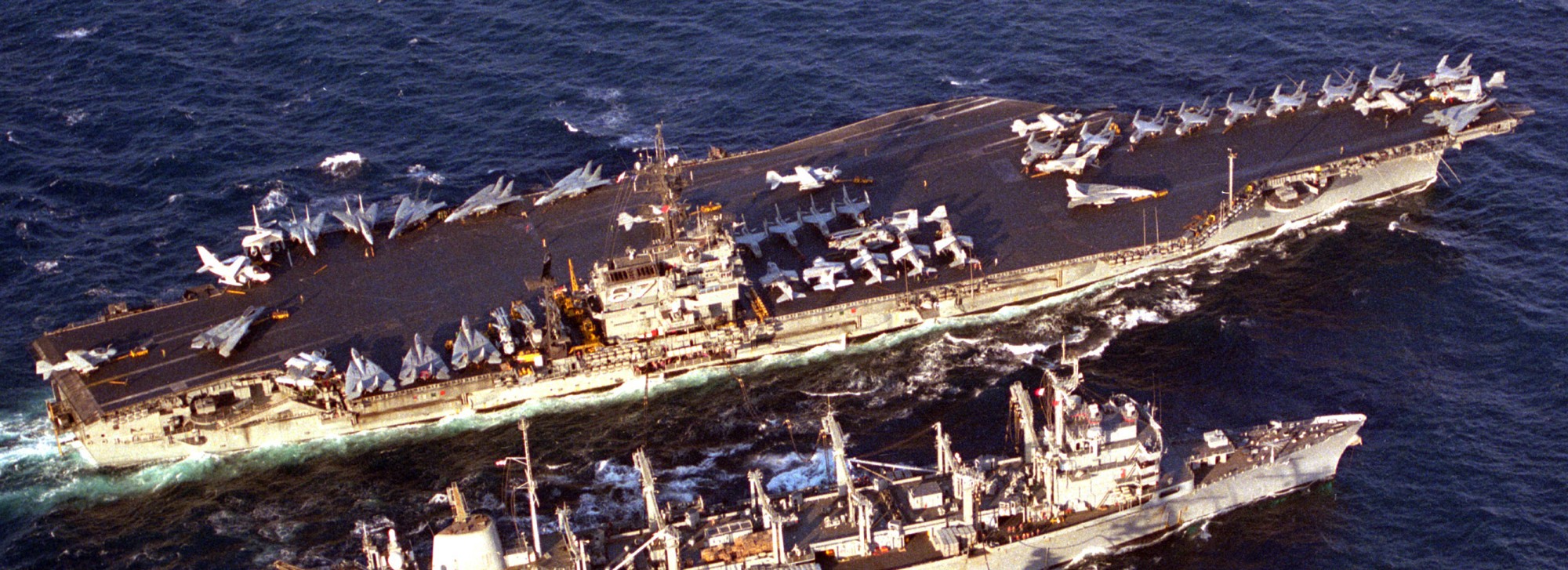 with CVW-3 embarked - during operation Desert Storm - February 1991 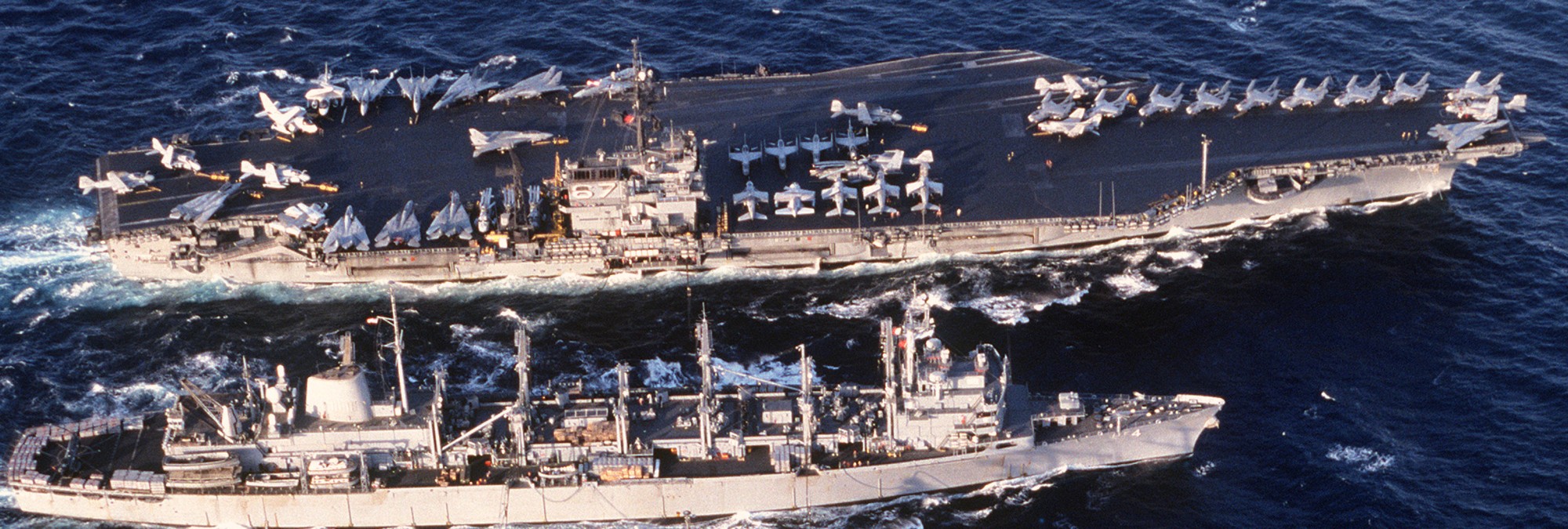 with CVW-3 embarked - during operation Desert Storm - February 1991 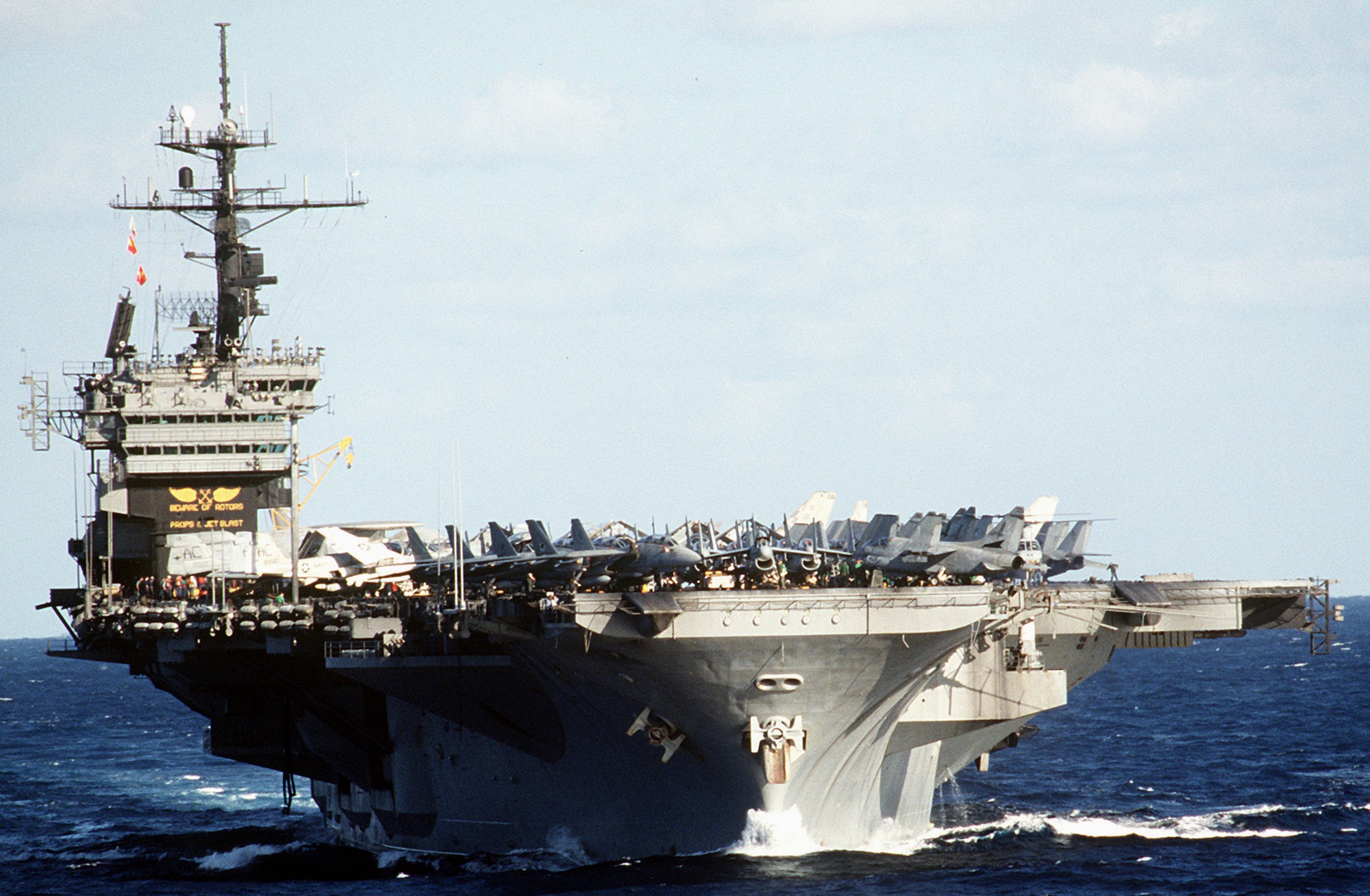 with CVW-3 embarked - January 1991 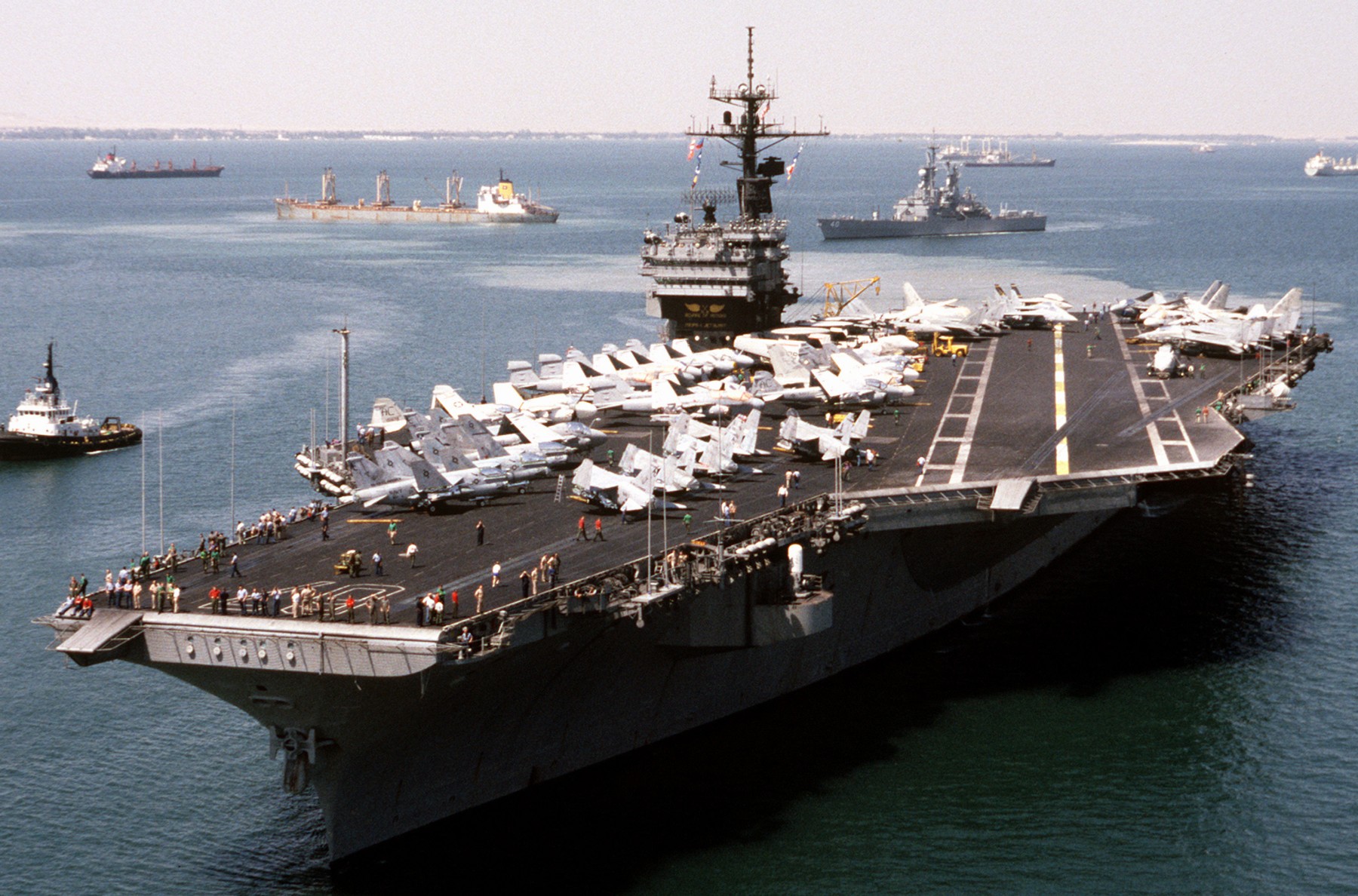 with CVW-3 embarked - operation Desert Shield - September 1990  departing NAS Norfolk, Virginia - August 1990 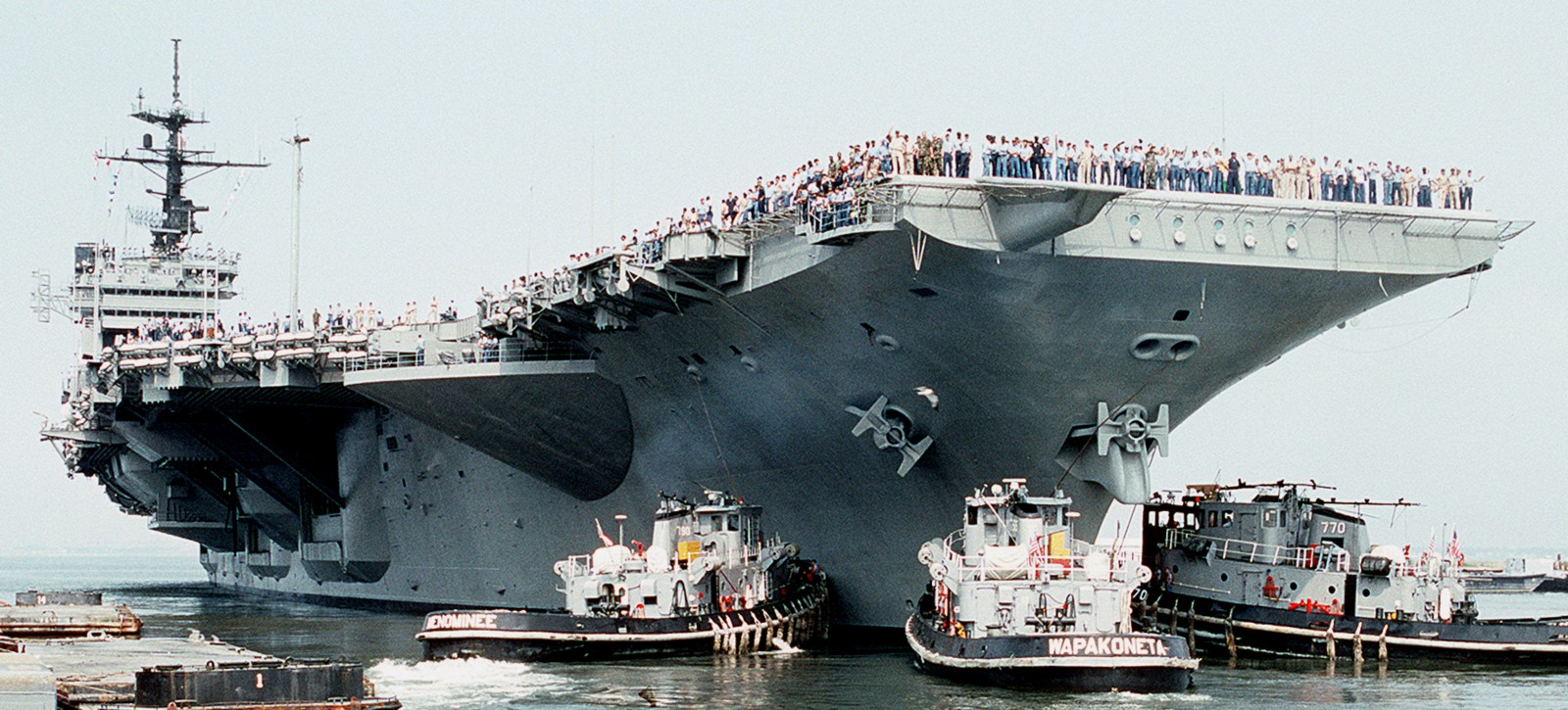 departing NAS Norfolk, Virginia - August 1990 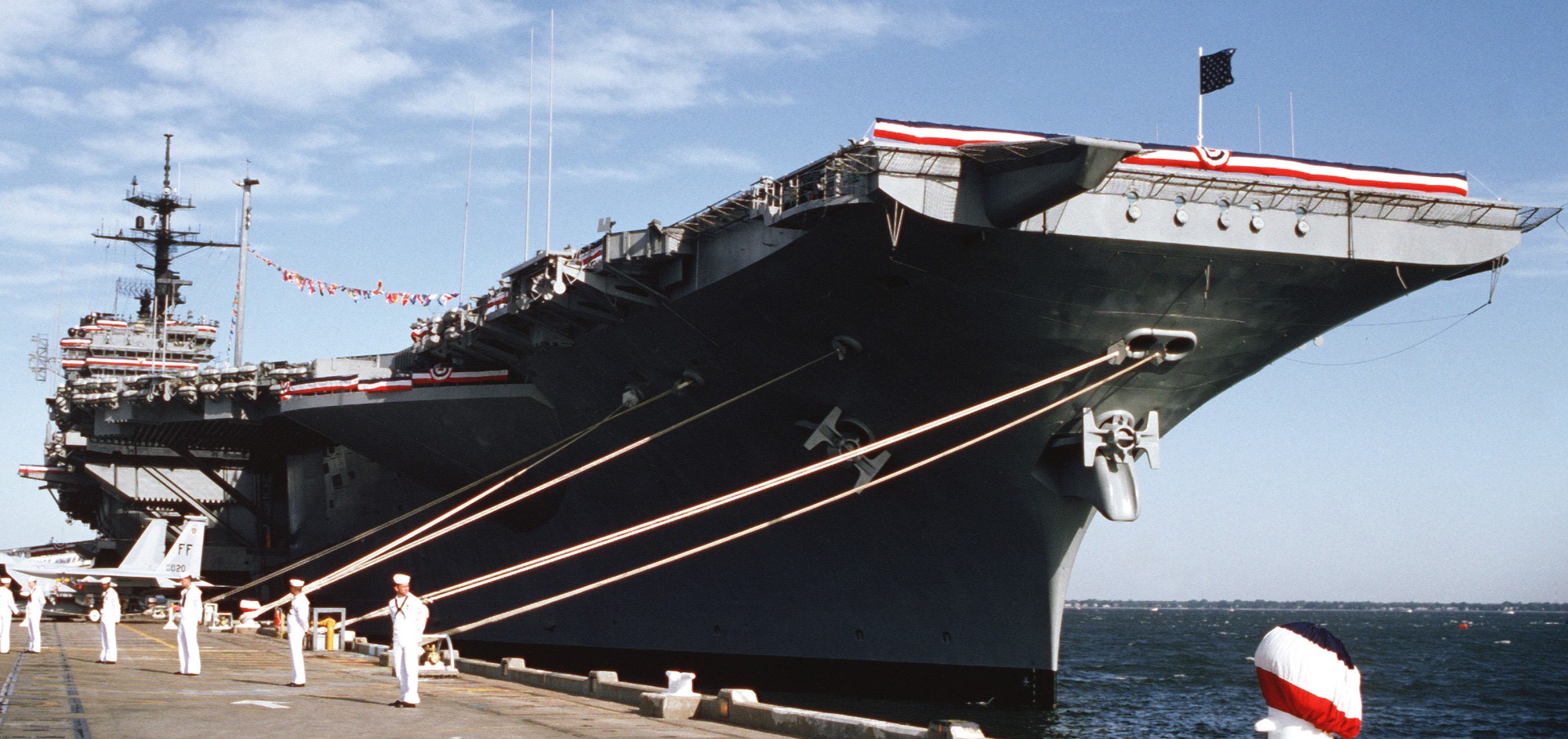 change of command ceremony - Norfolk, Virginia - May 1990 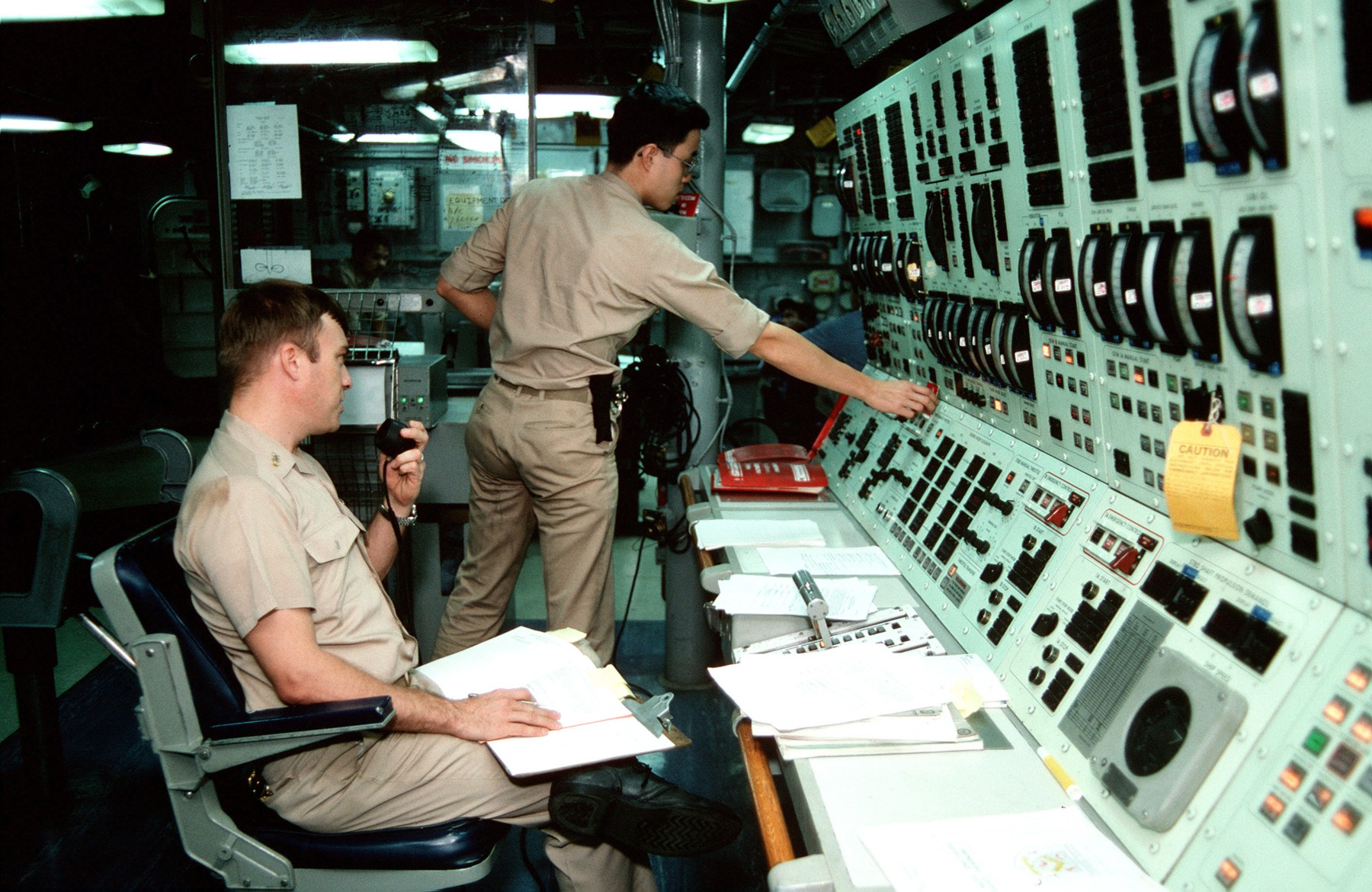 engine control room - 1990 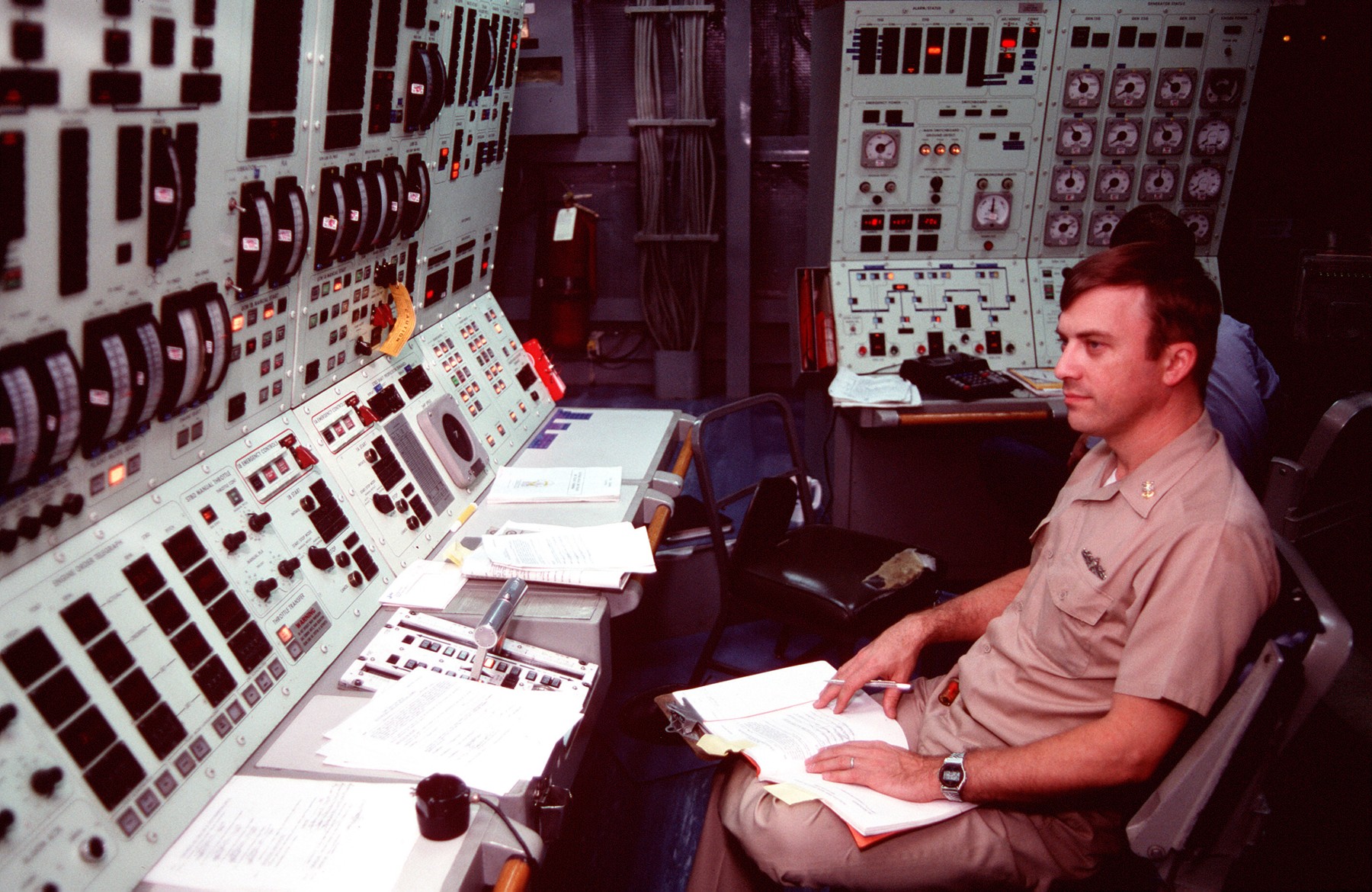 engine control room - 1990 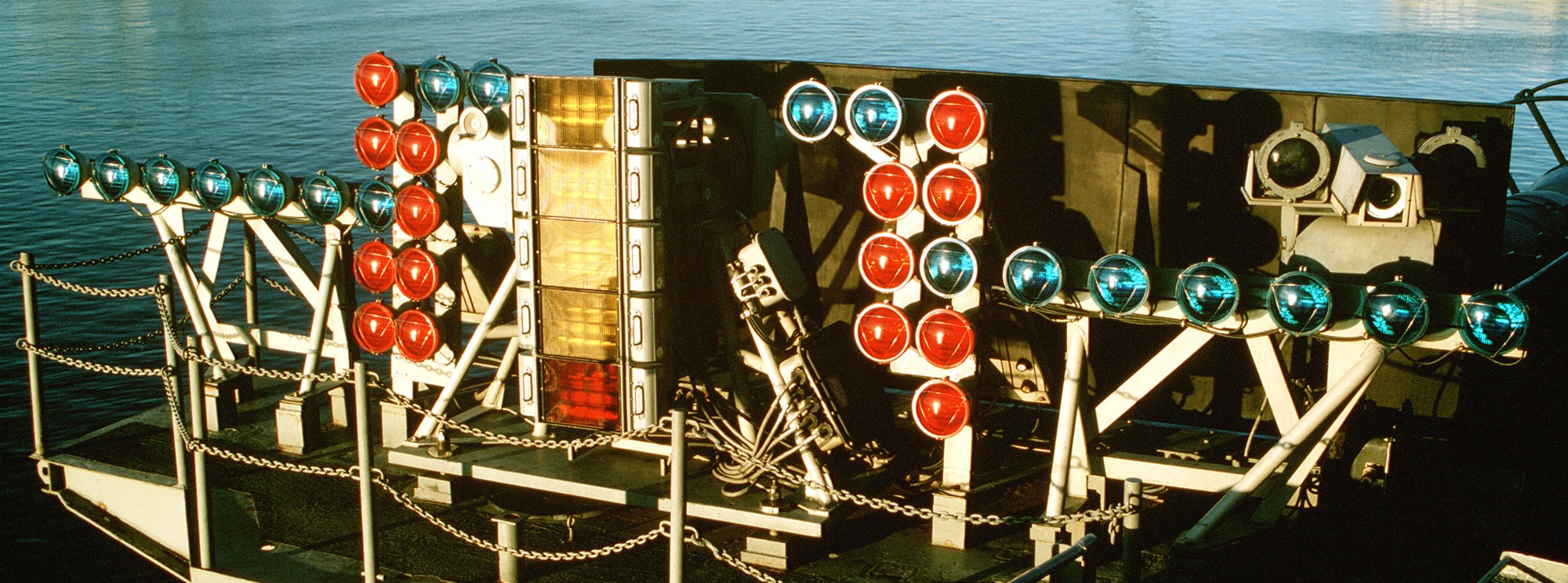 fresnel lens optical landing system (OLS) - 1990 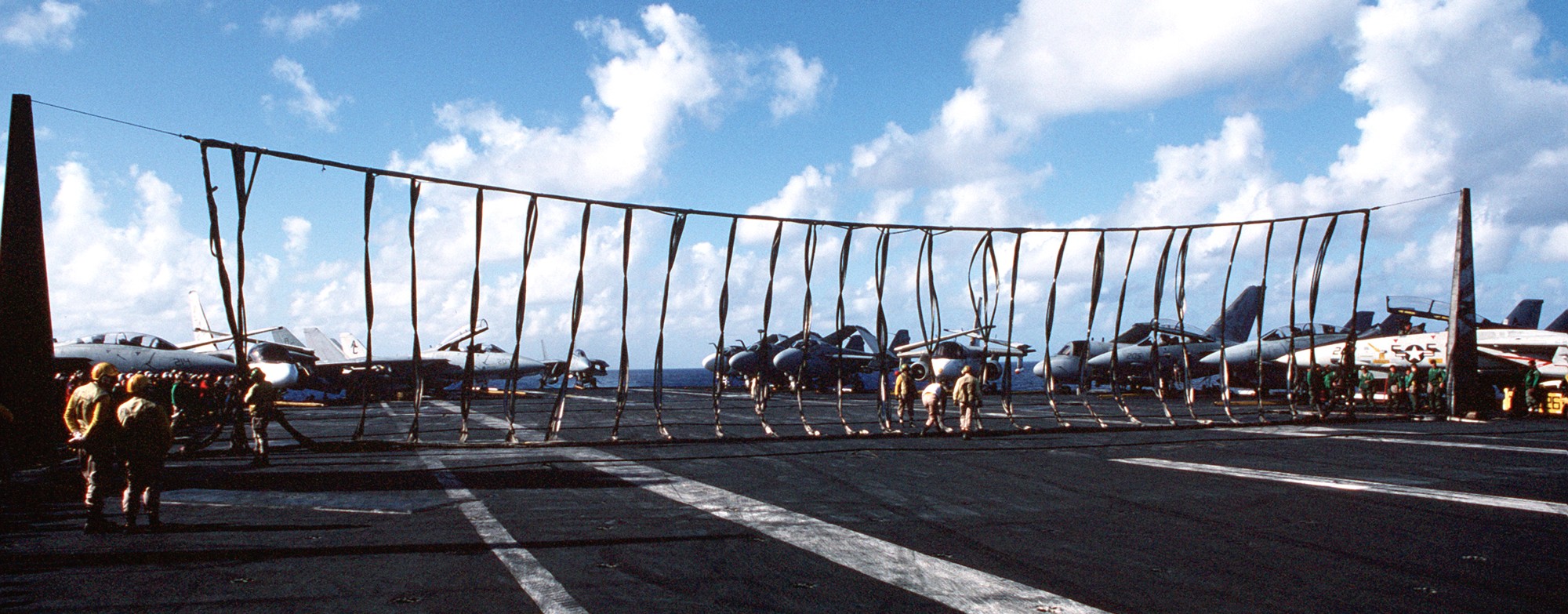 barricade drill - 1990 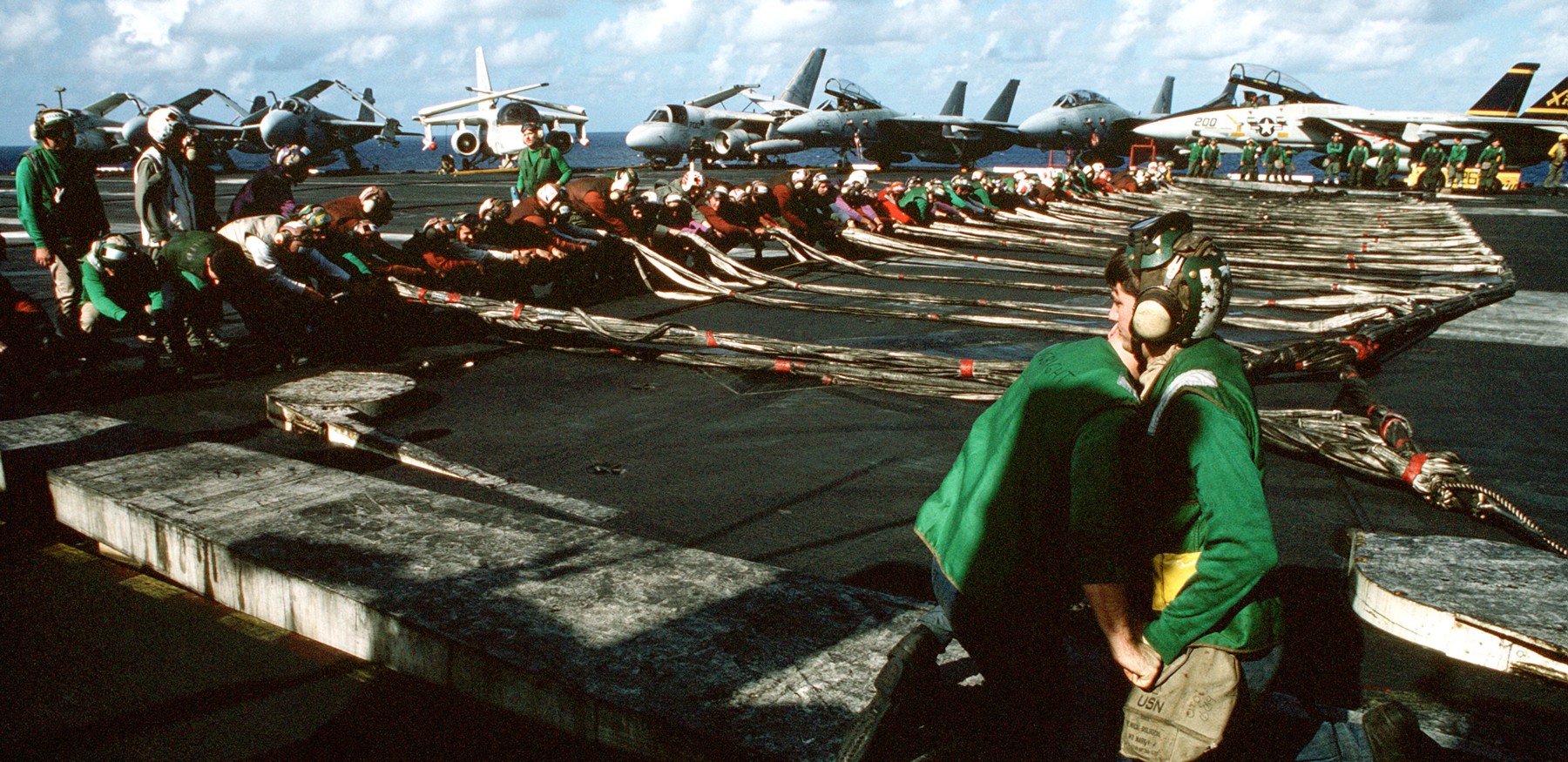 barricade drill - 1990 > continue - CV 67 image page 2 < > go to CV 67 history page < |
||
John F. Kennedy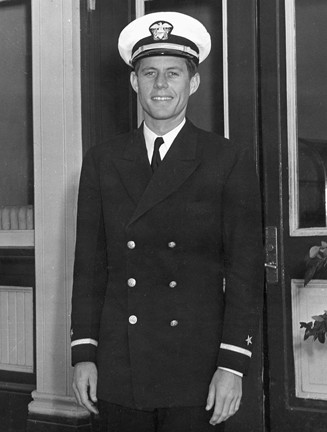
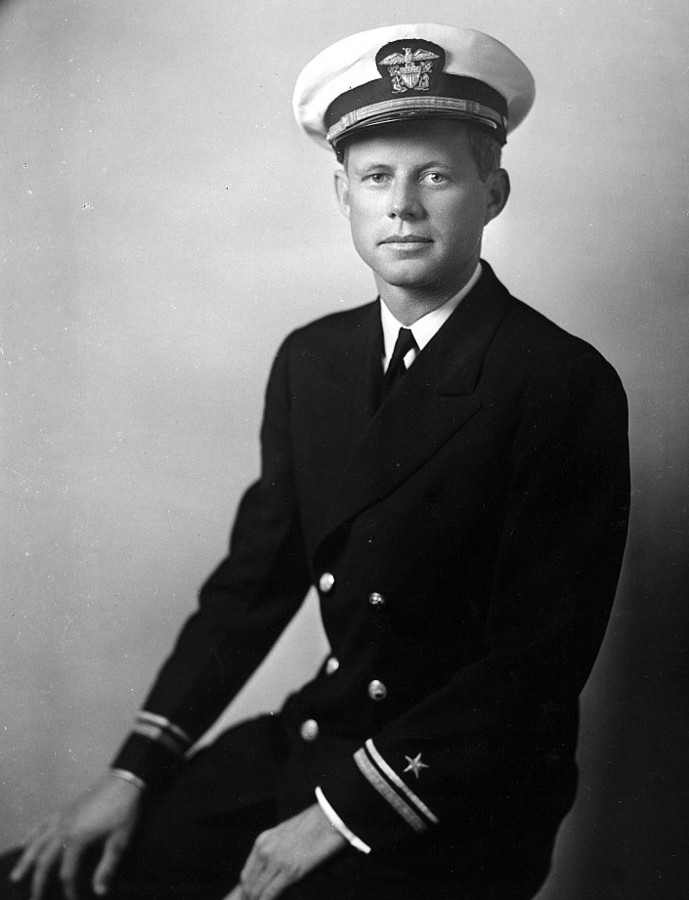 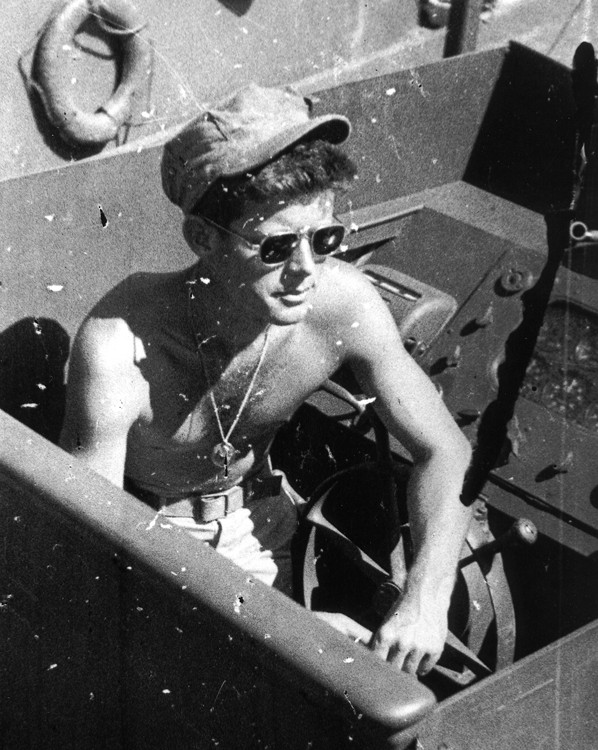
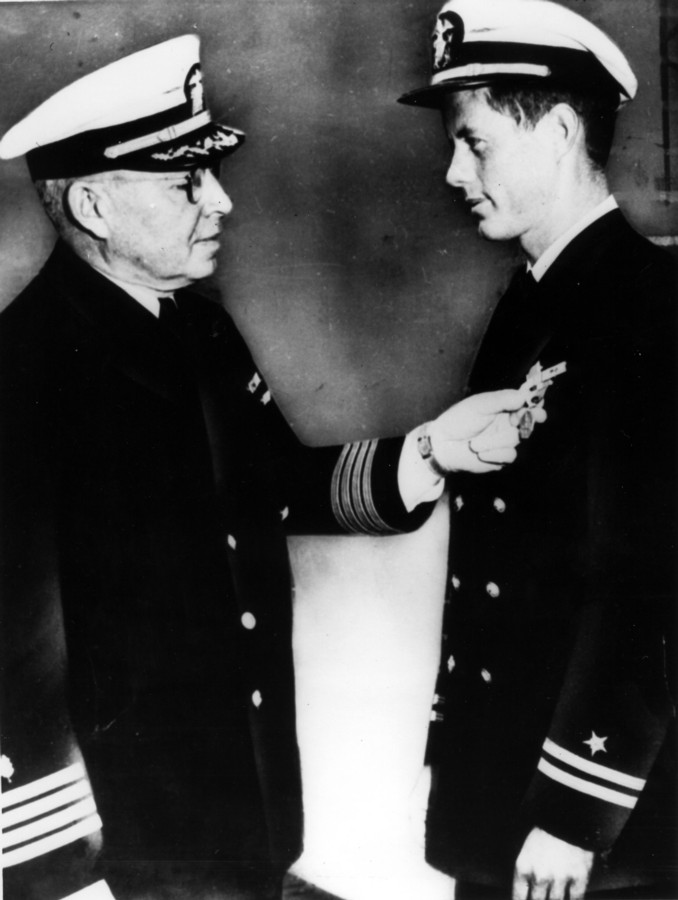 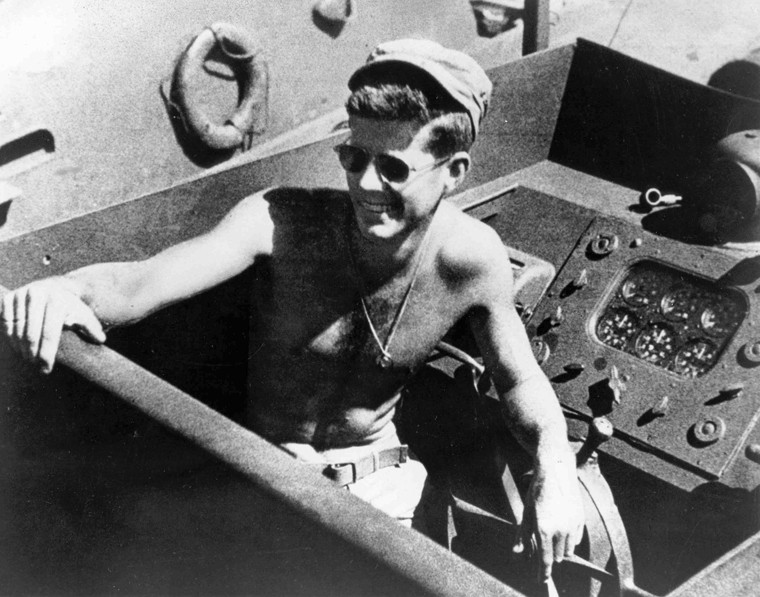  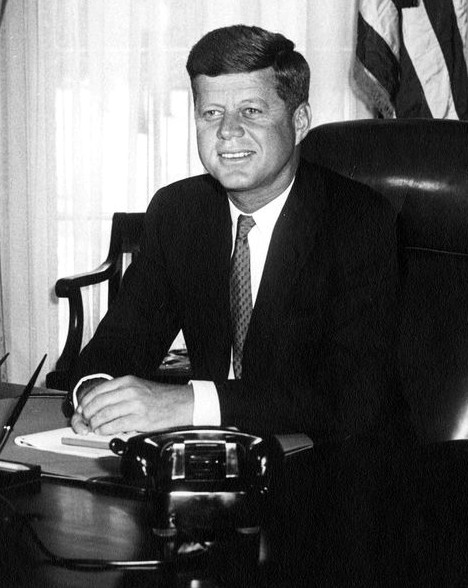
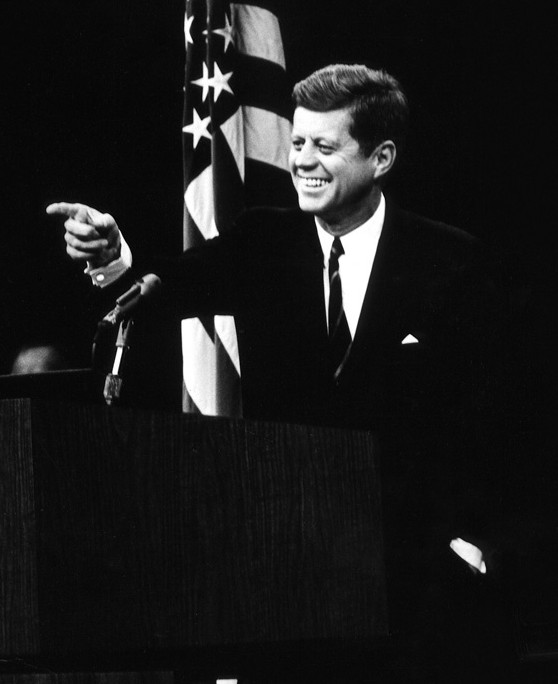 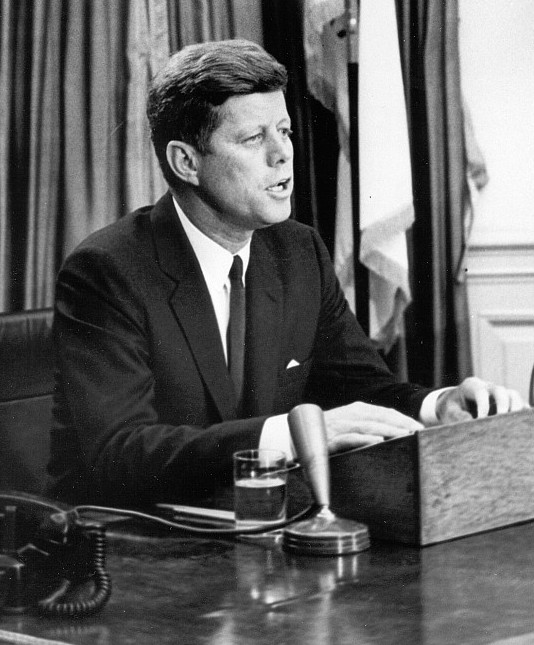
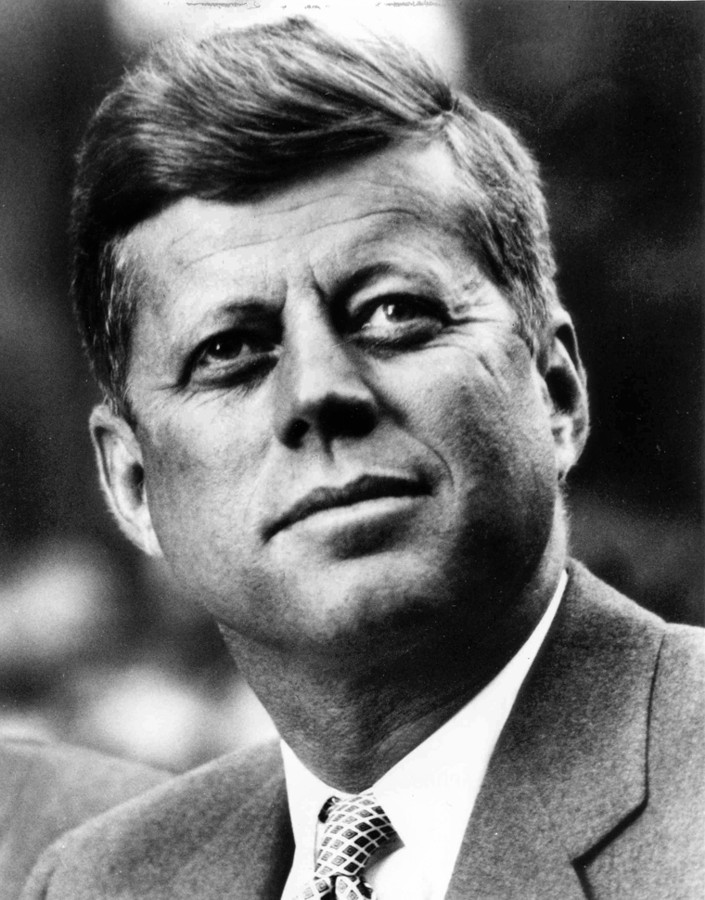 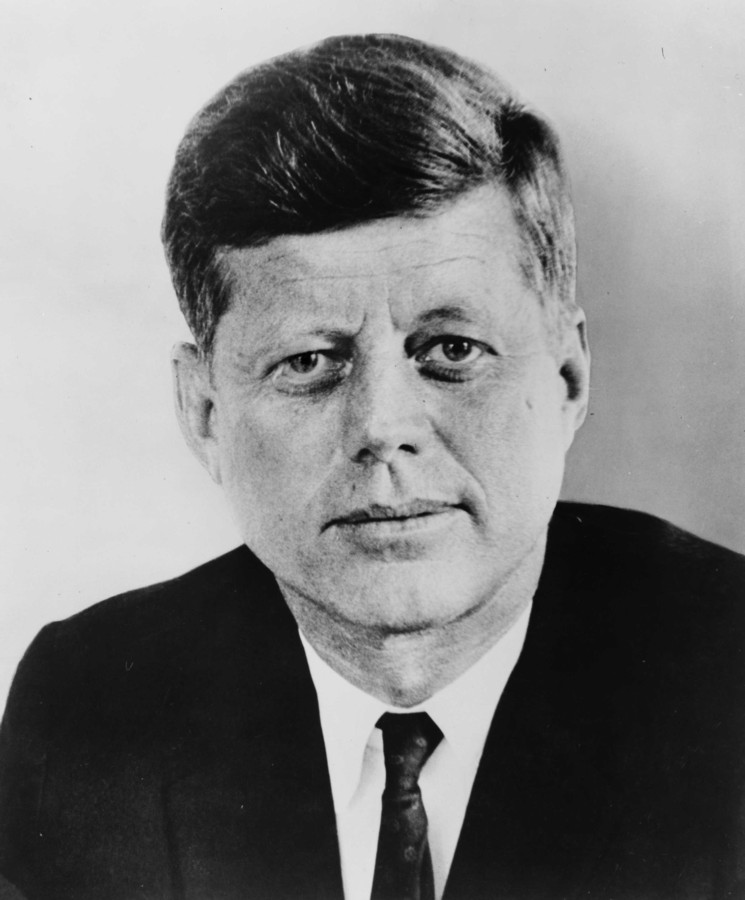
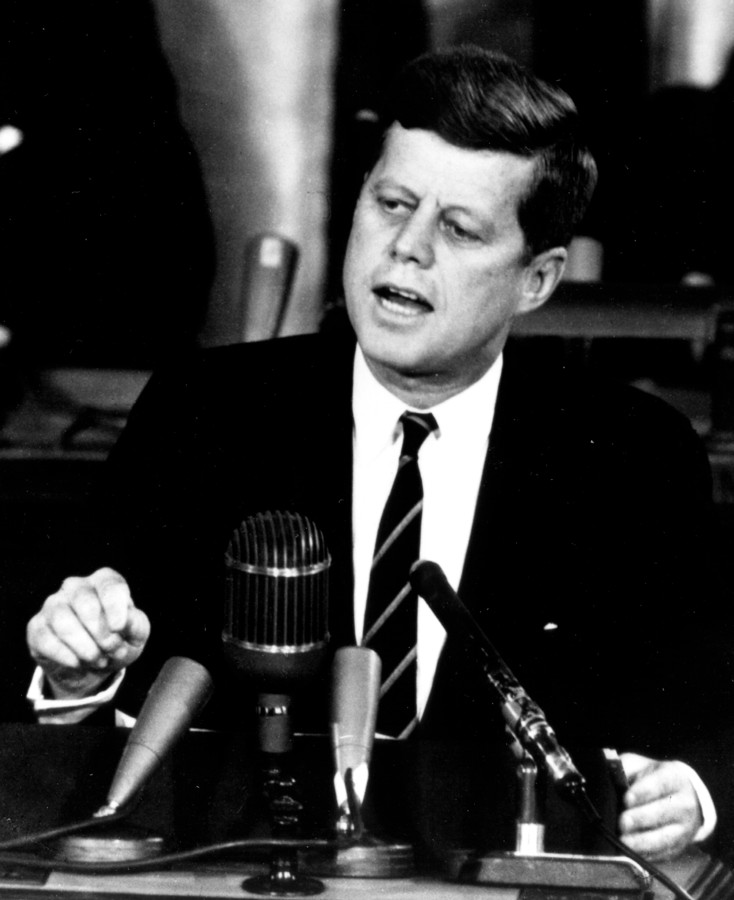 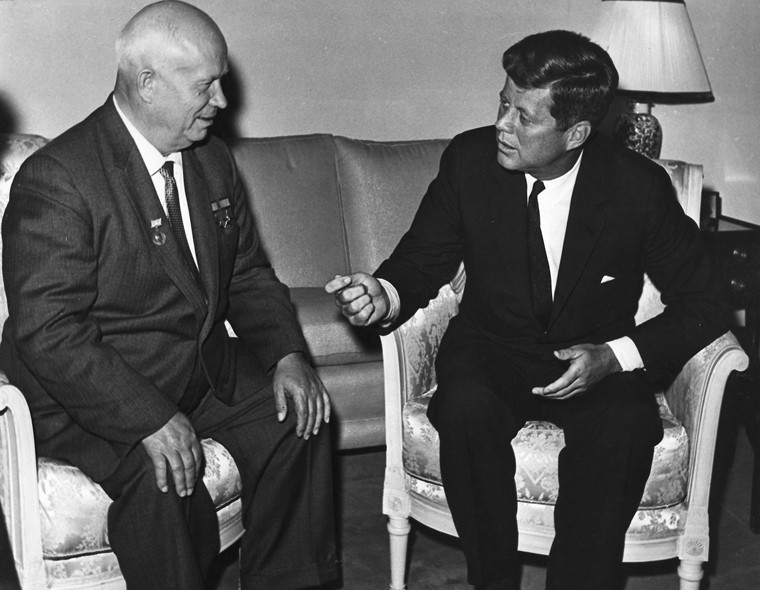 Soviet General Secretary Nikita Khrushchev with President John F. Kennedy 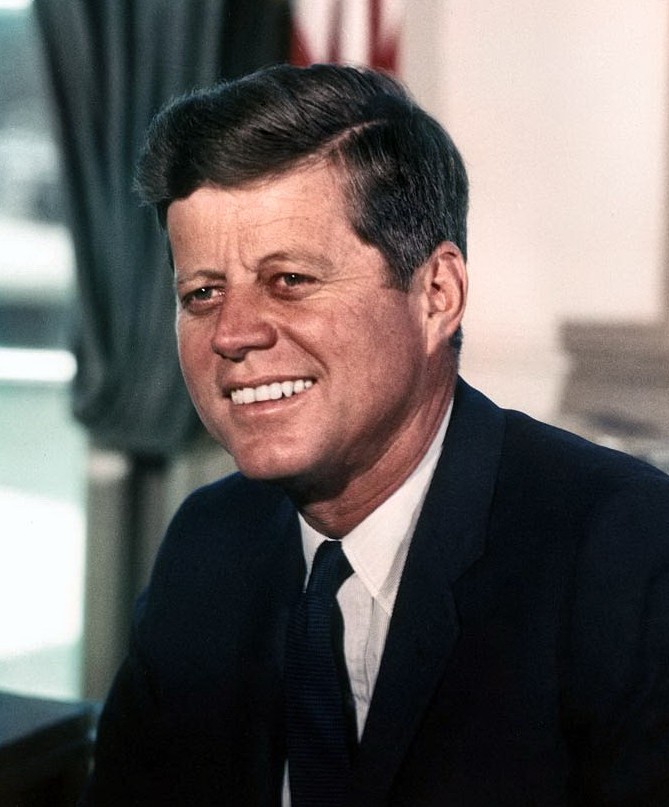
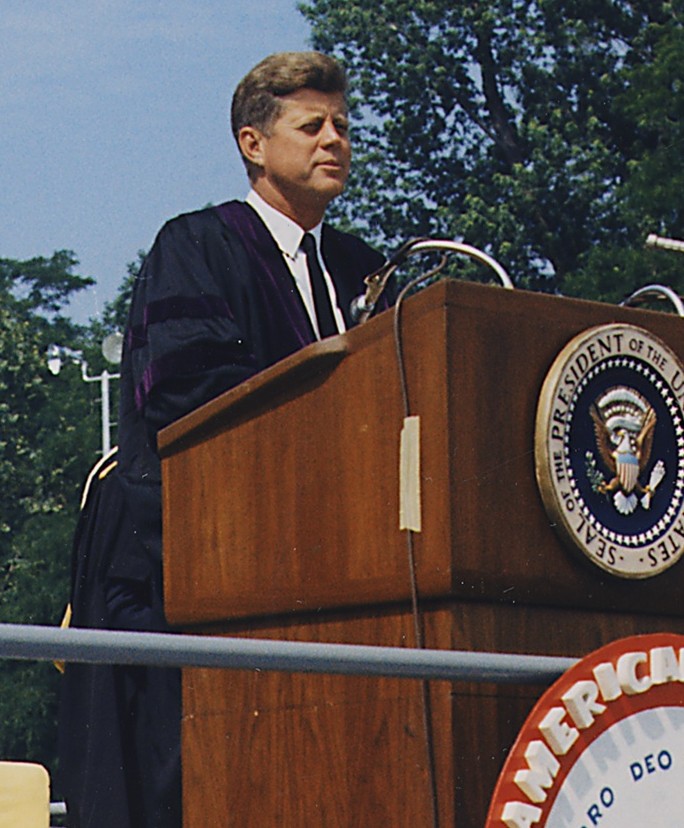 |
||
|
John Fitzgerald Kennedy (May 29, 1917 - November 22, 1963): John Fitzgerald Kennedy, the 35th President of the United States, was born on 29 May 1917 in Brookline, Massachusetts, and graduated cum laude from Harvard University in 1940. He received an ensign's commission in the U.S. Naval Reserve in October 1941. He served in Washington in the Office of Naval Intelligence (October 1941-January 1942) and under Commandant, 6th Naval District, Charleston, South Carolina (January-July 1942), before he attended the U.S. Naval Reserve Midshipman's School, Northwestern University, Chicago, Illinois (July-September 1942). Promoted to lieutenant (j.g.) on 1 October 1942, Kennedy underwent instruction at the Motor Torpedo Boat Squadrons (MTBRons) Training Center, Newport, Rhode Island (September-December 1942), Motor Torpedo Boat Squadron (MTBRon) 4 (December 1942-January 1943), where he was slated to command the motor torpedo boat PT-101, and then in the office of the Assistant Supervisor of Shipbuilding, Jacksonville, Florida (February 1943), in connection with fitting out MTBRon 14. Traveling to the Solomon Islands, Kennedy joined MTBRon 2, and ultimately assumed command of PT-109 on 24 April 1943, relieving Ensign Leonard J. Thom, USNR. The motor torpedo boat operated out of Tulagi, in the Solomons, and then Rendova. During a patrol in Blackett Strait on the night of 1-2 August 1943, PT-109 was sunk when the Japanese destroyer Amagiri (Lieutenant Commander Hanami Kouhei), rammed her and cut her in half. Kennedy directed the rescue efforts of the survivors of his crew, and rescued three, one of whom was the badly burned Motor Machinist's Mate 2d Class Patrick H. McMahon, whom he personally towed back to the then-still floating wreckage of the forward part of the boat. Over the ensuing days, Kennedy managed to get his crew ashore. Ultimately, aided by friendly natives and a coastwatcher, PT-109's surviving officers and men were rescued by PT-157 on 8 August 1943 and taken to Rendova. Following hospitalization in the aftermath of the loss of PT-109, during which time he received promotion to lieutenant (1 October 1943), Kennedy received further instruction at the MTBRons Training Center, Newport (December 1943-March 1944), and then the Subchaser Training Center, Miami, Florida (Mar-May 1944), where he received the Navy and Marine Corps Medal for the heroism he had displayed in the rescue of survivors from his sunken PT-boat. After suffering injuries in a fall, he underwent hospitalization at the U.S. Naval Hospital, Chelsea , Massachusetts (May 1944-March 1945), and, ultimately, retired from active duty on 1 March 1945. Having assumed the family's political mantle after the end of World War II, his older brother Joseph P. Kennedy, Jr., having been killed during the war, Kennedy was elected to the 80th U.S. Congress on 5 November 1946, and was elected twice more, to the 81st and 82d Congresses. Elected Senator on 4 November 1952, and re-elected 4 November 1958, he focused on national defense and civil rights issues. Kennedy ran for President against Republican Richard M. Nixon and won the contest, being elected to the presidency on 8 November 1960. In his inaugural address of 20 January 1961, Kennedy advocated that "the word go forth from this time and place to friend and foe alike, that the torch has passed to a new generation of Americans' born in this century, tempered by war, disciplined by a hard and bitter peace, proud of our ancient heritage." As President, he prepared legislation and mobilized the strength of the Federal Government to insure minorities the benefits of American society. He also sought sweeping reforms in fields of economic welfare, health, and education: "... every American has the right to a decent life for himself and a better life for his children." In the context of the Cold War, Kennedy wisely used sea power to meet global crises during the ideological struggle with the Soviet Union, including a "quarantine" of Cuba in the autumn of 1962 that choked off the flow of military supplies to that island and persuaded the Soviet Union to remove its offensive missiles. Speaking from the flight deck of the attack carrier Kitty Hawk (CVA-63) on 6 June 1963, he recalled the role of American sea power during that confrontation: "Events of October 1962 indicated, as they had all through history, that control of the sea means security. Control of the seas can mean peace. The United States must control the seas if it is to protect your security and those countries which stretch thousands of miles away that look to you on this ship and the sister ships of the United States Navy." He was dedicated to his belief "that all the world, in Eastern Europe as well as Western, in Southern Africa as well as Northern, in old nations as well as new, that people must be free to choose their own future, without discrimination or dictation, without coercion or subversion." In hopes of spreading American ideals to the developing world, Kennedy created the Peace Corps and supported reform and democratization in Latin America and Africa. As Soviet threats to Berlin flared anew in the summer of 1963, he visited West Berlin. "Freedom is indivisible," he declared there, "and when one man is enslaved, all are not free." Worries over the Soviet threat to Western Europe also encouraged Kennedy to act forcefully in Southeast Asia, and he sent thousands of advisors to advise the South Vietnamese military. Despite a major escalation of the ballistic missile arms race with the Soviet Union that began under his administration, Kennedy did manage to use the Cuban missile crisis to tone down the rhetoric of the Cold War. The sobering experience also encouraged the nuclear powers to sign the 1963 treaty outlawing atmospheric or underwater nuclear tests, an achievement called "the first concrete limitation on the nuclear arms race since the bomb was invented." Tragically, on 22 November 1963, as his motorcade traveled through downtown Dallas, Texas, Kennedy, as well as Texas Governor John Connally, riding in the same automobile, were felled by assassin's bullets. Police arrested Lee Harvey Oswald, who had been seen in the nearby Texas Schoolbook Depository building, later that day. While Connally survived the attack, the President was pronounced dead at Parkland Hospital in Dallas a short time later. He was interred on 25 November 1963 in Arlington National Cemetery, the sight of his son John, Jr., saluting his slain father an indelible image as the nation mourned. source: US Naval History & Heritage Command |
||
|
USS John F. Kennedy (CV 67): USS John F. Kennedy (CV-67, formerly CVA-67) is the only ship of her class (a variant of the Kitty Hawk class of aircraft carrier) and the last conventionally powered carrier built for the United States Navy. The ship is named after the 35th President of the United States, John F. Kennedy, and is nicknamed "Big John." Kennedy was originally designated a CVA (fixed wing attack carrier); however, the designation was changed to CV to denote that the ship was capable of anti-submarine warfare, making her an all-purpose carrier. After nearly 40 years of service in the United States Navy, Kennedy was officially decommissioned on 1 August 2007. She is berthed at the NAVSEA Inactive Ships On-site Maintenance facility in Philadelphia and is available for donation as a museum and memorial to a qualified organization. The name has been adopted by the future Gerald R. Ford-class aircraft carrier John F. Kennedy (CVN-79). Design & early years: Contracted as Ship Characteristic Board SCB-127C, the ship's keel was laid on 22 October 1964 by Newport News Shipbuilding. The ship was officially christened 27 May 1967 by Jacqueline Kennedy and her 9-year-old daughter, Caroline, two days short of what would have been President Kennedy's 50th birthday. The ship entered service 7 September 1968. John F. Kennedy is a modified version of the earlier Kitty Hawk-class aircraft carriers. Originally scheduled to be the fourth Kitty Hawk-class carrier, the ship received so many modifications during construction she formed her own class. The ship was originally ordered as a nuclear carrier, using the A3W reactor, but converted to conventional propulsion after construction had begun. The island is somewhat different from that of the Kitty Hawk class, with angled funnels to direct smoke and gases away from the flight deck. Kennedy is also 17 feet (5.2 m) shorter than the Kitty Hawk class. After an ORI conducted by Commander, Carrier Division Two, Kennedy left for the Mediterranean in April 1969. The ship reached Rota, Spain on the morning of 22 April 1969 and relieved USS Forrestal. Rear Admiral Pierre N. Charbonnet, Commander, Carrier Striking Forces, Sixth Fleet, and Commander, Carrier Striking Unit 60.1.9, shifted his flag to John F. Kennedy. The turnover complete by nightfall, the carrier, escorted by destroyers, transited the Strait of Gibraltar at the start of the mid watch on 22 April. The next day, John F. Kennedy refueled from USS Marias, and acquired the company of a Soviet Kotlin-class destroyer (Pennant No. 383). 1970's Kennedy's maiden voyage, and several of her subsequent voyages, were on deployments to the Mediterranean during much of the 1970s to help deal with the steadily deteriorating situation in the Middle East. It was during the 1970s that Kennedy was upgraded to handle the F-14 Tomcat and the S-3 Viking. Kennedy was involved in the Navy response to the Yom Kippur War in the Middle East in October 1973, with her actions and the larger U.S. Navy picture being described in Elmo Zumwalt's book On Watch. In 1974, she won the Marjorie Sterrett Battleship Fund Award for the Atlantic Fleet. On 20 June 1975 Kennedy was the target of arson, suffering eight fires, with no injuries, while at port in Norfolk, Virginia. On 22 November 1975 Kennedy collided with the cruiser Belknap, severely damaging the smaller ship and earning itself the nicknames "Can Opener" and "Jack the Tin Can Killer." As a result of the collision with John F. Kennedy's overhanging deck, JP-5 fuel lines were ruptured spraying fuel over an adjacent catwalk, and fires ensued aboard both ships. Belknap's superstructure was gutted almost to the main deck, and seven of her crew killed. Aboard Kennedy, smoke inhalation claimed the life of Petty Officer 2nd Class Yeoman David A. Chivalette of CVW-1. On 14 September 1976, while conducting a nighttime underway replenishment 100 miles (160 km) north of Scotland, the destroyer Bordelon lost control and collided with Kennedy, resulting in such severe damage to the destroyer that she was removed from service in 1977. Earlier the same day, one F-14 Tomcat, following a problem with the catapult, fell off of the flight deck of John F. Kennedy, with AIM-54 Phoenix missiles in international waters, off the coast Scotland. Both crew members ejected and landed on the deck, injured but alive. A naval race (surface and submarine) followed between the Soviet Navy and US Navy to get back not only the plane (because of its weapon system), but also its missiles. In late 1978 Kennedy underwent her first, yearlong overhaul, which was completed in 1979. On 9 April 1979 she experienced five fires set by arson while undergoing overhaul at Norfolk Naval Shipyard, Virginia. The fires killed one shipyard worker and injured 34 others. On 5 June 1979 Kennedy was the target of two more fires at Norfolk Naval Shipyard, Virginia. No one was injured in the incident. In 1979 she won her second Marjorie Sterrett Battleship Fund Award. 1980's In 1982 the ship sailed on her ninth deployment, and her first visit to the Indian Ocean after transiting the Suez Canal. During this tour Kennedy played host to the first visit of the Somali head of state. In October 1983 John F. Kennedy was diverted to Beirut, Lebanon from her planned Indian Ocean deployment, after the Beirut barracks bombing killed 241 US military personnel taking part in the Multinational Force in Lebanon, and spent the rest of that year and early 1984 patrolling the region. On 4 December 1983 ten A-6 aircraft from Kennedy along with A-6 and A-7 aircraft from USS Independence took part in a bombing raid over Beirut, in response to two US F-14 aircraft being fired upon the previous day. The Navy lost two aircraft during the raid: an A-7E from Independence and an A-6E from John F. Kennedy were shot down by SAMs. The A-7E pilot was picked up by a fishing boat, but the A-6E pilot Lt. Mark Lange died after ejecting and the B/N Lt. Robert "Bobby" Goodman was taken prisoner and released on 3 January 1984. In 1984 the ship was drydocked at the Norfolk Naval Shipyard for a one-and-a-half year complex overhaul and upgrades. In 1985 Kennedy received the initial awarding of the Department of Defense Phoenix Award for Maintenance Excellence for having the best maintenance department in the entire Department of Defense. Setting sail in July 1986, Kennedy participated in the International Naval Review to help mark the Re-dedication of the Statue of Liberty. Kennedy served as the flagship for the armada before departing on her eleventh overseas deployment to the Mediterranean in August – highlighted by multiple Freedom of Navigation exercises in the Libya's Gulf of Sidra, and operations off of the coast of Lebanon as a response to increasing terrorist activities and U.S. citizens being taken hostage in Beirut. The ship returned to Norfolk, Virginia in March1987 and was dry-docked a second time for fifteen months for critical upgrades and major repairs. In August 1988 Kennedy departed on her twelfth overseas deployment. During this deployment, a pair of MiG-23 Flogger fighter aircraft from Libya approached the carrier task force, which was 81 miles (130 km) off the shore of Libya near the declared Libyan territorial waters of the Gulf of Sidra. Kennedy launched two F-14 Tomcats from VF-32 "Fighting Swordsmen" to intercept the incoming MiGs. The U.S. planes were sent to escort the MiGs away from the task force. During the course of the intercept, the MiGs were determined to be hostile and both of the Libyan aircraft were shot down. 1990's Kennedy returned to the U.S. in time to participate in Fleet Week in New York and Independence Day celebrations in Boston, Massachusetts before receiving an "All-hands" recall on 28 July 1990, for Operation Desert Shield. The ship was empty of fuel, and ordnance and equipment as it was ready to join the yards for some SRA maintenance. Once the Warning order was issued, the ship went into 24-hour supplies replenishment procedures. She took on all the supplies and equipment she had just been offloading. She took on additional fuel and ordnance while crossing the Atlantic Ocean. She departed the United States combat ready faster than any ship had accomplished since the Vietnam War. She departed on 10 August 1990, and became the flagship for the commander of the Red Sea Battle Force. At midnight on 17 January 1991 Kennedy's Carrier Air Wing 3 commenced the very first strike operations against Iraqi forces as part of Operation Desert Storm. Between the commencement of the operation and the cease-fire, Kennedy launched 114 airstrikes and nearly 2,900 sorties against Iraq, which delivered over 3.5 million pounds of ordnance. On 27 February 1991 President George H. W. Bush declared a cease-fire in Iraq, and ordered all U.S. forces to stand down. Kennedy was relieved, and began the long journey home by transiting the Suez Canal. She arrived in Norfolk on 28 March 1991. While at Norfolk the ship was placed on a four-month selective restricted-availability period as shipyard workers carried out maintenance. Extensive repairs to the flight deck, maintenance and engineering systems were made. Additionally, the ship was refitted to handle the new F/A-18C/D Hornet. With the upgrades completed, John F. Kennedy departed on her 14th deployment to the Mediterranean, assisting several task forces with workup exercises in anticipation of intervention in Yugoslavia. When Kennedy returned she was sent to the Philadelphia Naval Shipyard, where she underwent a two-year extensive overhaul. Upon completion of the overhaul the ship was transferred to the Mayport Naval Station near Jacksonville, Florida, which remained the ship's home port. On 1 October 1995, John F. Kennedy was designated to be an operational reserve carrier and Naval Reserve Force ship with a combined full-time active duty and part-time Naval Reserve crew complement, assigned to the U.S. Atlantic Fleet. Kennedy would be available to deploy with either an active or reserve carrier air wing when mobilized in support of urgent operational requirements. In this capacity, John F. Kennedy's new primary function would be to provide a surge capability, and in peacetime, to support training requirements. She would participate in routine fleet exercises, aviator carrier qualifications, and battle group training. The impetus for this initiative was post-Cold War defense spending in the mid-1990s, however, the Naval Reserve was never adequately funded to accomplish major maintenance actions for the Kennedy, further exacerbated by additional defense cutbacks that eliminated Carrier Air Wing Reserve 30 and the downgrading of Carrier Air Wing Reserve 20 to a non-deployable Tactical Support Wing and the return of many of the Reserve's front-line combat aircraft to the active duty force. Following the 11 Sep 2001 attacks on the United States, the Operational Reserve Carrier concept was discontinued and Kennedy was returned to the active duty fleet and placed back in the same maintenance rotation as active duty carriers. The John F. Kennedy made a high-profile visit to Dublin, Ireland during an Atlantic deployment in 1996. Here, more than 10,000 people were invited to tour the ship at anchor in Dublin Bay. The visit was also intended to honor two personalities who had made a great impact on history: John F. Kennedy, for whom the ship was named, and Commodore John Barry, a native of County Wexford, Ireland who played an instrumental role in the early years of the United States Navy. Officers and crew from Kennedy joined local military and civilian organizations in celebrating Barry's achievements at his statue in Crescent Quay, Wexford, and three F-14 Tomcat fighters flew at low level over the town. Jean Kennedy Smith, sister of John F. Kennedy, was the U.S. ambassador to Ireland at the time, and was among those who welcomed the ship to Ireland. During her visit to Ireland, high winds in Dublin Bay caused the boarding pontoon to tear a large hole in JFK's hull. Kennedy's 15th Mediterranean deployment included two transits of the Suez Canal, and four months deployed in the Persian Gulf. One night in the Gulf two Iranian F-14's were flying low altitude at high speed heading toward the ship. The AEGIS cruiser Vicksburg acquired the jets on radar and warned them to turn away, which they did. She returned in time to participate in Fleet Week '98 in New York City. During Kennedy's 16th deployment, she became involved in a rescue mission when the tug Gulf Majesty foundered during Hurricane Floyd in mid-September 1999. The ship successfully rescued the crew of the vessel, then headed toward the Middle East, where she became the first U.S. aircraft carrier to make a port call in Al Aqabah, Jordan, in the process playing host to the King of Jordan, before taking up station in support of Operation Southern Watch. John F. Kennedy was the only conventionally powered U.S. carrier underway at the end of 1999, arriving back at Mayport on 19 March 2000. After a brief period of maintenance (Advanced combat direction system was installed), the carrier sailed north to participate in 4 July International Naval Review, then headed to Boston for Sail Boston 2000. 2000's During Kennedy's last round of refits the ship became a testbed for an experimental system for the Cooperative Engagement Capability, a system that allowed Kennedy to engage targets beyond original range. In 2001, during a pre-deployment trial, Kennedy was found to be severely deficient in some respects, especially those relating to air group operations; most problematic, two aircraft catapults and three aircraft elevators were non-functional during inspection, and two boilers would not light. As a result, her captain and two department heads were relieved for cause. As the 11 September attacks of 2001 unfolded, John F. Kennedy and her battle group were ordered to support Operation Noble Eagle, establishing air security along the mid-Atlantic seaboard, including Washington, D.C. JFK was released from Noble Eagle on 14 September 2001. During the first six months of 2002, Kennedy aircraft dropped 31,000 tons of ordnance on Taliban and al Qaeda targets in support of Operation Enduring Freedom. In August 2002, USS John F. Kennedy visited the city of Tarragona in Spain. In July 2004 Kennedy collided with a dhow in the Persian Gulf, leaving no survivors on the traditional Arab sailing boat. After the incident the Navy relieved the commanding officer of Kennedy. The carrier itself was unscathed, but two jet fighters on the deck were damaged when an F-14B Tomcat assigned to VF-103 slid into an F/A-18C Hornet assigned to VFA-81 damaging the wing of the F-14 as well as the upper section of the radome and forward windscreen of the F/A-18 as the ship made a hard turn to avoid the tiny vessel. A popular misconception is that the Kennedy captain waited to make the turn at the last possible moment to recover aircraft critically low on fuel returning from airstrikes. The official review board determined this was not the case and the aircraft could have remained safely aloft until Kennedy maneuvered to avoid the dhow. Kennedy was the most costly carrier in the fleet to maintain and was due for an expensive overhaul; budget cutbacks and changing naval tactics prompted the U.S. Navy to decide to retire her. On 1 April 2005 the Navy formally announced that the carrier's scheduled 15-month overhaul had been cancelled. Before decommissioning she made a number of port calls to allow the public to "say farewell" to her, including a stop at her "homeport" Boston Harbor. John F. Kennedy also took part in the 2005 New York City Fleet Week festivities at the Intrepid Sea-Air-Space Museum. She was decommissioned in Mayport, Florida on 23 March 2007. The ship's unique in-port cabin, which was decorated by Jacqueline Kennedy with wood paneling, oil paintings, and rare artifacts, was disassembled, to be rebuilt at the National Museum of Naval Aviation at Naval Air Station Pensacola, Florida. John F. Kennedy was towed to Norfolk, Virginia on 26 July 2007. She remained in Norfolk until a shoaled area near Pier 4 in Philadelphia could be dredged to enable the ship to safely dock. On 17 March 2008 at about 1700, she was seen leaving Norfolk Naval Station under tow of the tug Atlantic Salvor. On 22 March 2008 Kennedy arrived, with the afternoon high tide, at the Naval Inactive Ship Maintenance Facility in Philadelphia. She is currently laid up in the Philadelphia reserve fleet . In November 2009, the Navy placed John F. Kennedy on donation hold for use as a museum and memorial. A report in the Boston Herald newspaper on 26 November 2009 mentioned the possibility of bringing John F. Kennedy to the Boston, Massachusetts area, as a museum or memorial at no cost to the city, if desired. In August 2010, two groups successfully passed into Phase II of the U.S. Navy Ship Donation Program: Rhode Island Aviation Hall of Fame, Providence, Rhode Island USS John F. Kennedy Museum, Portland, Maine On 4 January 2010, Portland, Maine City Council unanimously endorsed the efforts of the USS John F. Kennedy Museum while Gov. John Baldacci also offered his support. One year later on 19 January 2011 the Portland, Maine City Council voted 9-0 to not continue with the project to bring the ship to Maine. Plans as of September 2014 had the Rhode Island Aviation Hall of Fame working to secure Pier 2 of the Naval Station Newport. These developments come after the former USS Saratoga (CV-60) was sold for scrapping earlier after years of being moored in Newport. With the advent of the nuclear carrier, Kitty Hawk and John F. Kennedy were the last two candidate carriers to become museum ships as they have conventional propulsion. Nuclear carriers, such as Enterprise and the Nimitz class, require extensive deconstruction to remove their nuclear reactors during decommissioning, leaving them in an unsuitable condition for donation. In October 2017, it was announced that Kitty Hawk would be disposed of by scrapping, leaving John F. Kennedy the last available carrier capable of conversion to a museum. In late 2017, the Navy revoked John F. Kennedy's "donation hold" status and designated her for dismantling. There are still several groups, from Florida, Maine and Rhode Island, with the assistance of the USS John F. Kennedy Veteran's Association, hoping to persuade the Navy to reinstate the "donation hold" status, while they pursue the goal of obtaining her as a museum. On 6 October 2021, John F. Kennedy and Kitty Hawk were sold for one-cent each to International Shipbreaking Limited, Brownsville, Texas. Ex USS Kennedy was towed to Brownsville, Texas in January 2025 for dismantling. source: wikipedia >> full USS John F. Kennedy (CV 67) service history 1968-2007 << |
||
| patches + more | ||
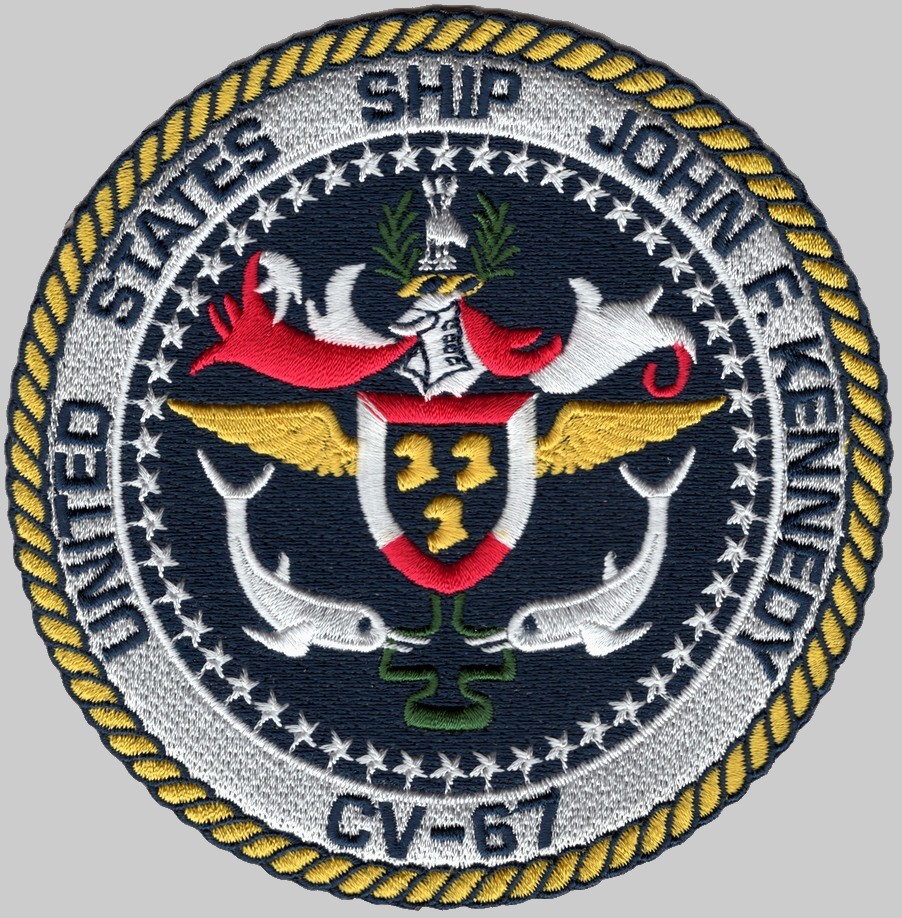 |
||
| | seaforces.org | USN ships start page | |
